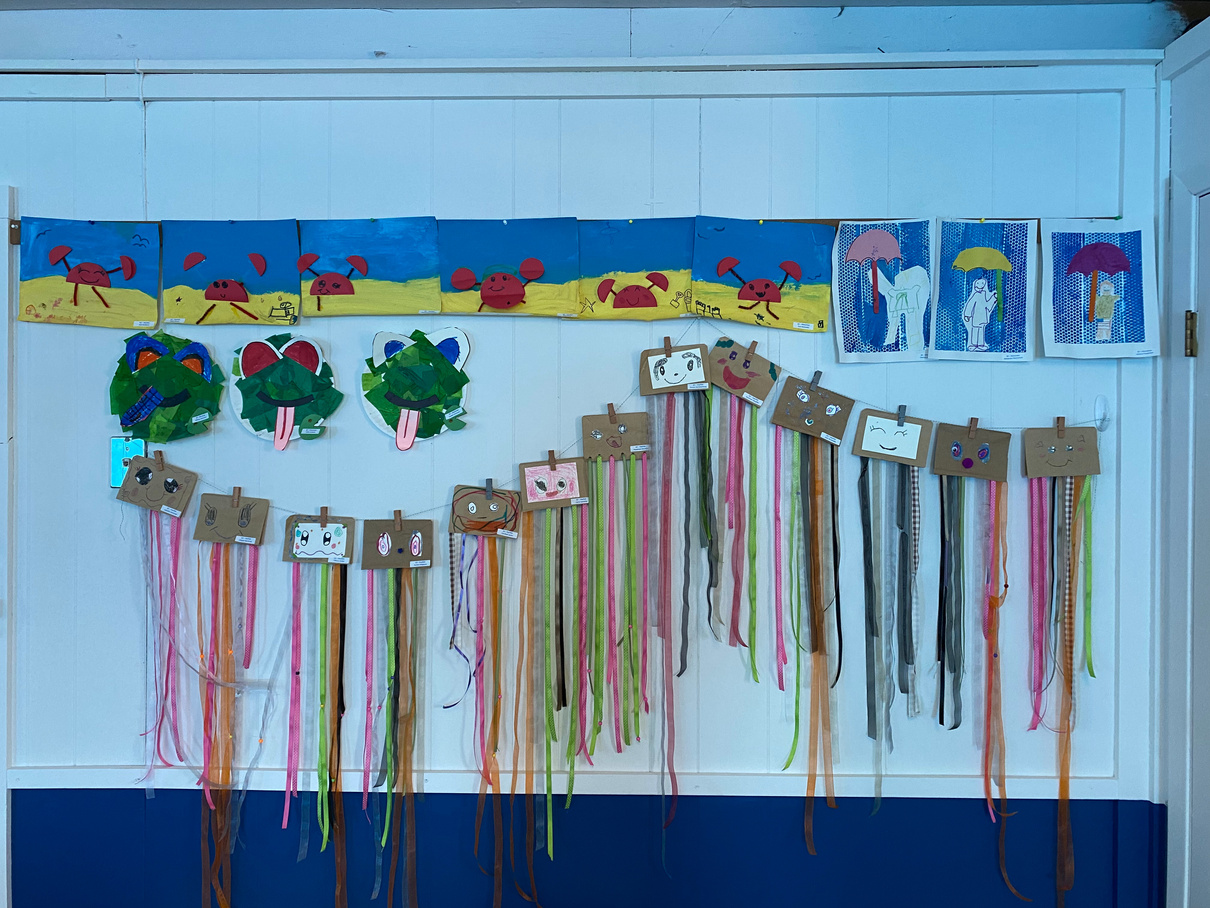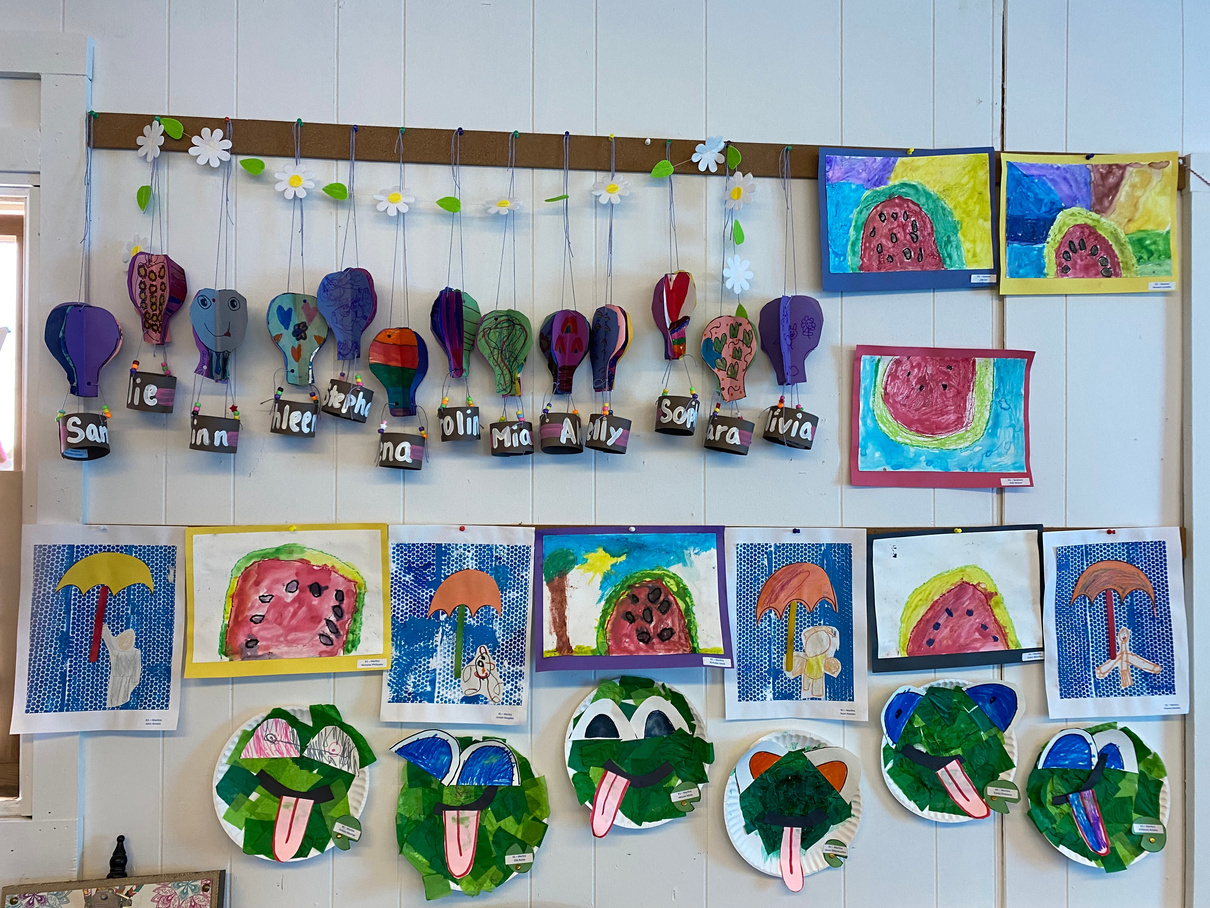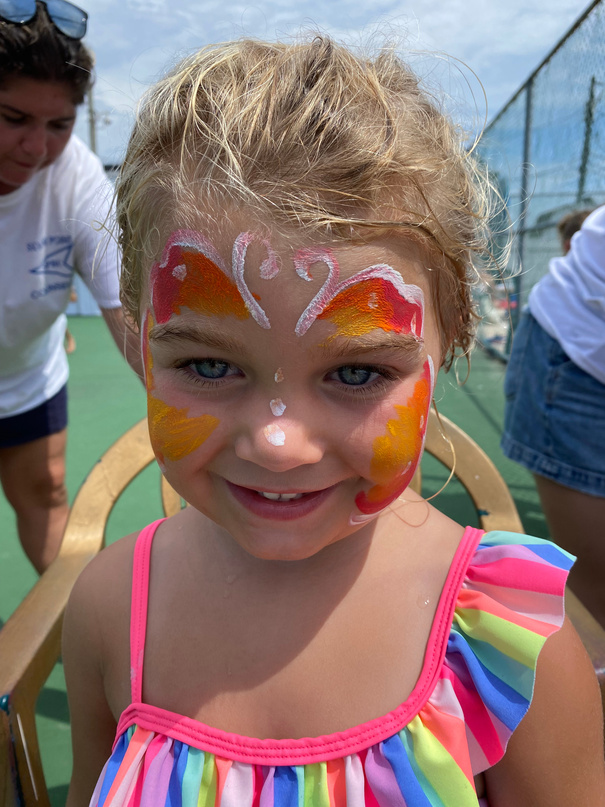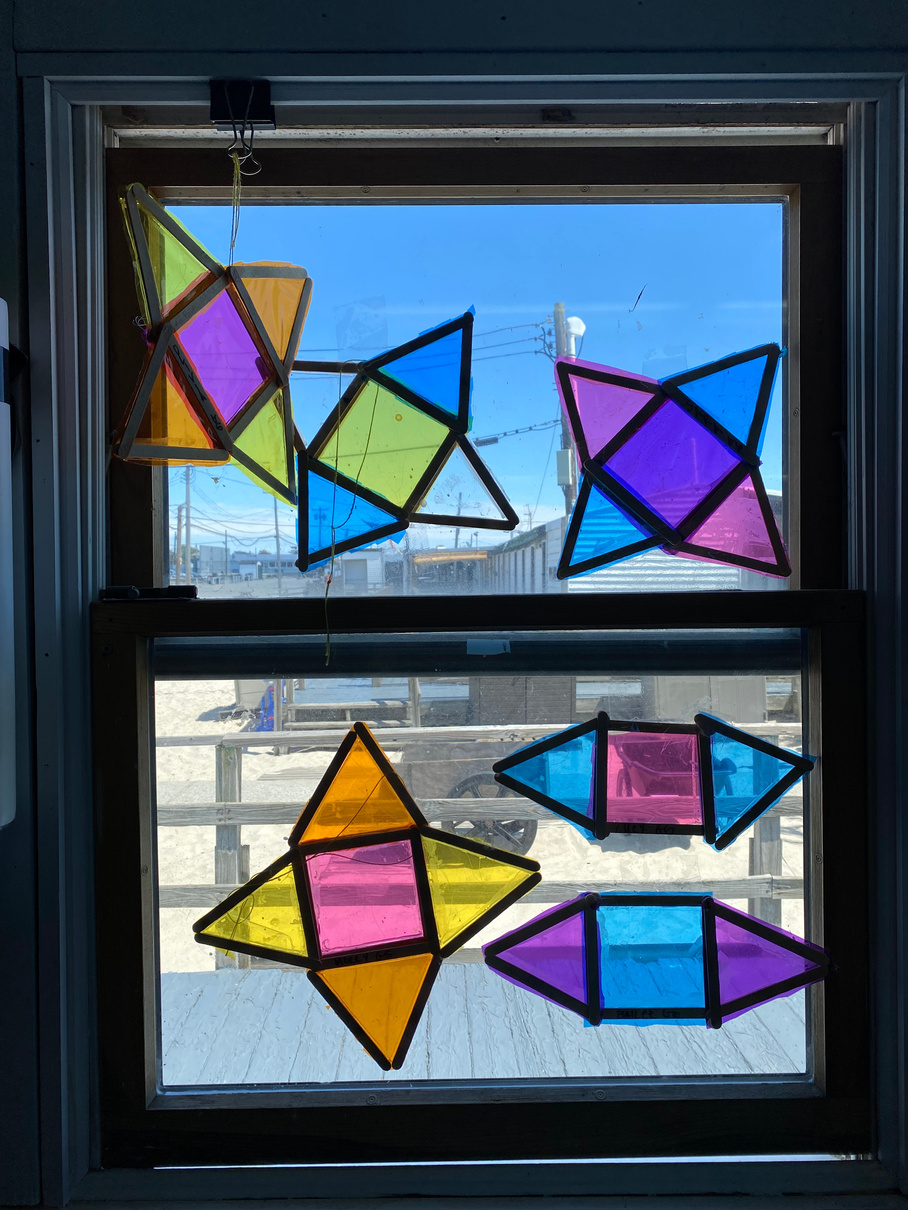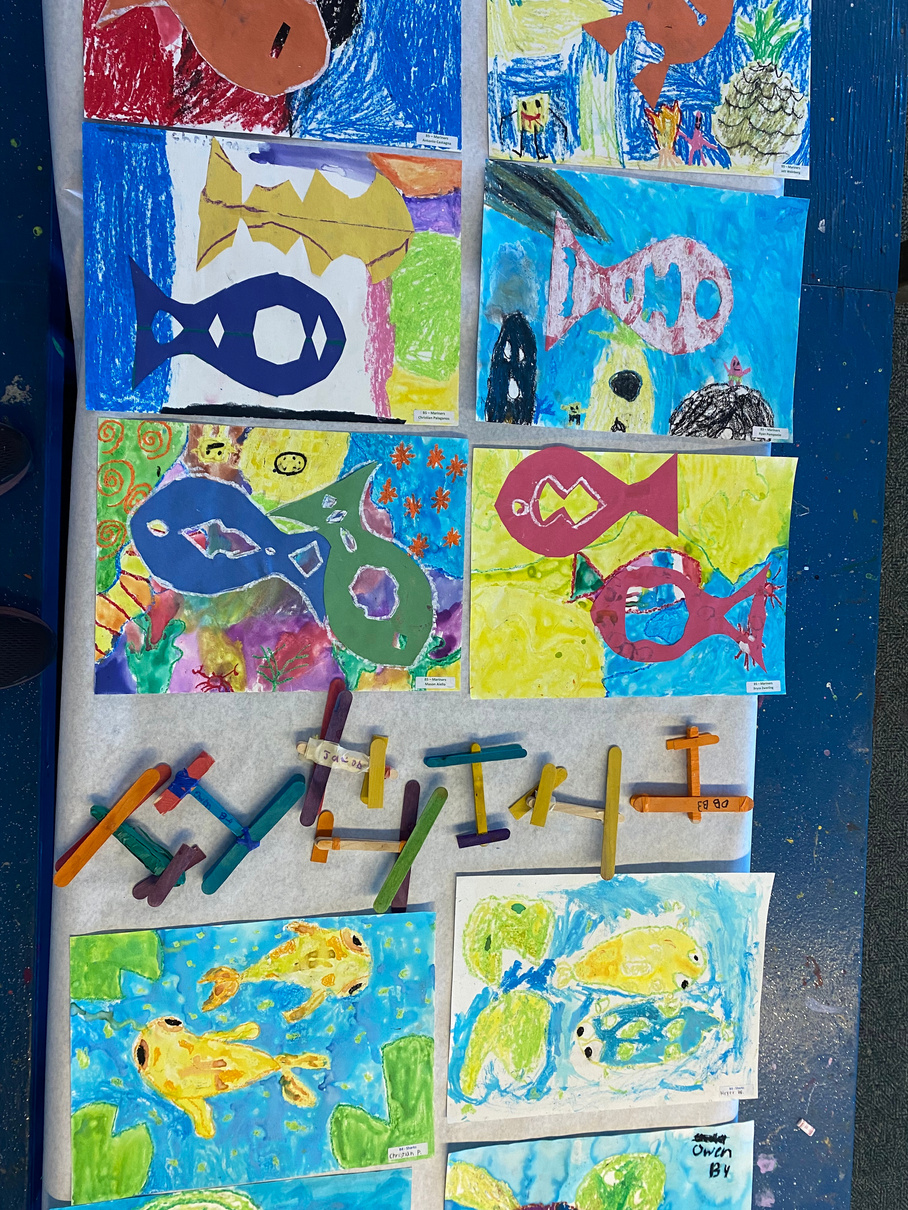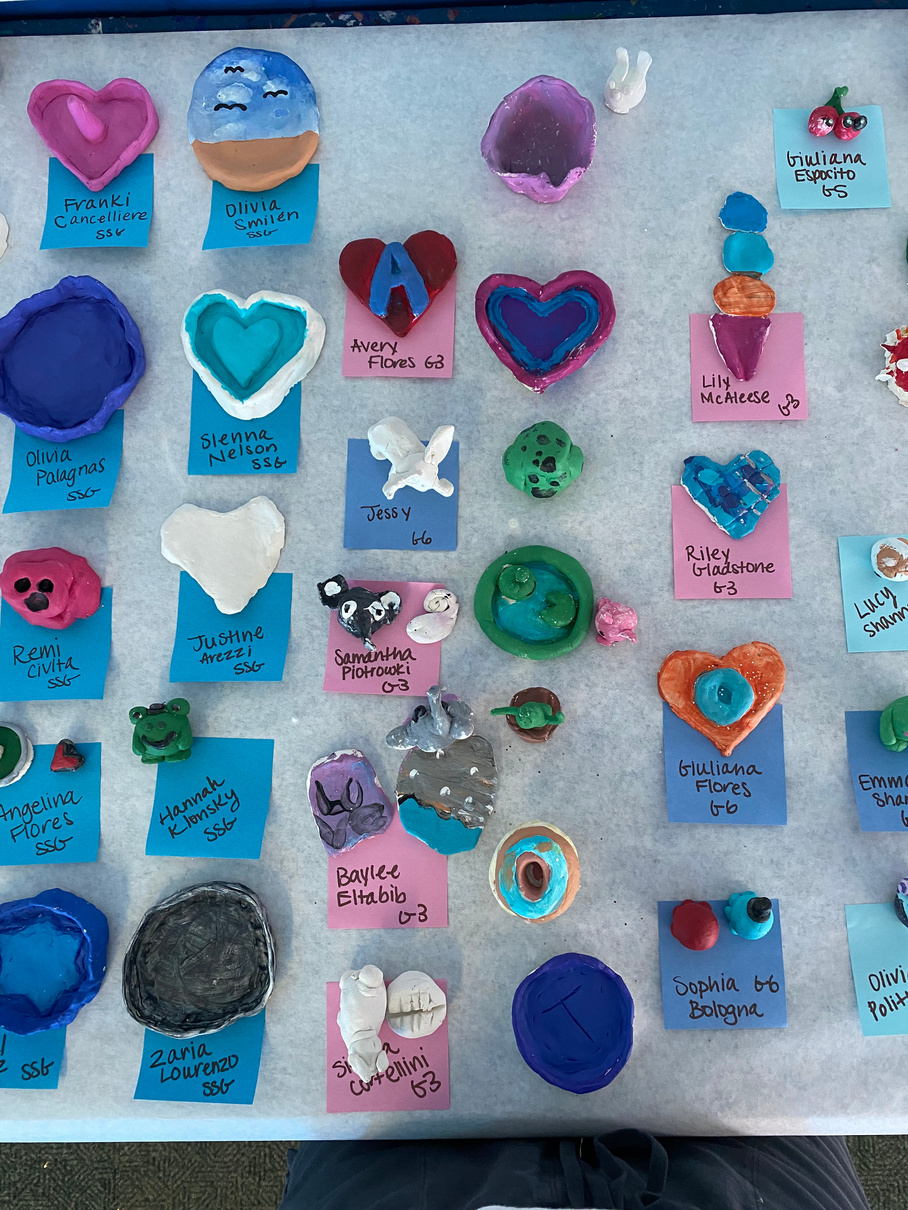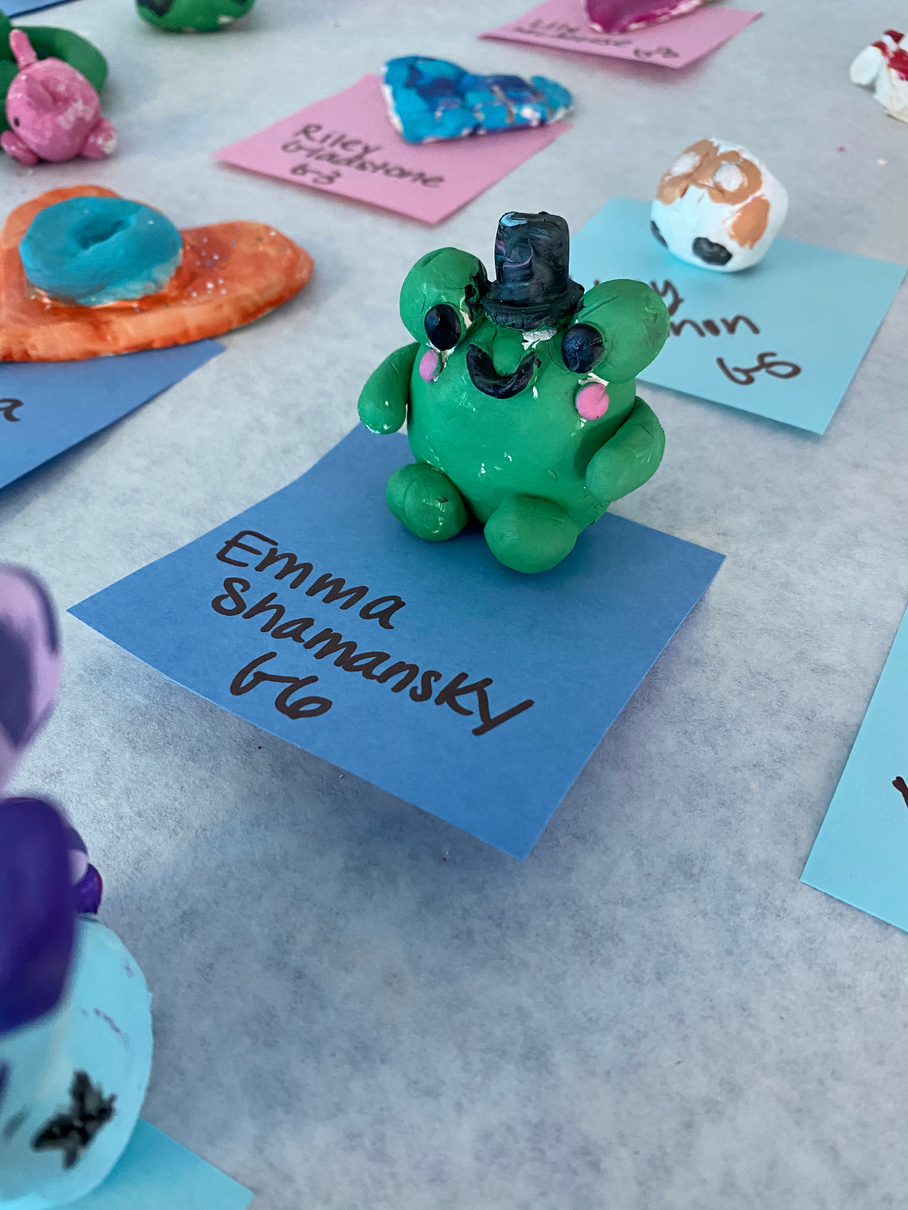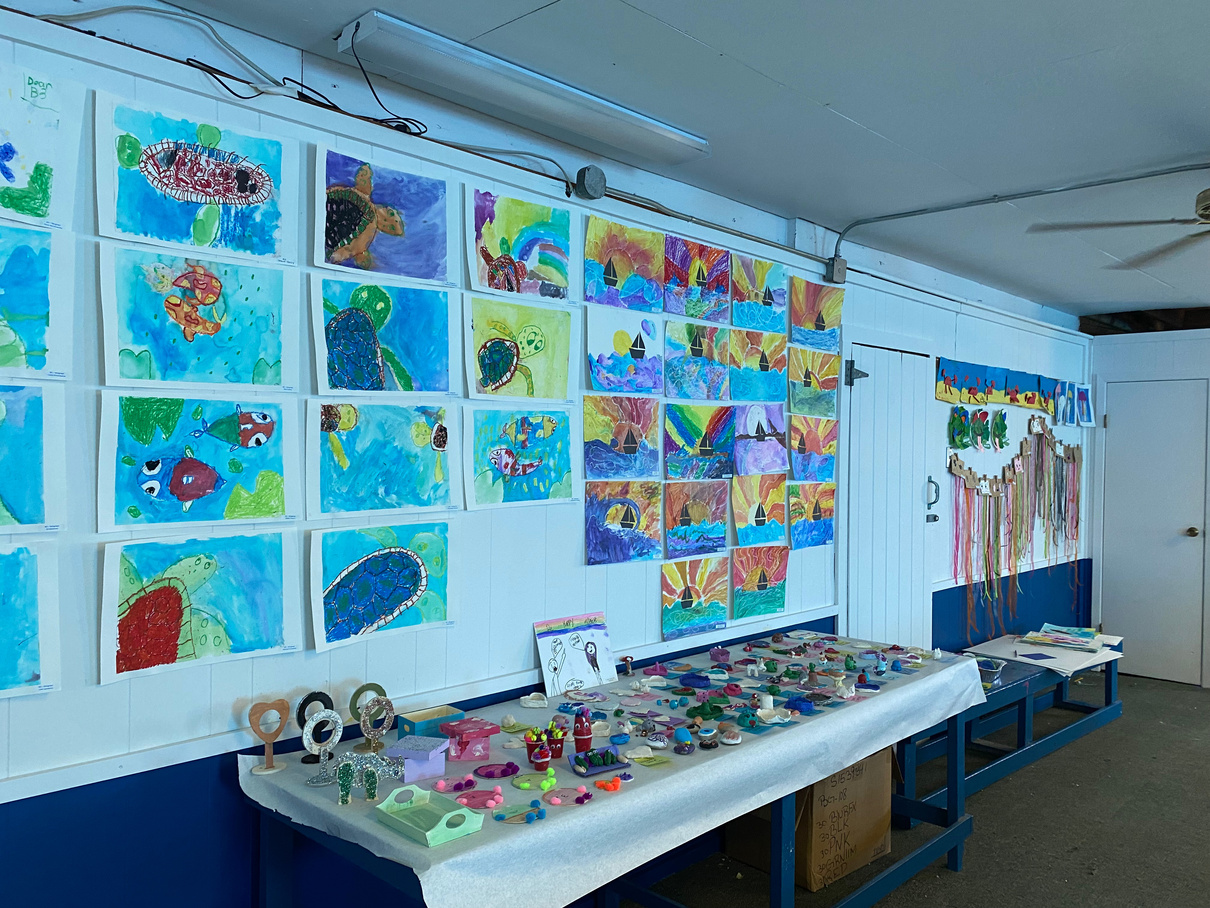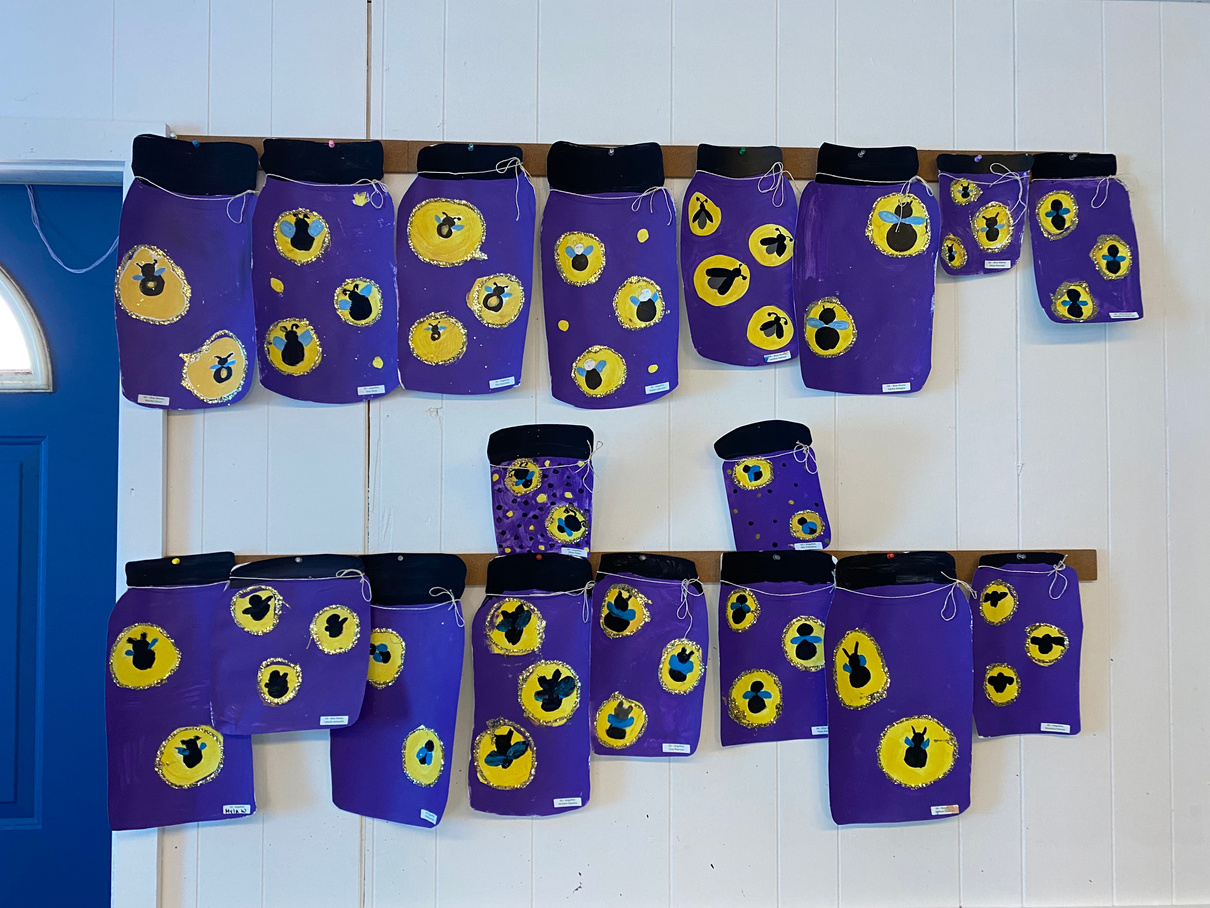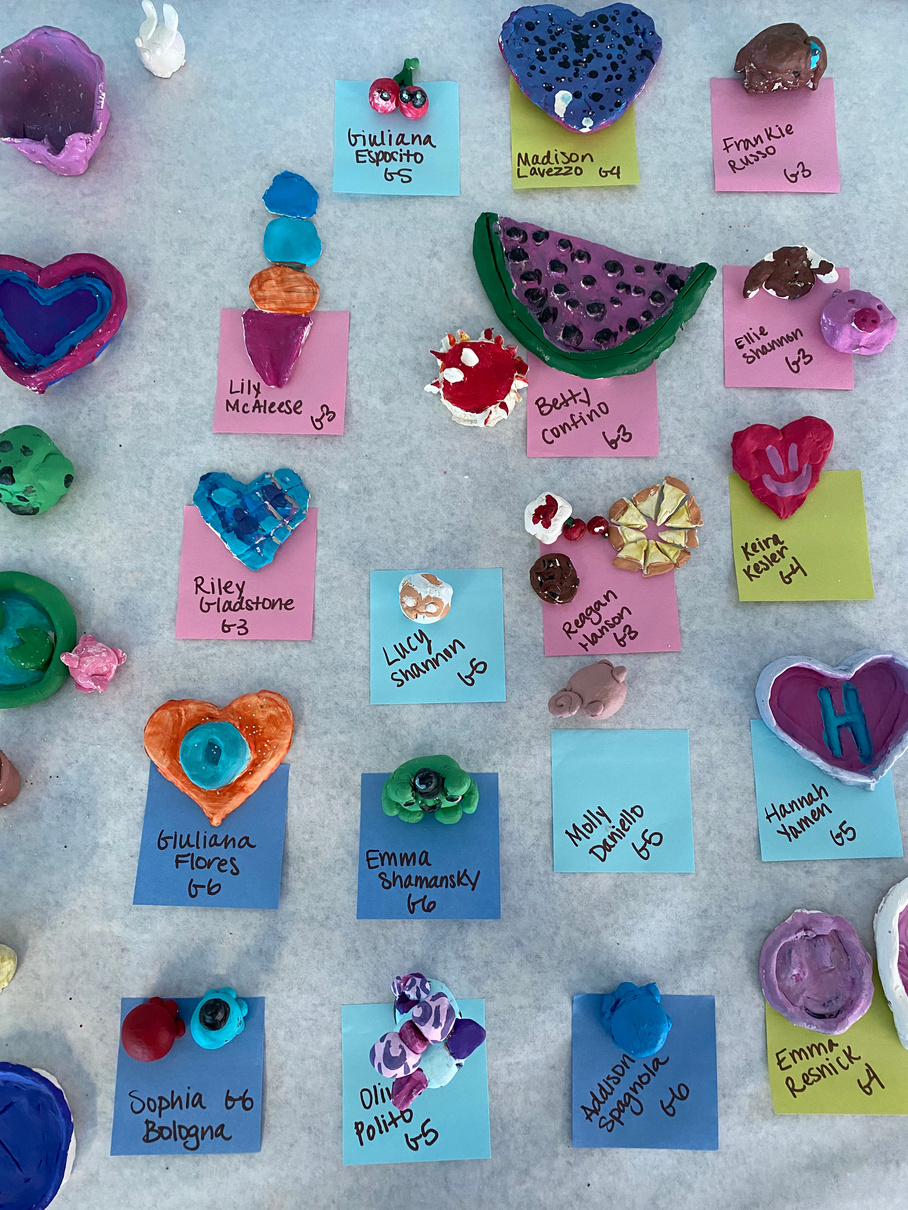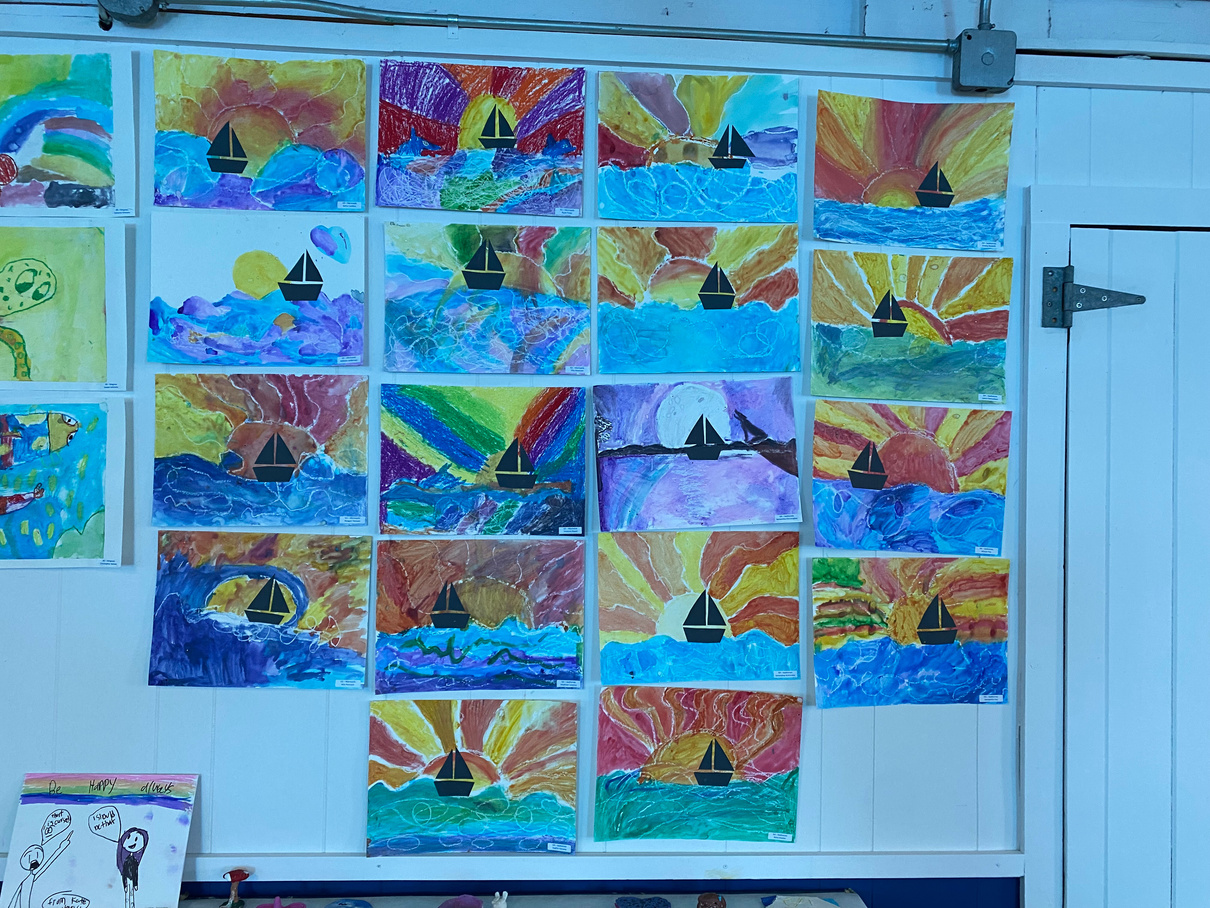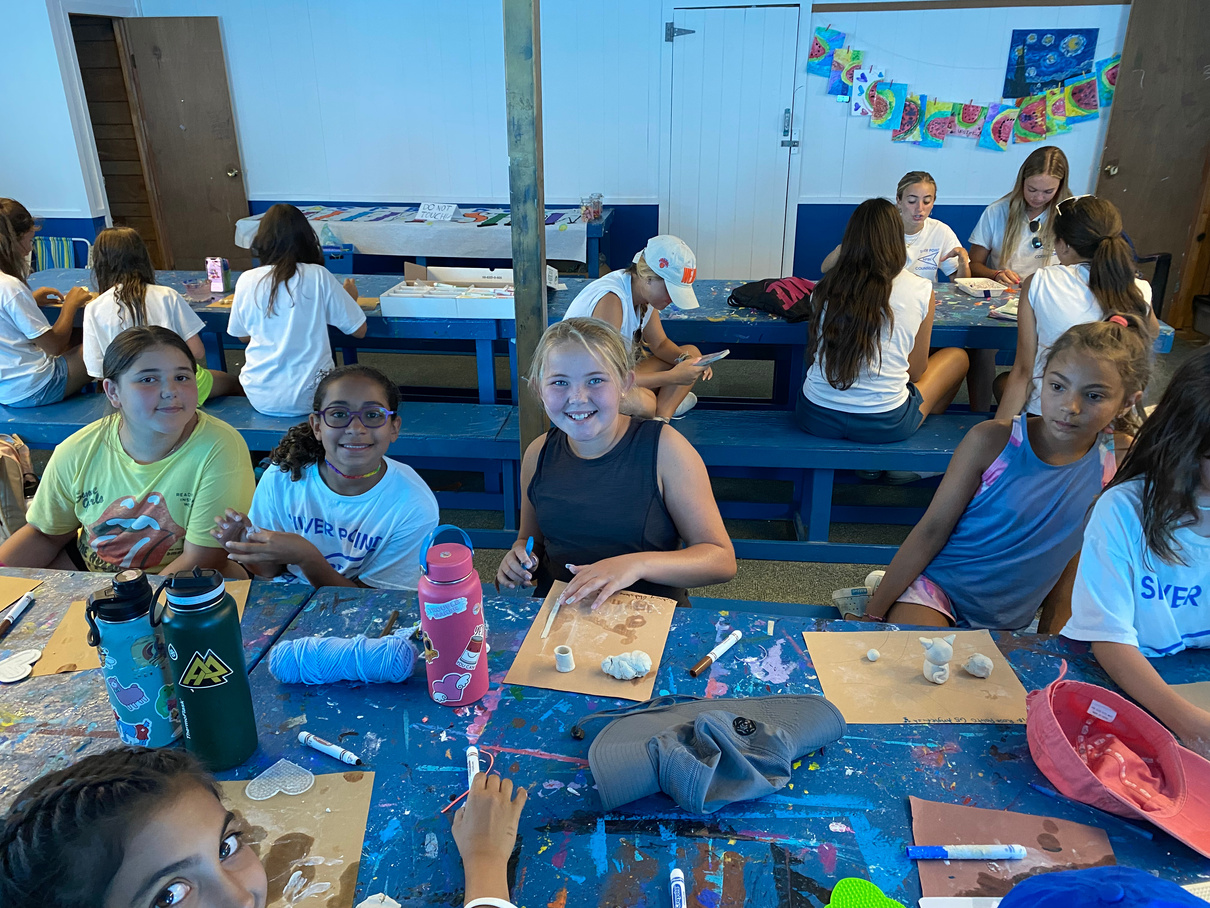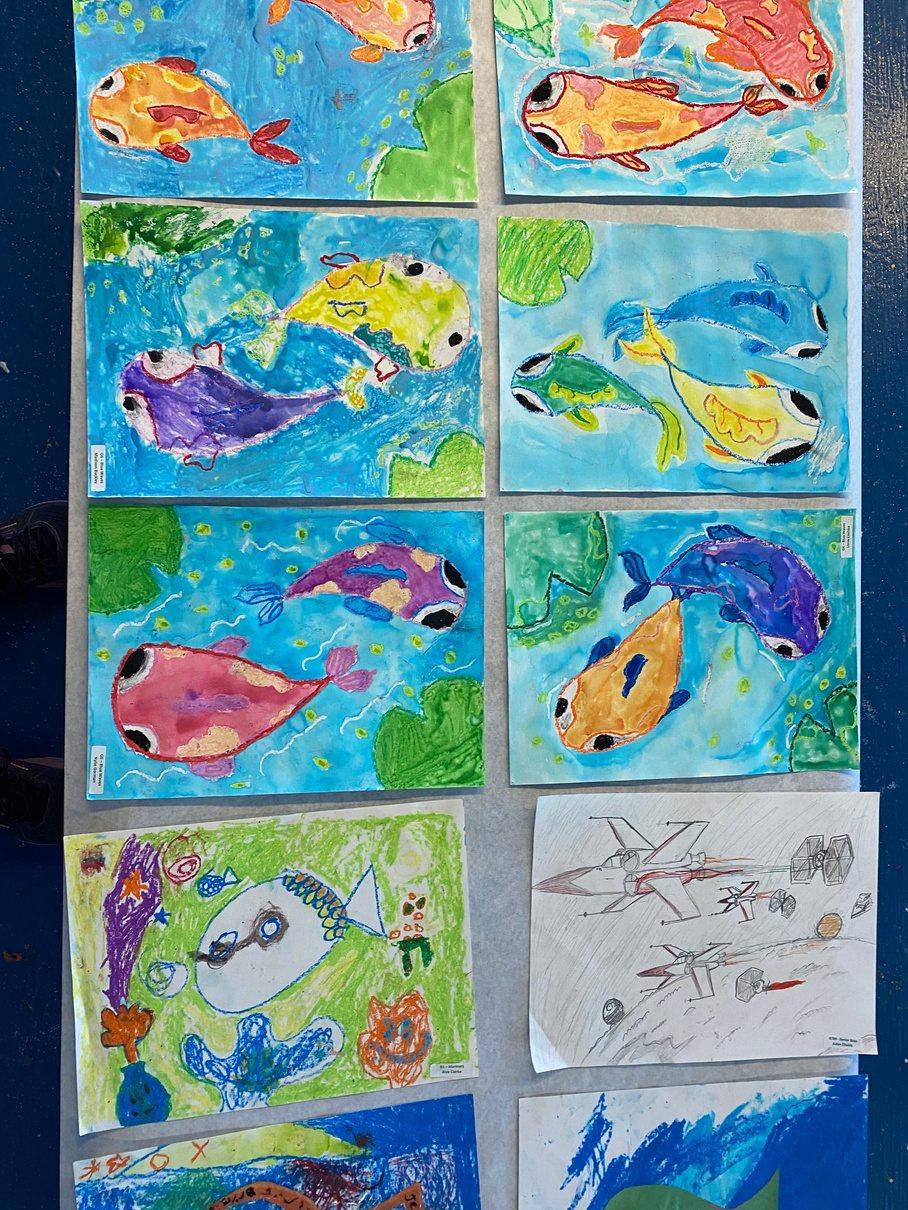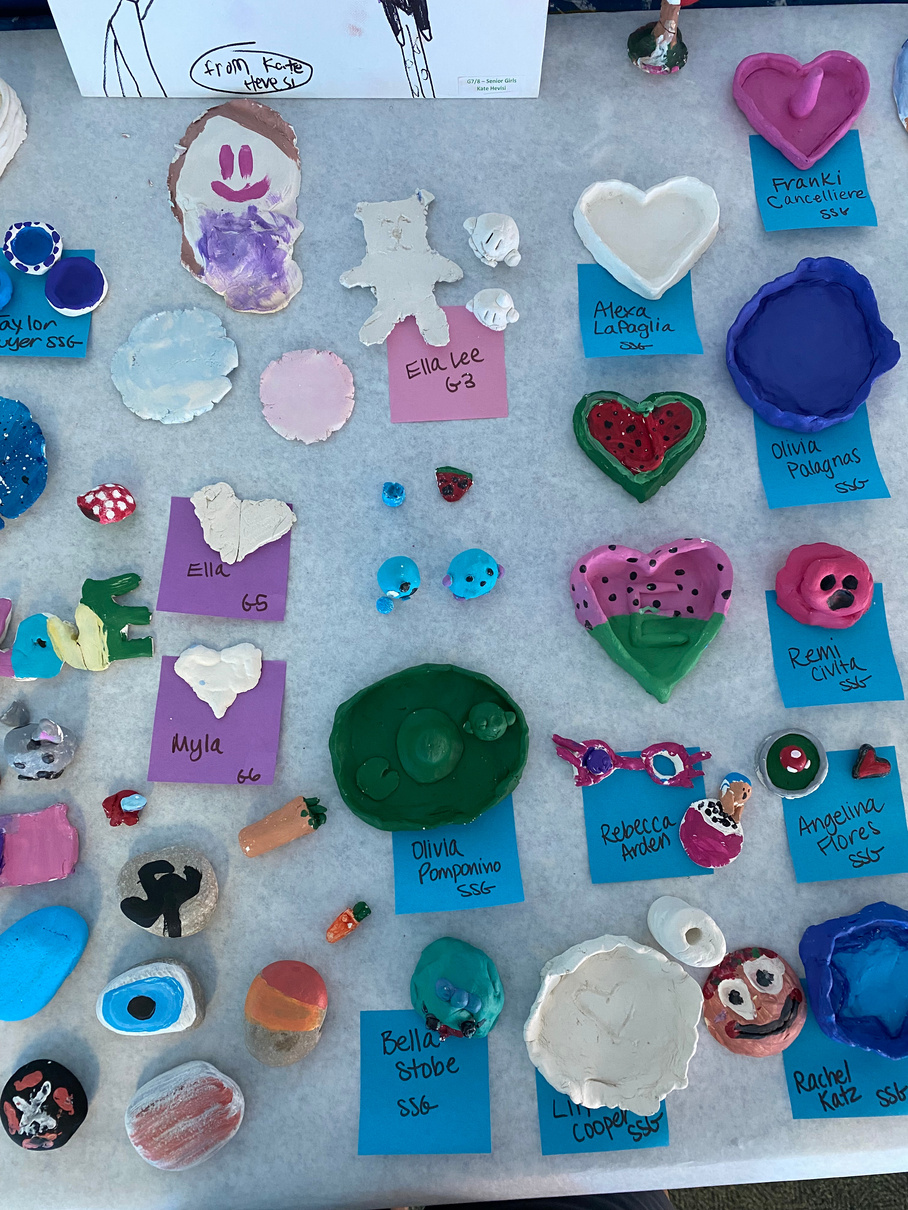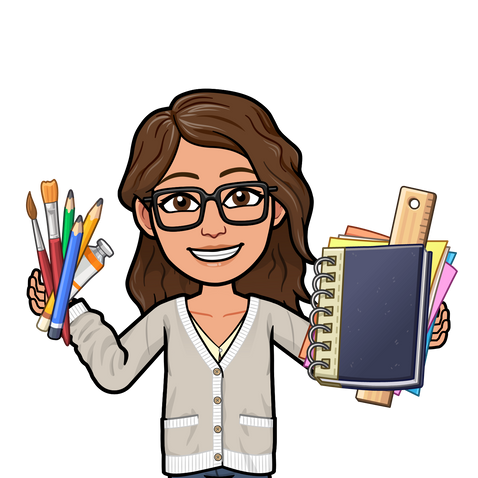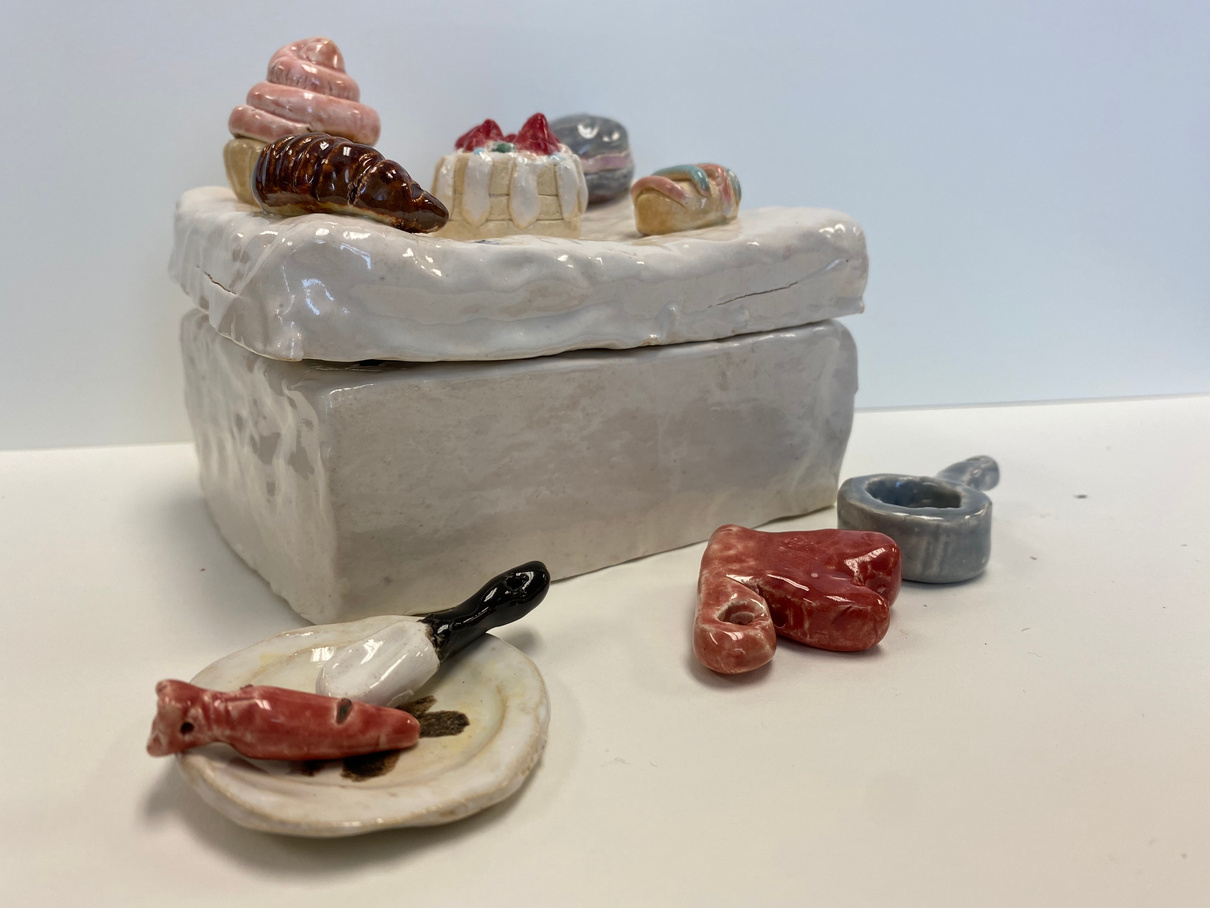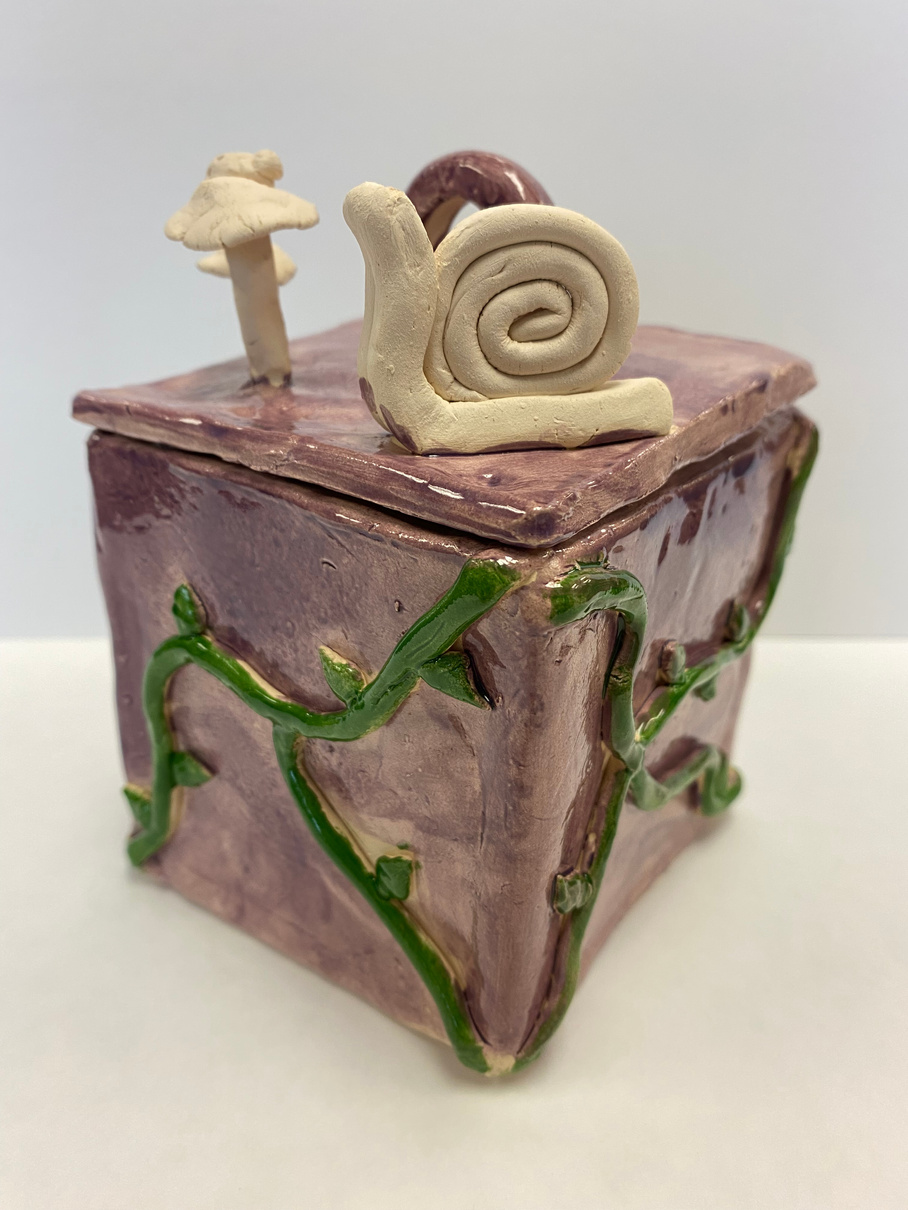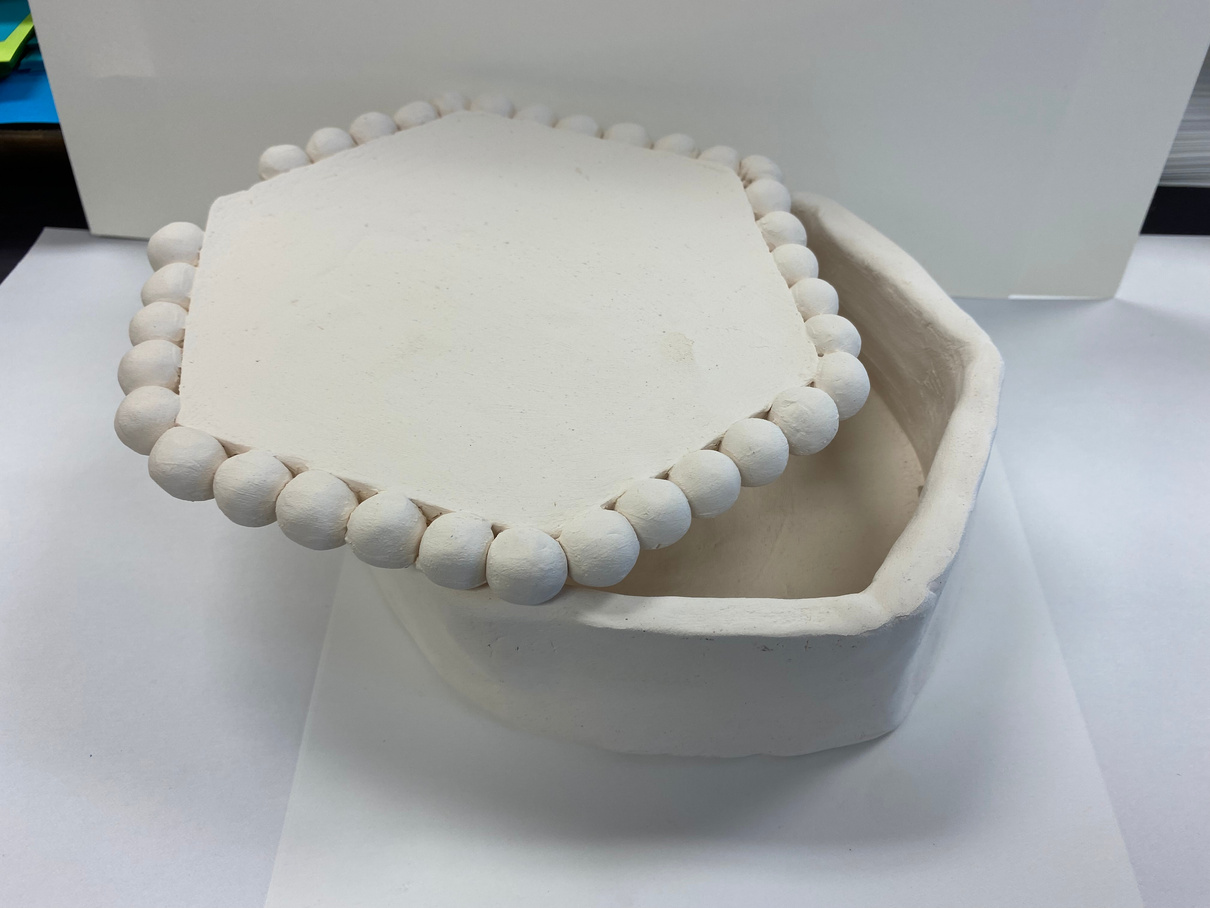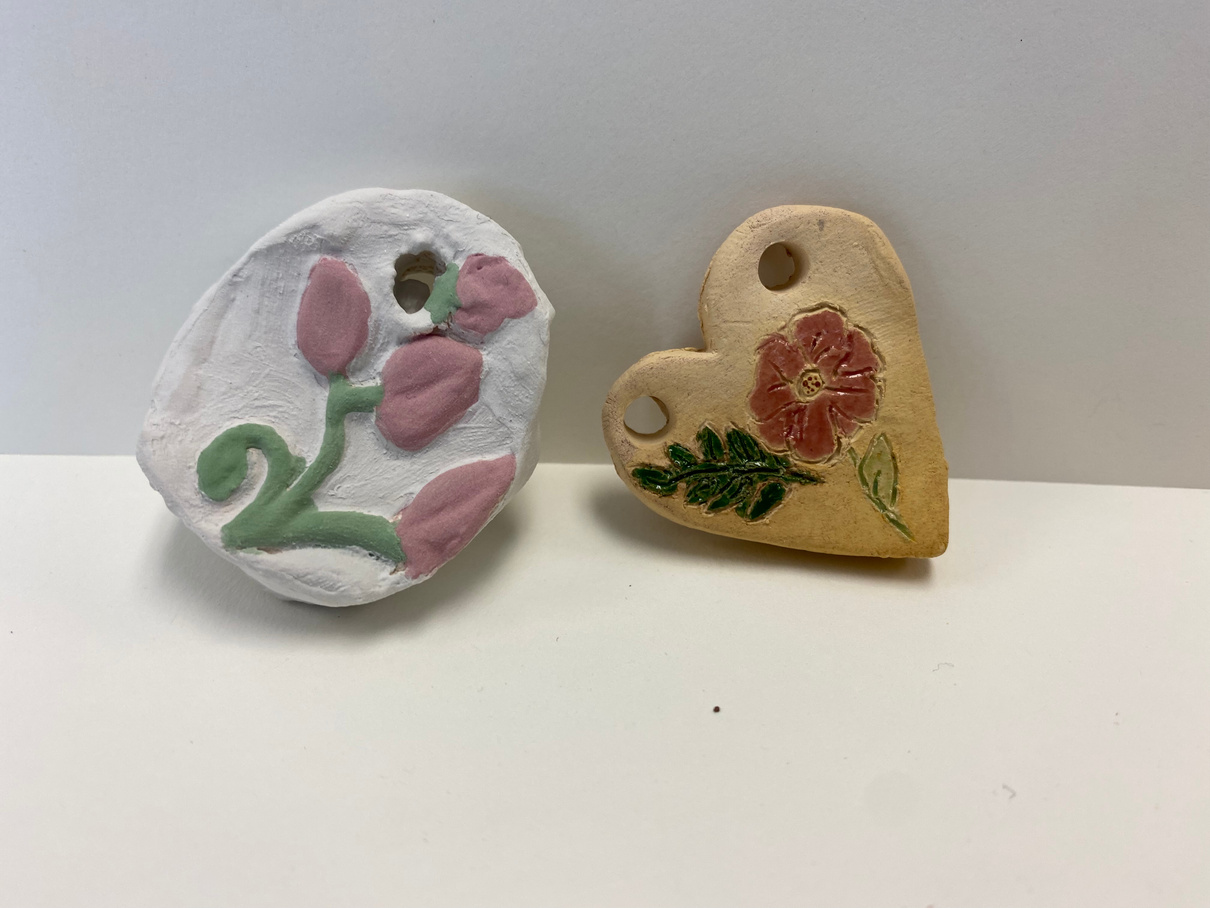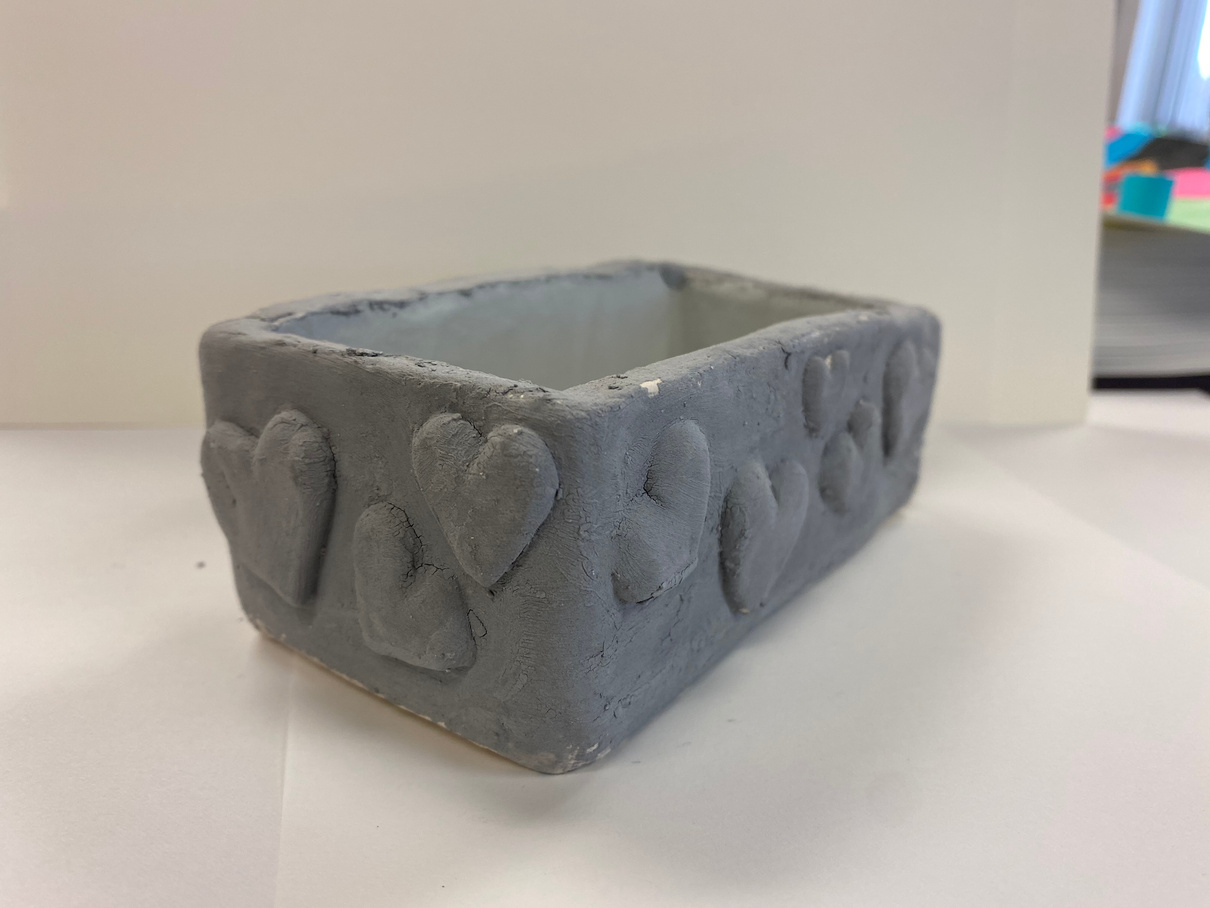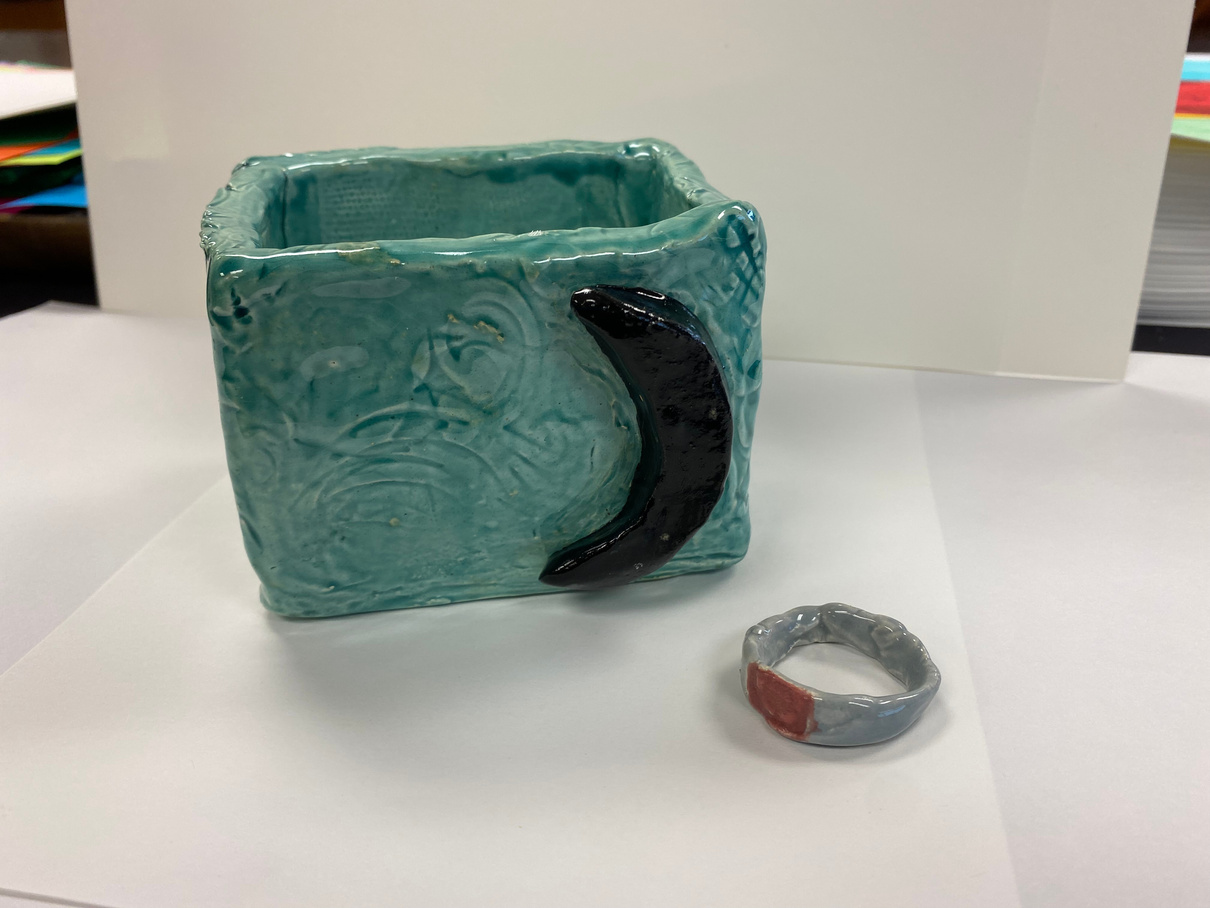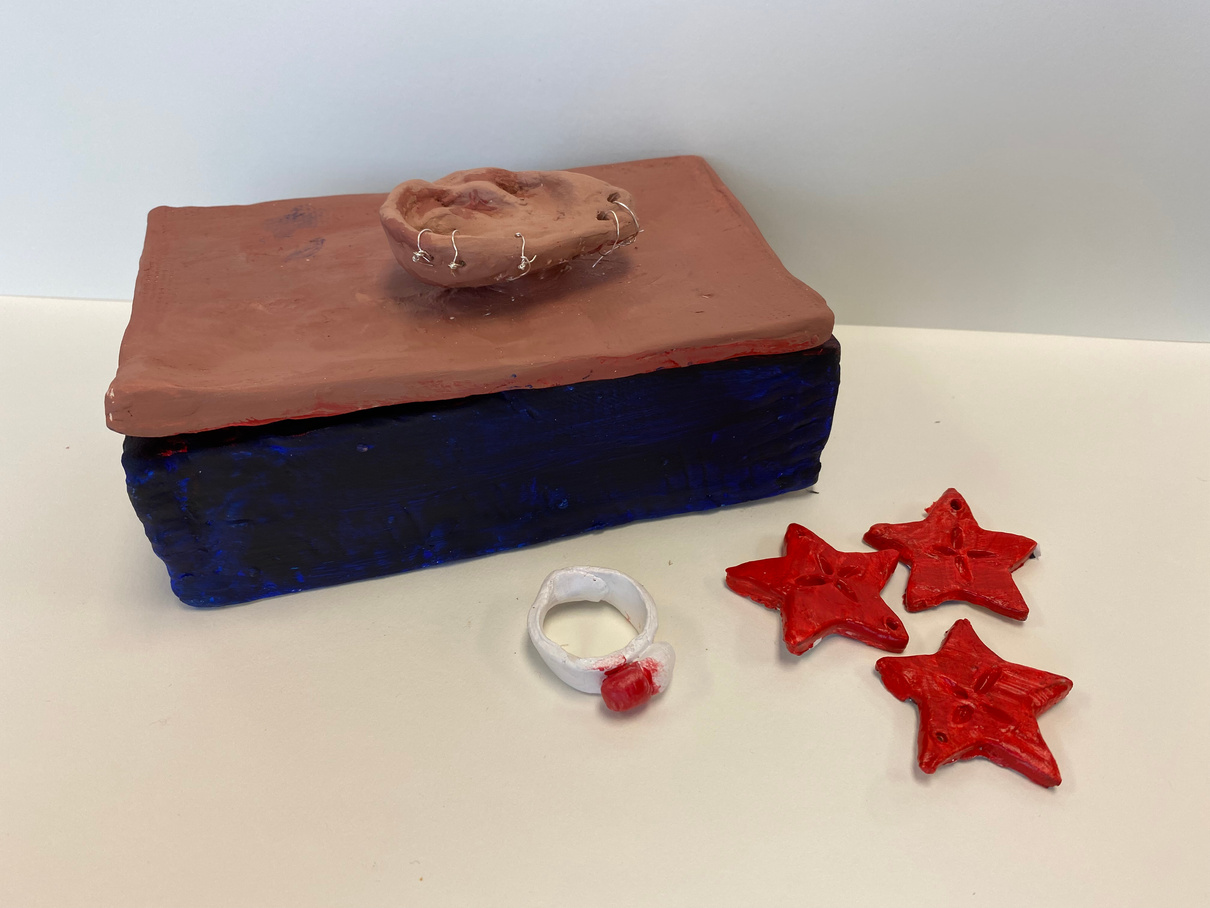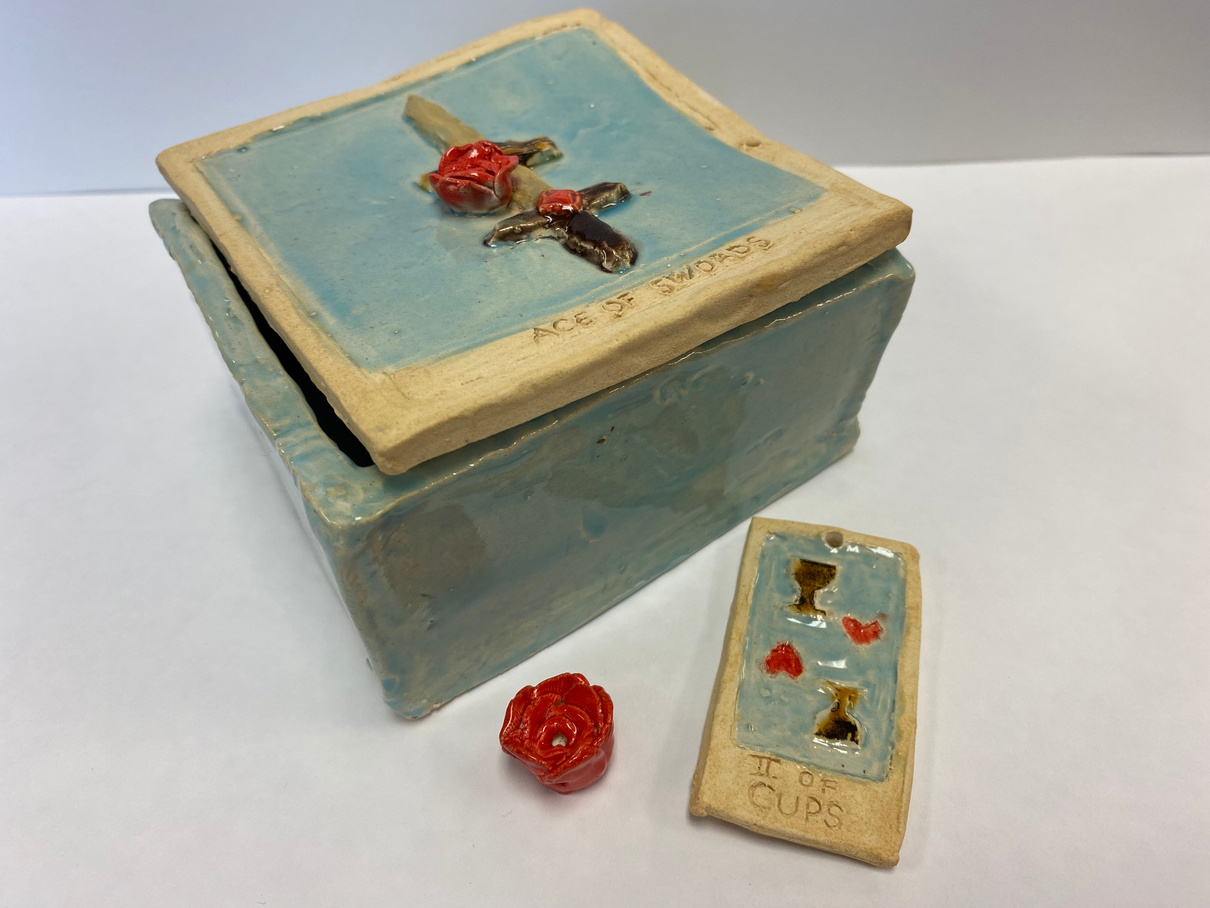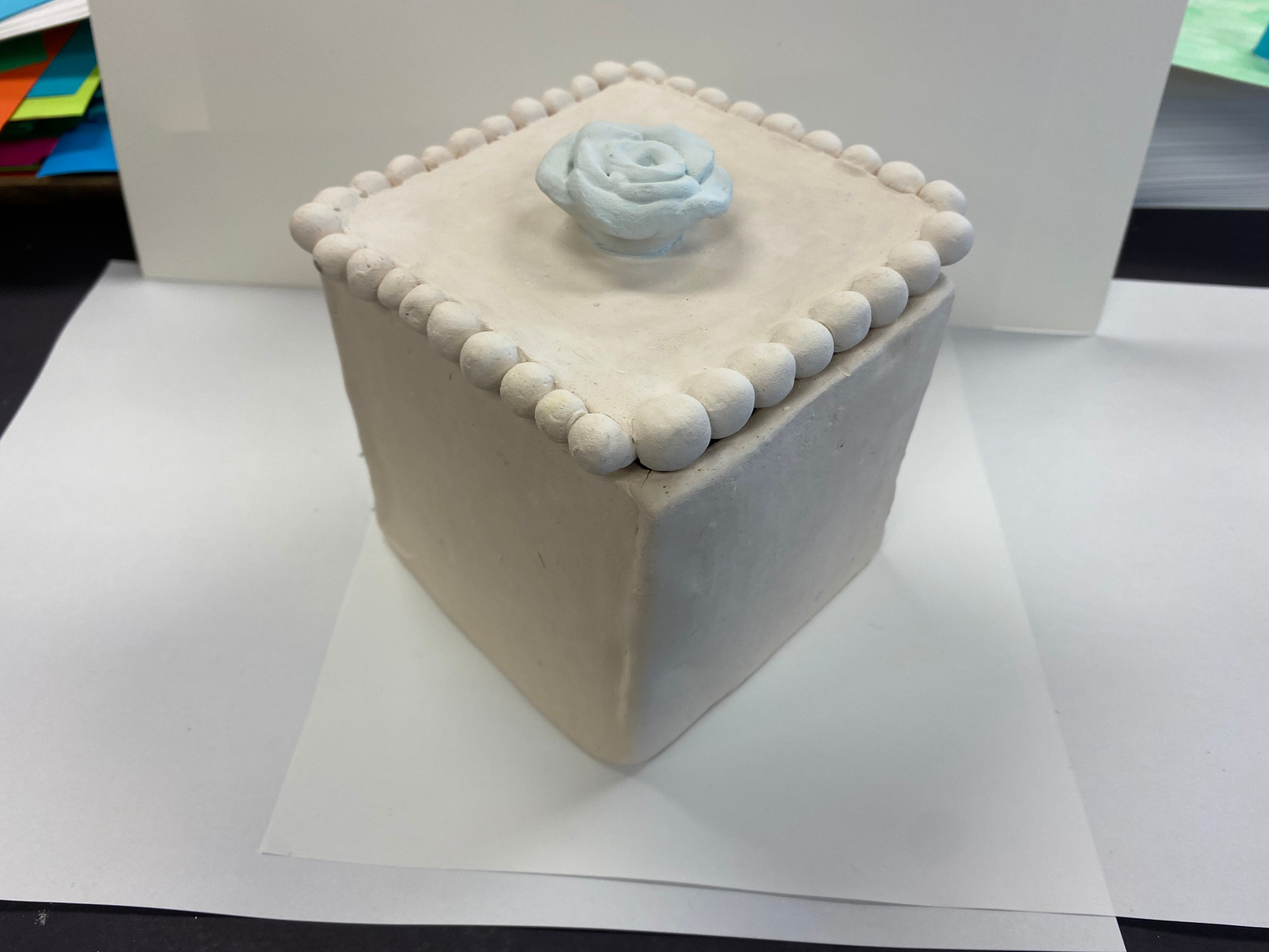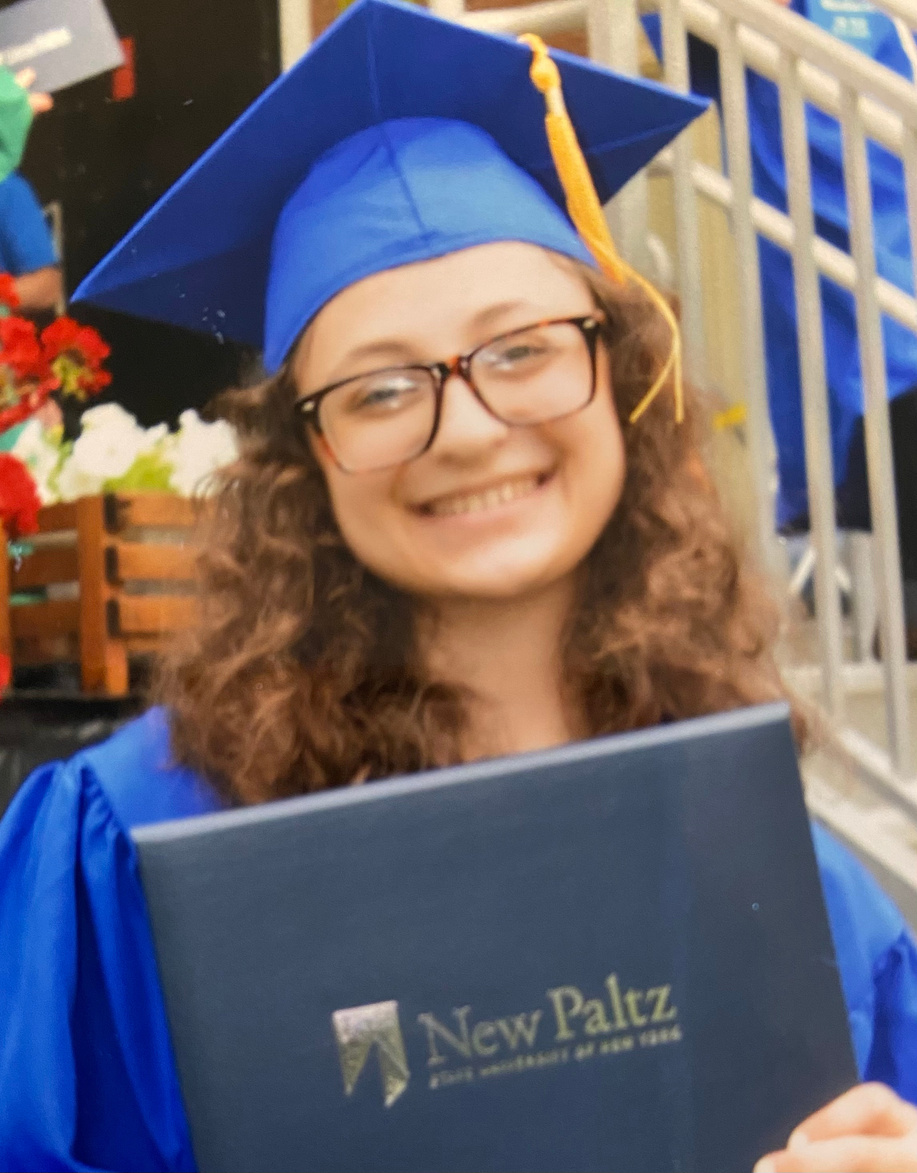
I've had an investment in both the arts and education from an early age. I come from a family of educators, and some of my favorite memories include helping my mom set up her classroom each summer. My love for art started with my own public school education and grew with the help of passionate, encouraging art educators. When I was young, teaching art looked like the most fun job in the world, and now as an art educator I can attest that being an art teacher is fulfilling, exciting, and a challenge I readily accept every day.
About Me
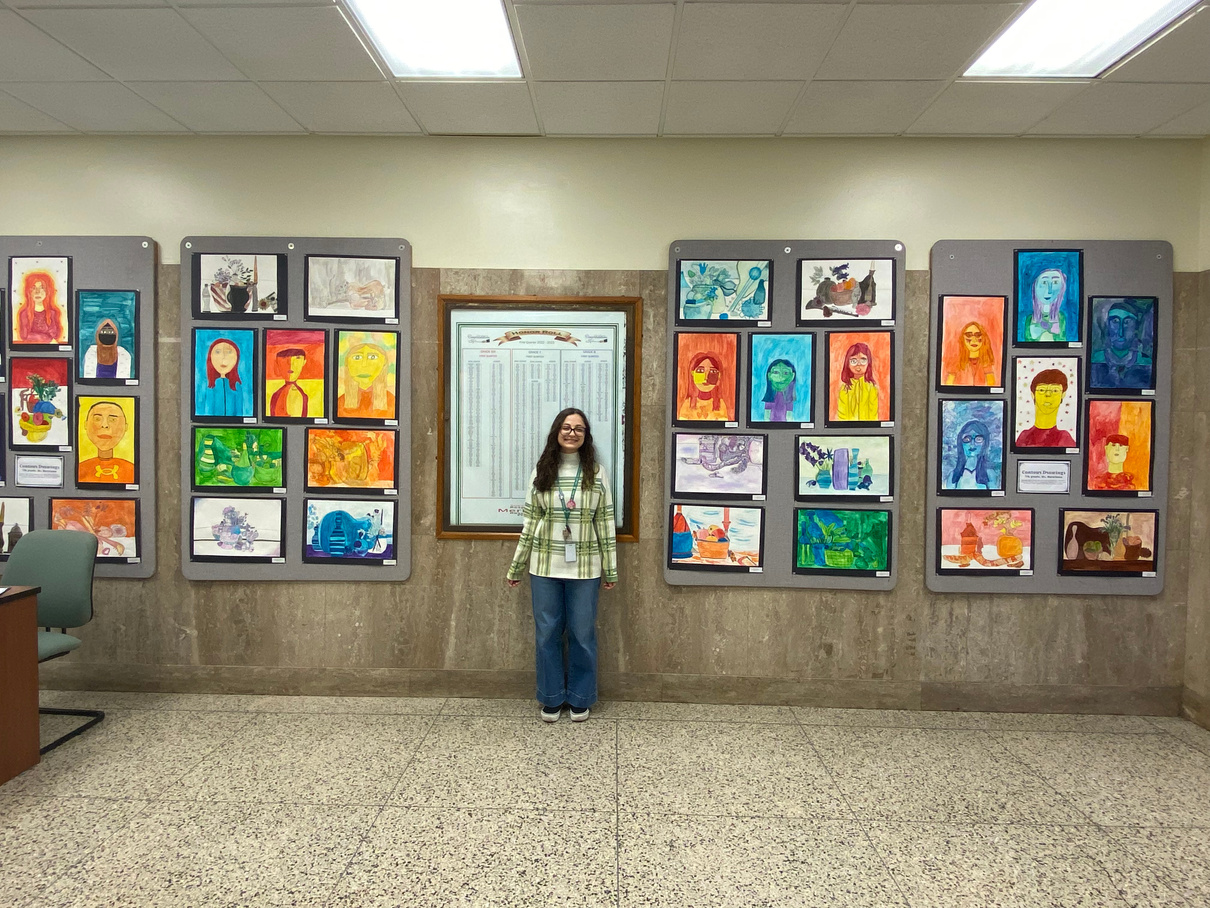
I've been working with children since I was a teenager. I have spent the past 8 summers working with children, from volunteering at Camp Anchor to teaching Arts and Crafts at various summer camps. Whenever I think back to those summers, my mind always goes to the very last day of camp. The first day is usually full of nervous energy and eagerness, but by the end you have formed connections with the children that have a lasting effect. You get to reap the benefits of your hard work and persistent efforts that began on day one. Now as a teacher, during both the most successful and most challenging moments, I keep the spirit of that last day of camp in mind, knowing that the rewards are coming and the small day to day efforts make a big difference in the long run and extend far beyond my classroom.
My name is Gabrielle Marciana, I am an art educator from Wantagh, NY. I am a 2020 graduate of the Fashion Institute of Technology with an Associate's Degree in Illustration and a 2022 graduate of the State University of New York at New Paltz with a Bachelor's Degree in Visual Arts Education. I am certified to teach K-12 Visual Art in the state of New York.
I started my teaching career in the Farmingdale Public School District as a student teacher and have continued my career in the district this 2022-2023 school year as an Art Teacher Leave Replacement at both Weldon E. Howitt Middle School and Farmingdale Senior High School. I have experience teaching 6th and 7th grade Art as well as Studio Art, Drawing and Painting, Digital Illustration, and Fashion Design at the high school level. I also have student teaching experience in Studio Art, Ceramics, Media Arts, Advertising, and Film and Video at the high school level.
My Artwork
Painting
- Acrylic
- Oil
- Watercolor
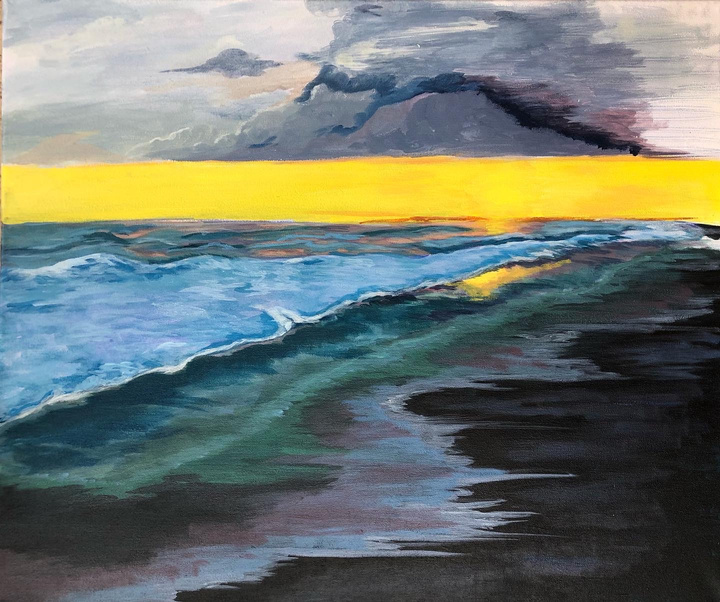
Home, 20"x24", acrylic on canvas, 2021

Out There, 20"x24",acrylic on canvas, 2022
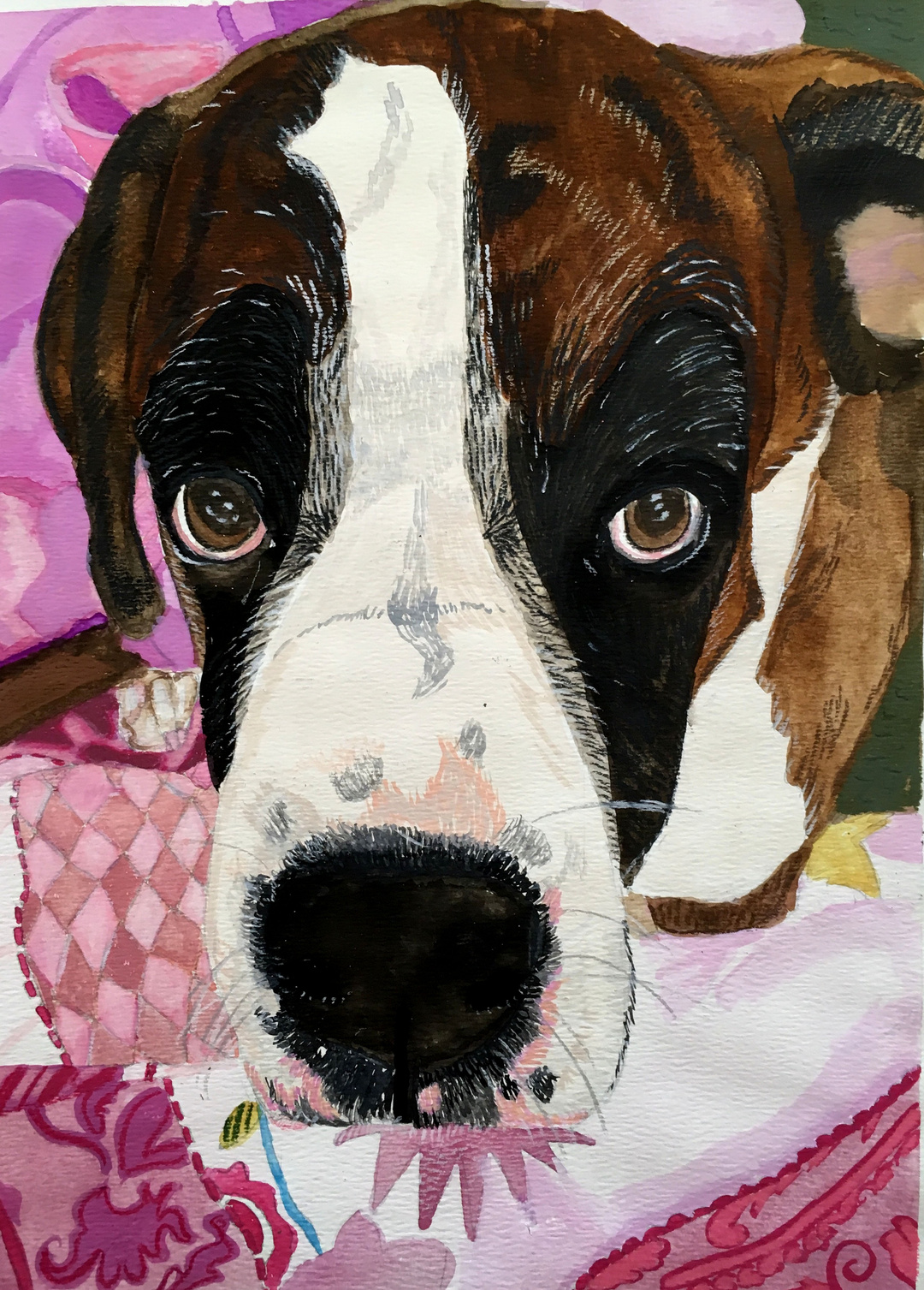
Sonny, 18"x12", watercolor on paper, 2018
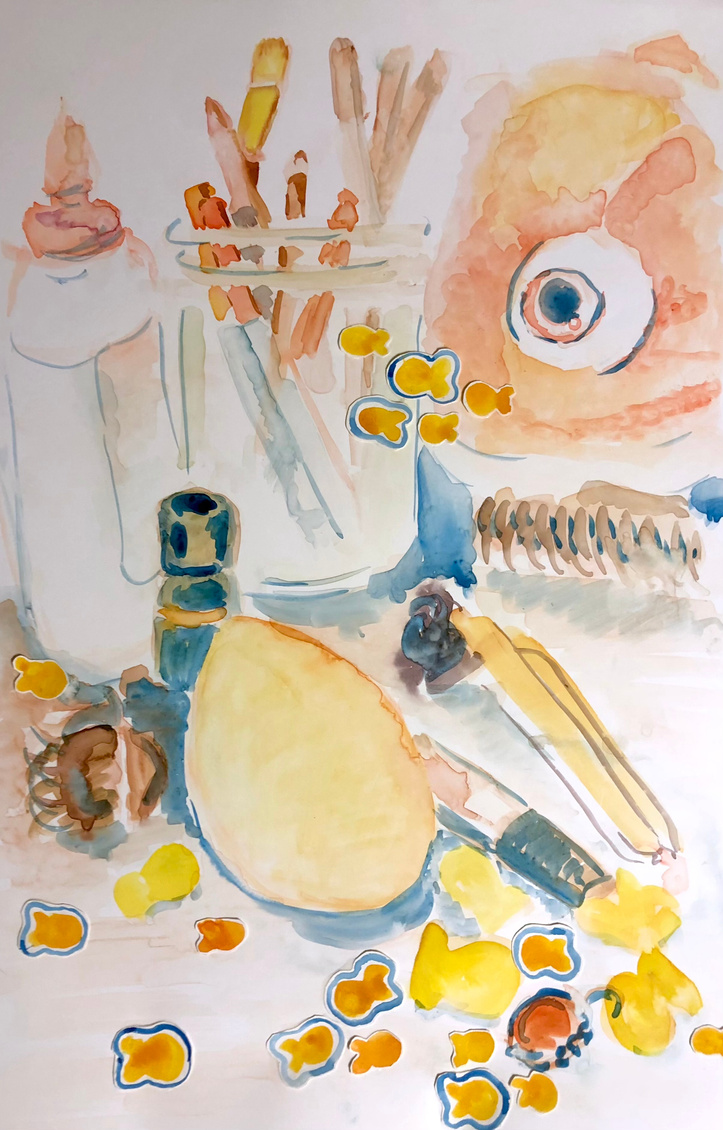
Junk I, 18"x12", watercolor and collage on Yupo paper, 2022
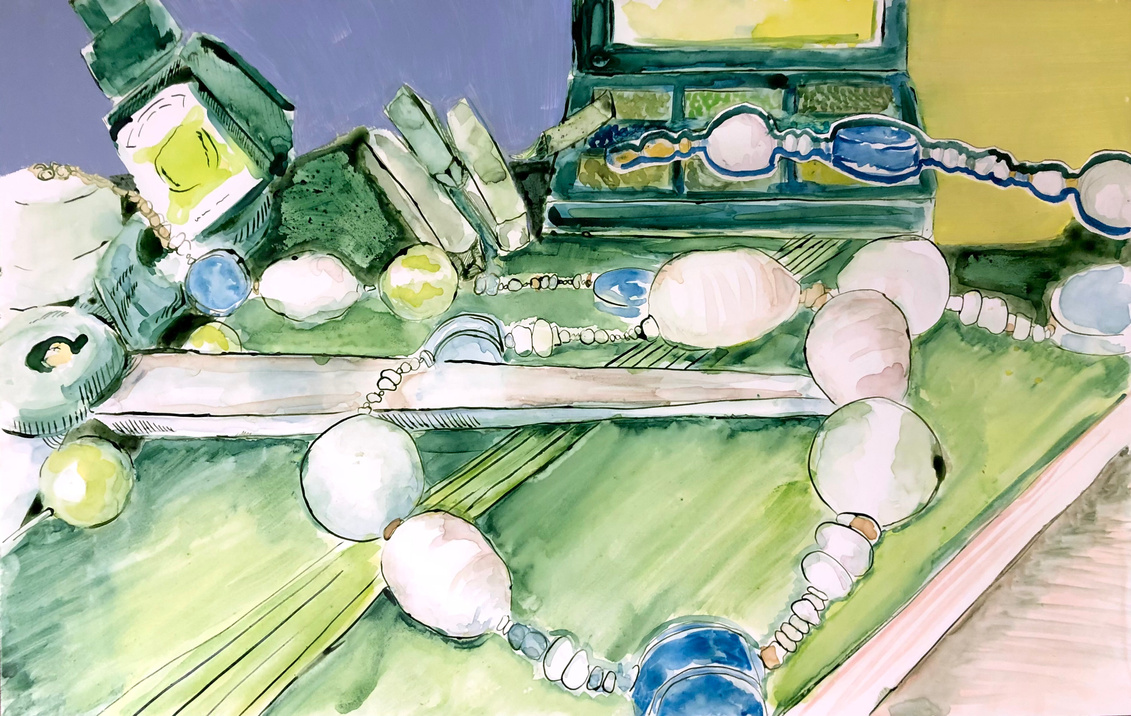
Junk III, 12"x18", watercolor, ink, and collage on Yupo paper, 2022

Hearth, 20"x24", acrylic on canvas, 2021
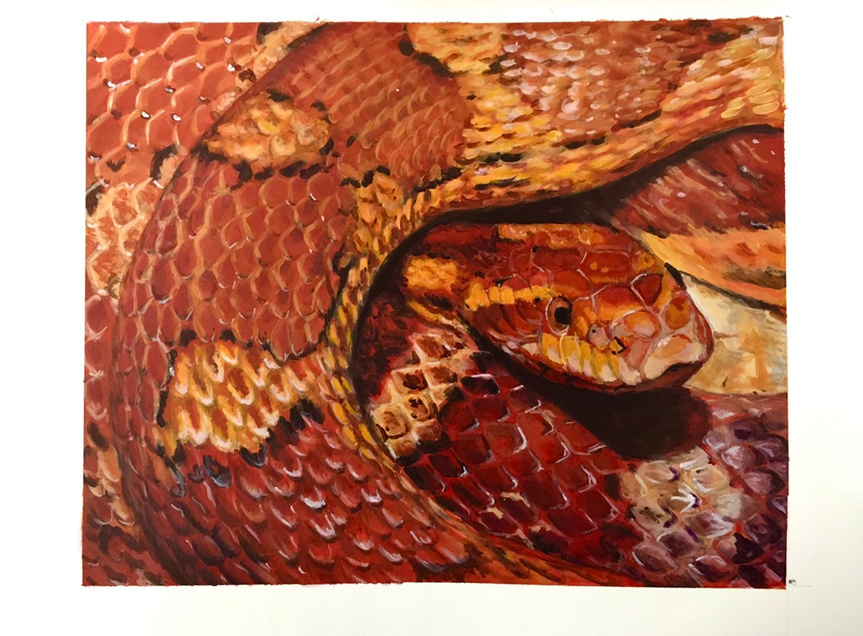
Snake, 12"x16", acrylic on illustration board, 2019
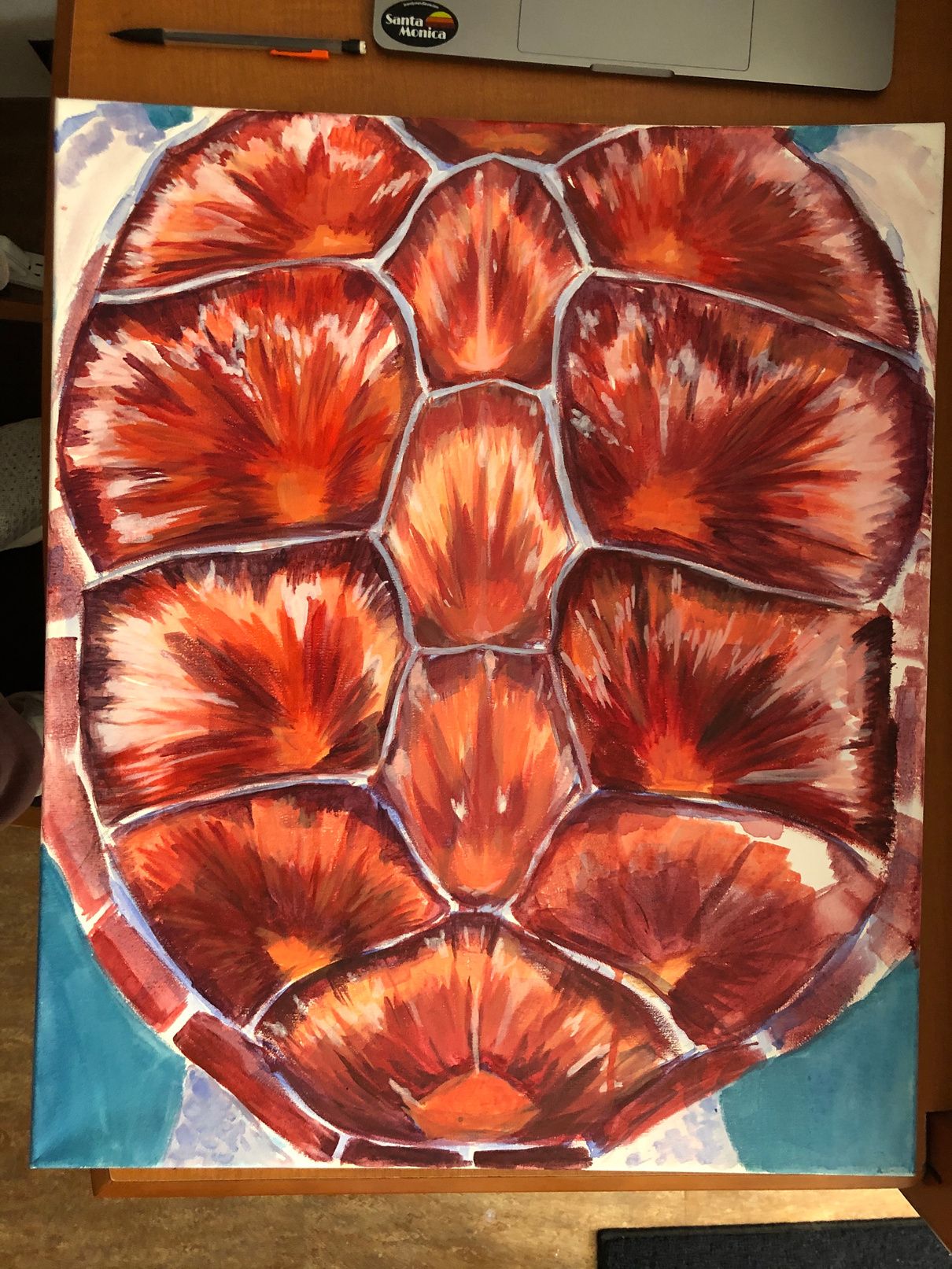
Shell, 24"x20", acrylic on canvas, 2022
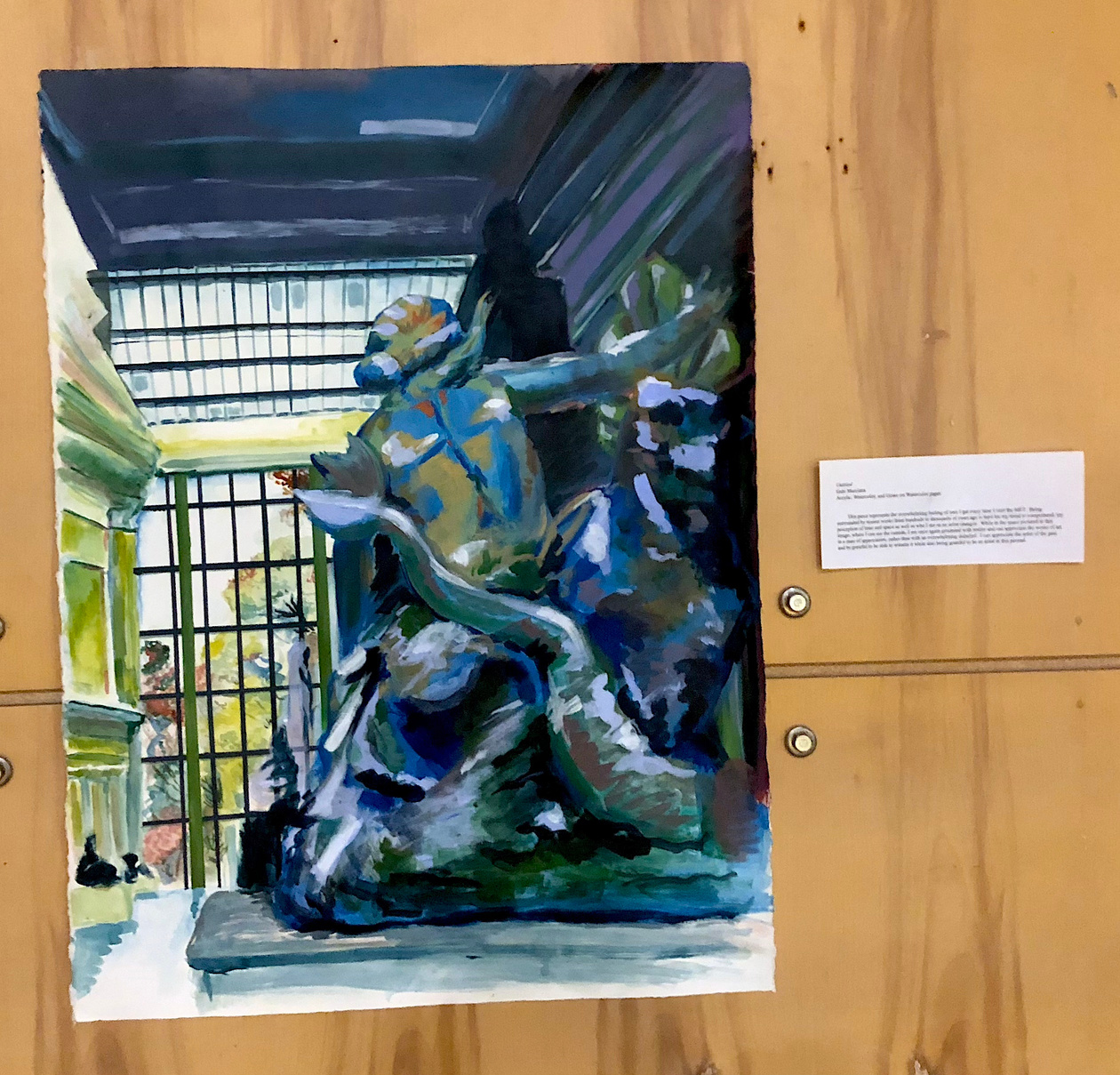
Springtime at the MET, 30"x24", acrylic and watercolor on paper, 2022

Junk II, 12"x18", watercolor, ink, acrylic, and collage on Yupo paper, 2022

Drawing
- Pastel
- Ink
- Colored Pencil
- Graphite
- Charcoal
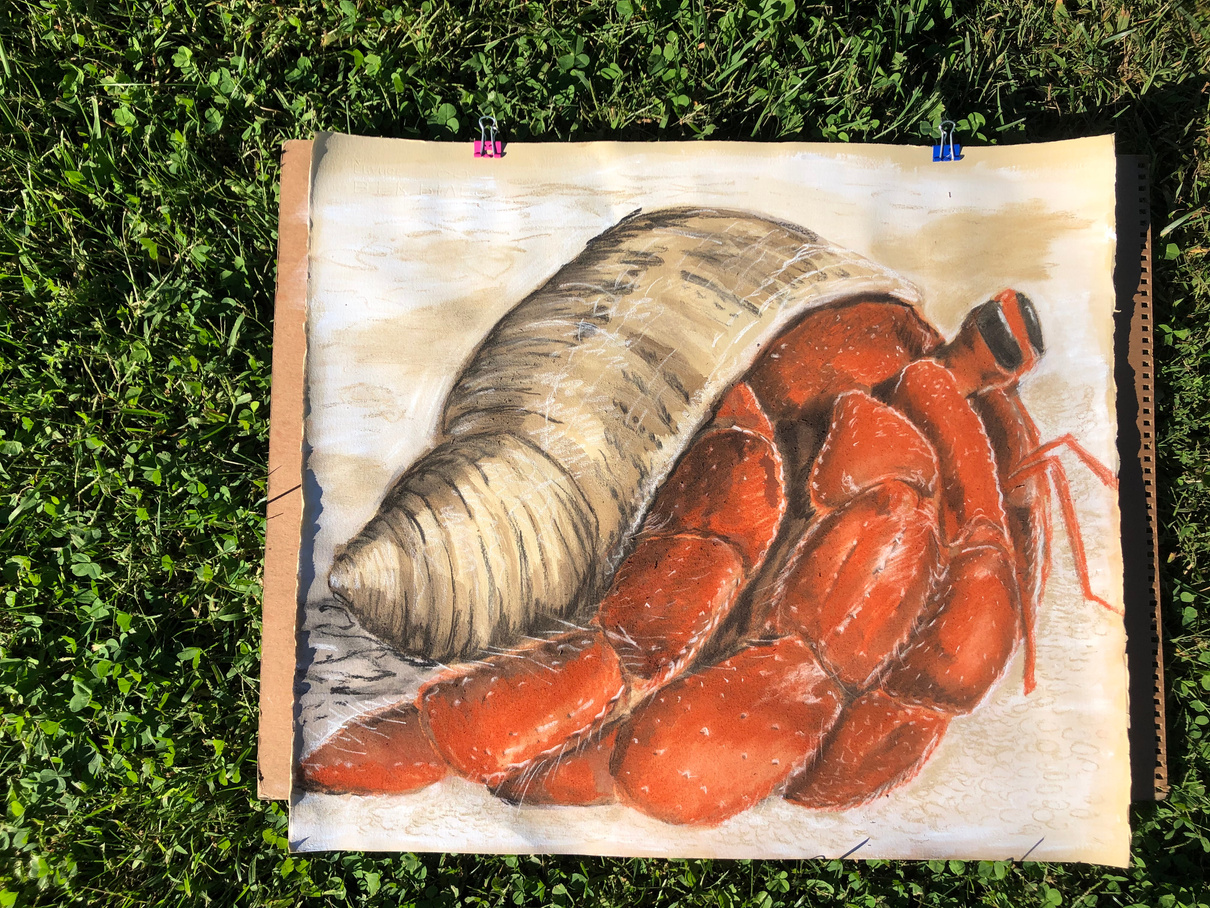
Hermit Crab, 24"x30", charcoal and conte crayon, 2022

Figure drawings from life, chalk pastel, 2019

Figure drawings from life, graphite and watercolor, 2019
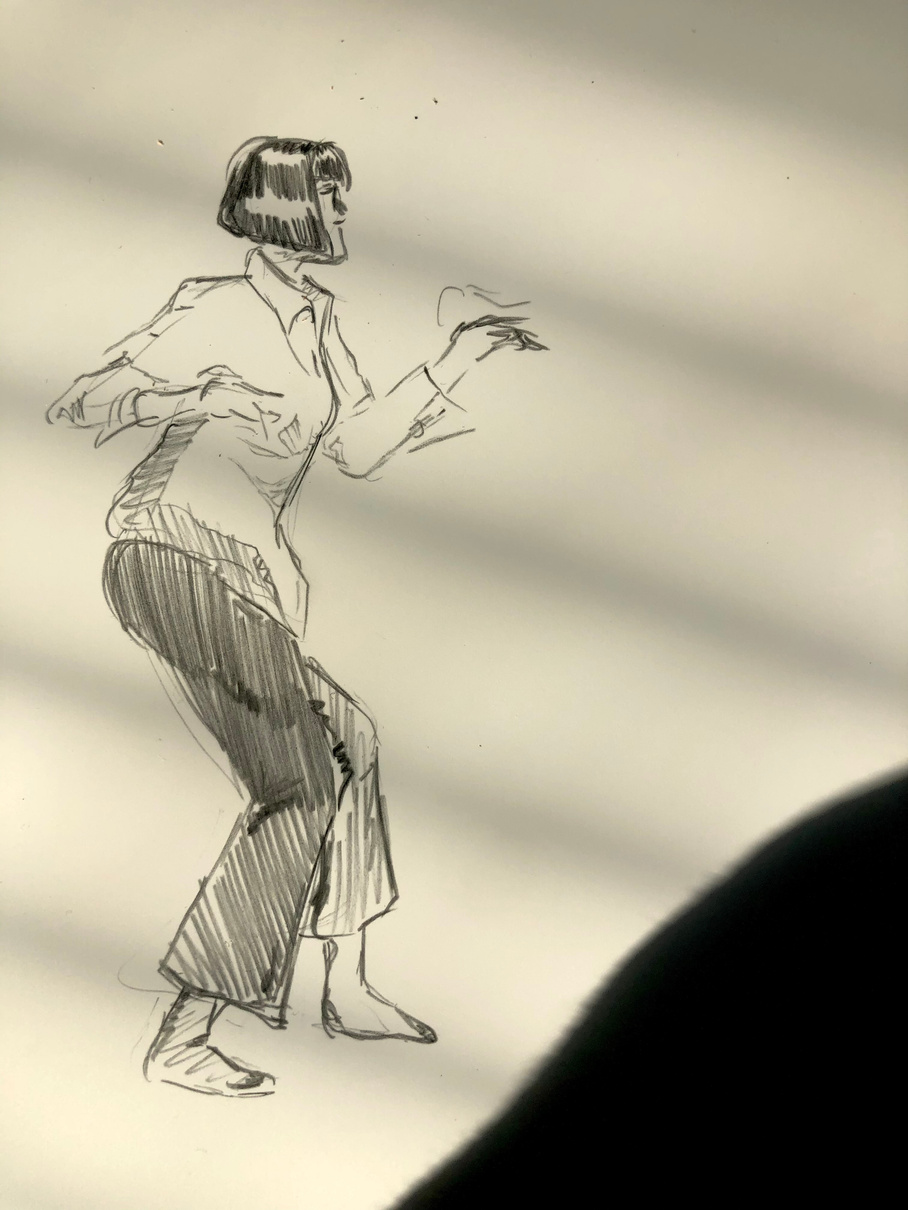
Pulp Fiction sketch, graphite, 2022
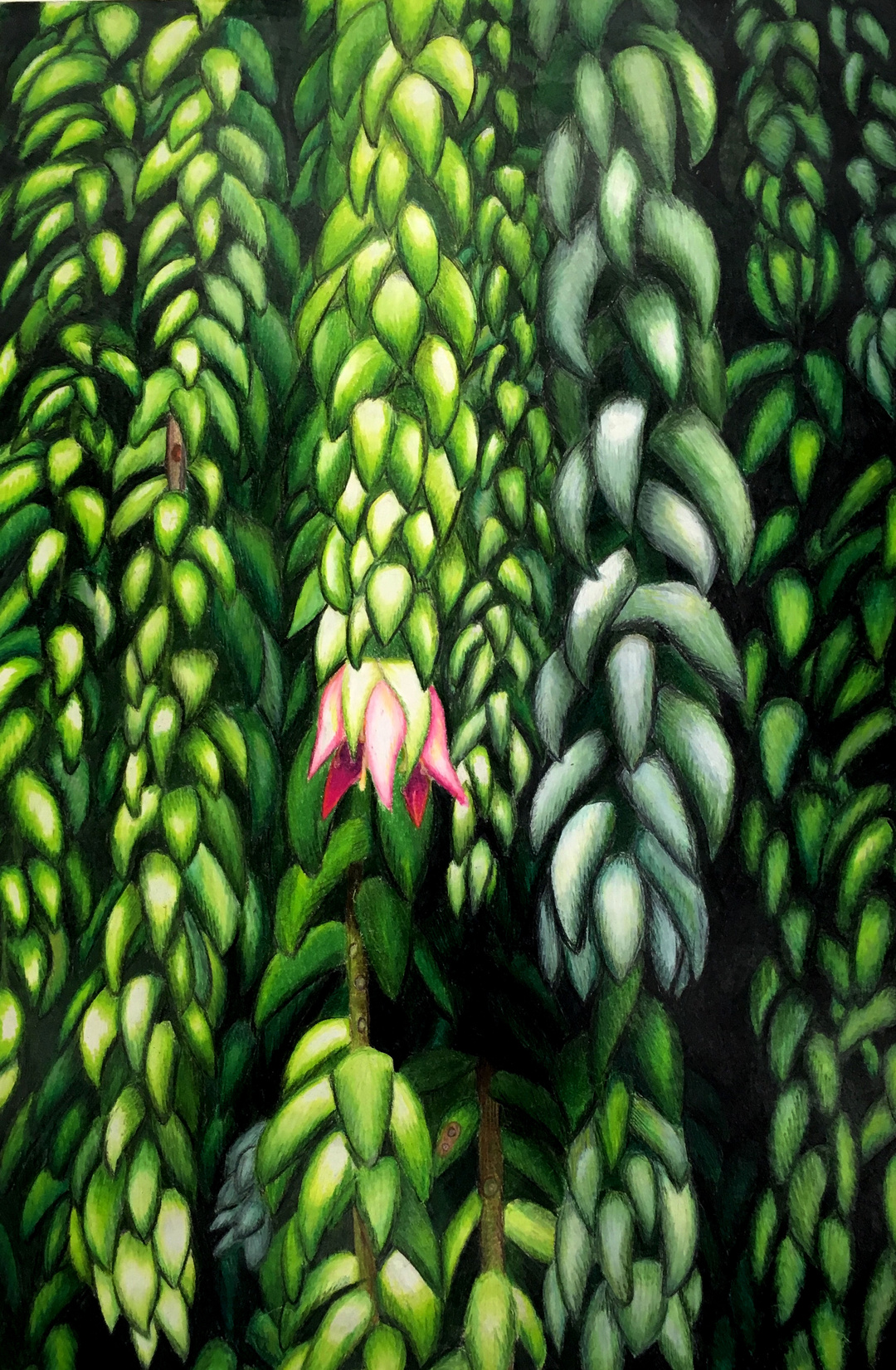
Cactus, 18"x12", colored pencil, 2017
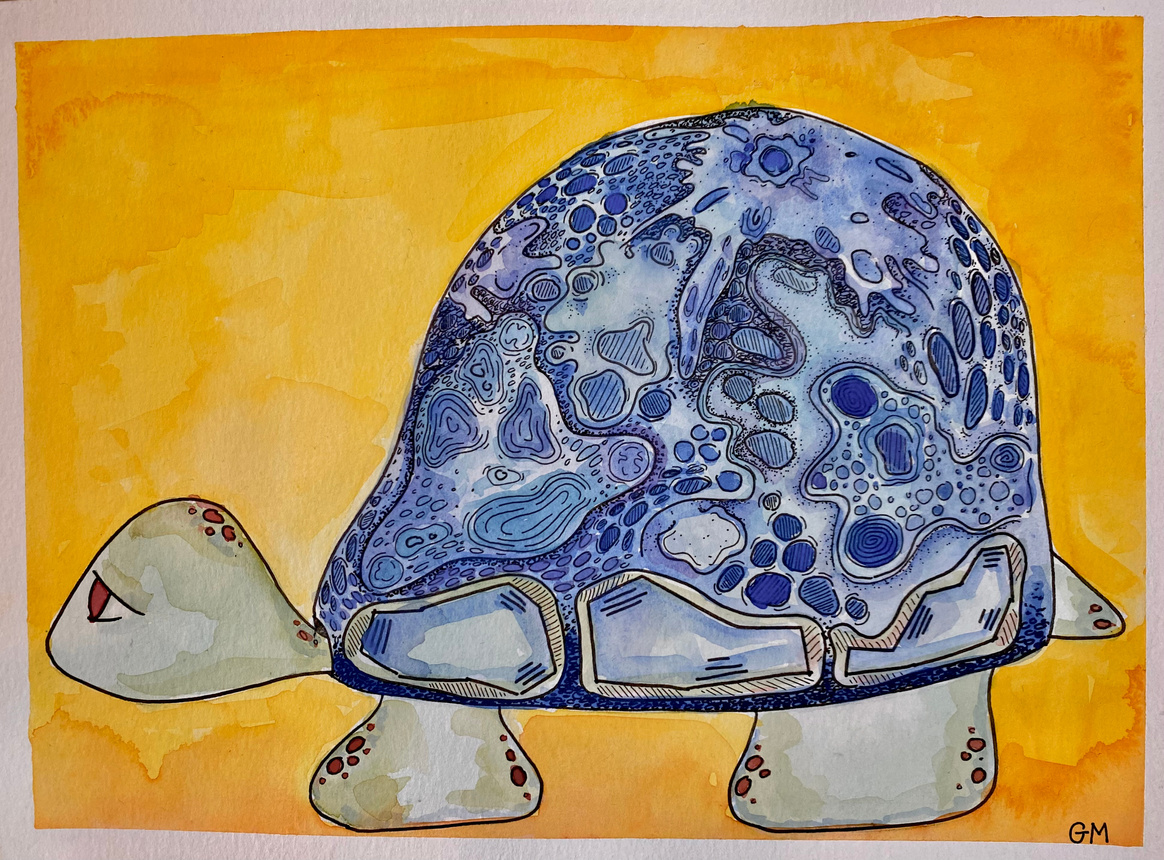
Moon Turtle, 12"x16", ink and watercolor, 2023
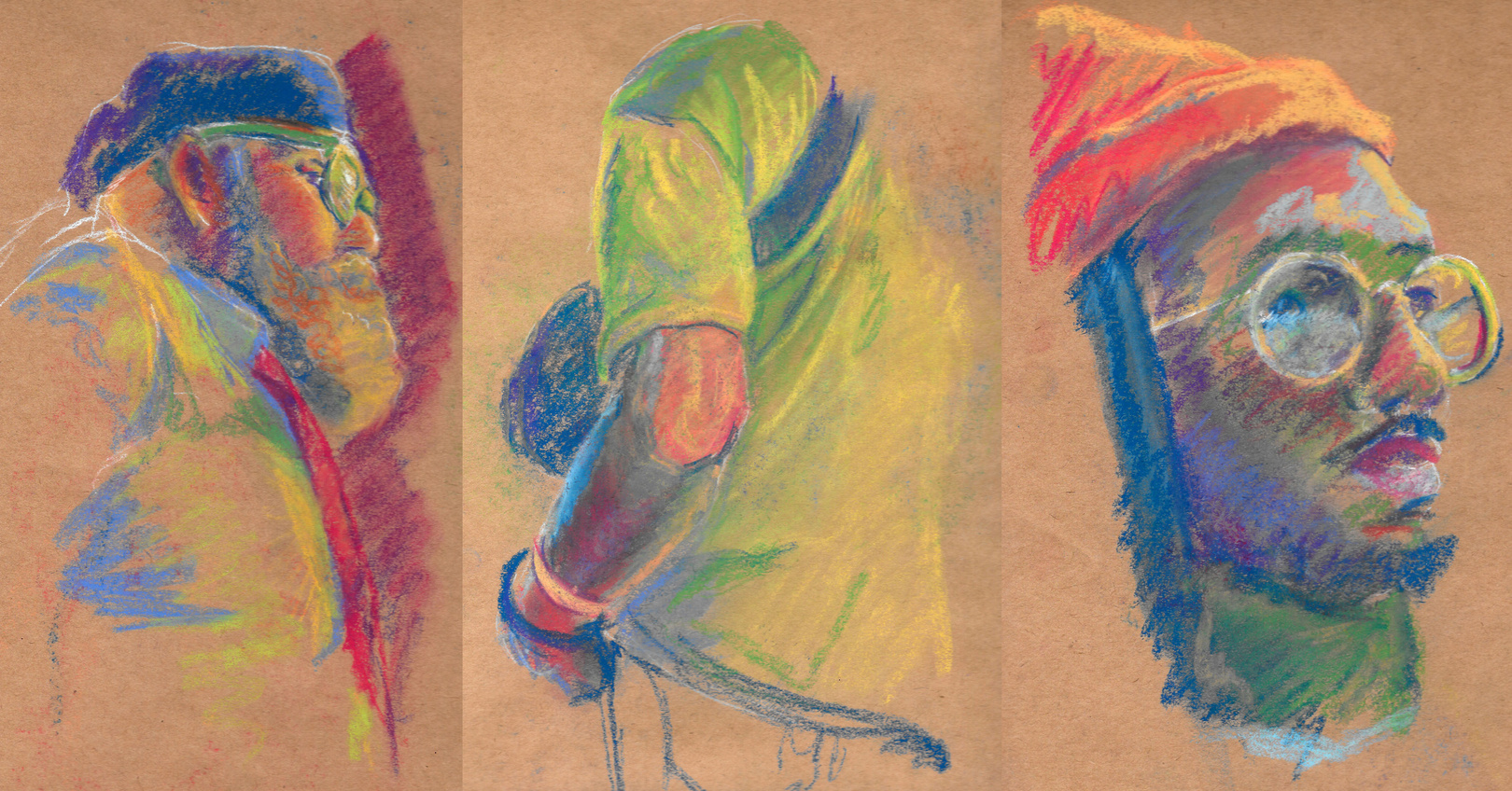
Figure drawings from life, chalk pastel, 2019
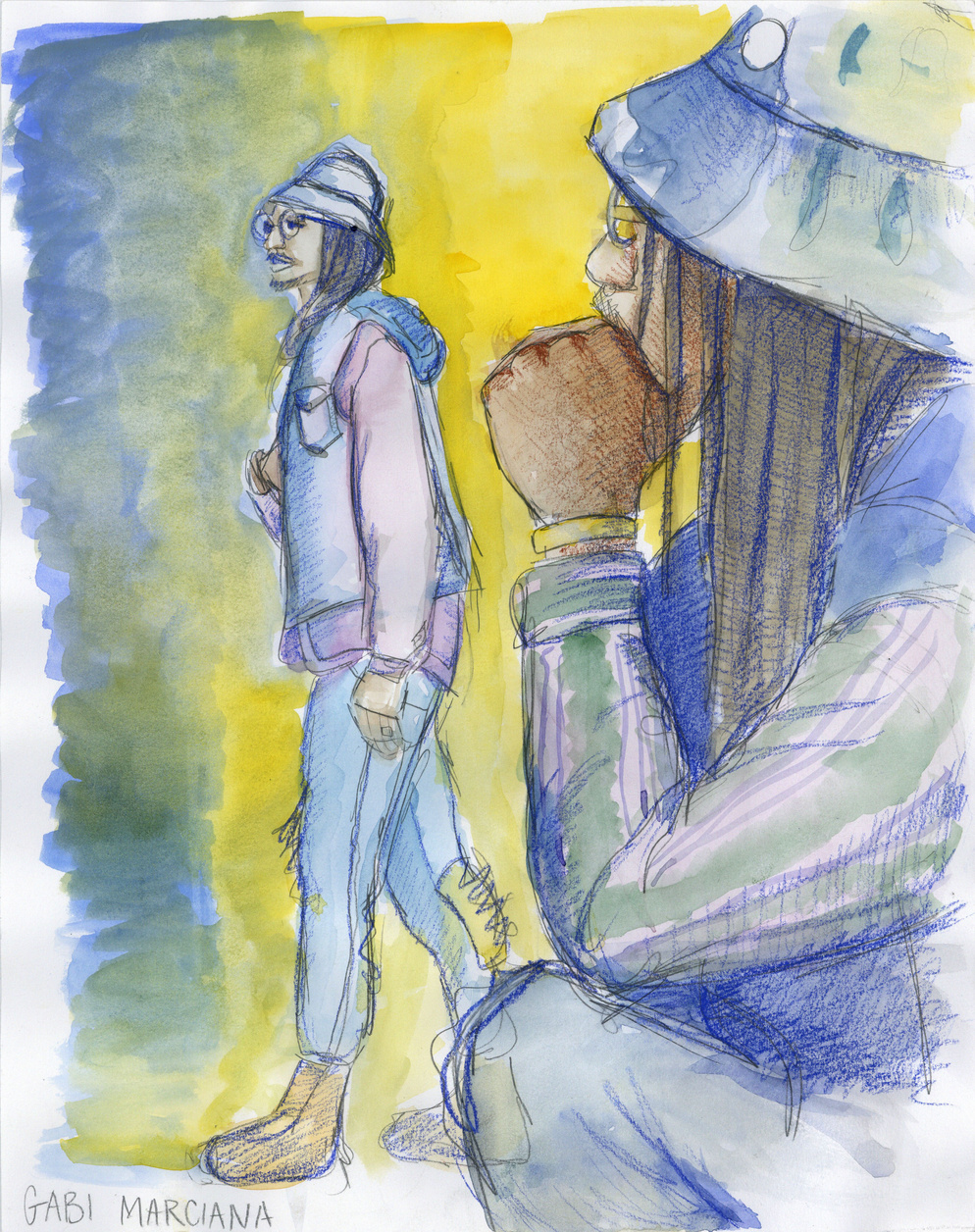
Figure drawings from life, graphite and watercolor, 2019
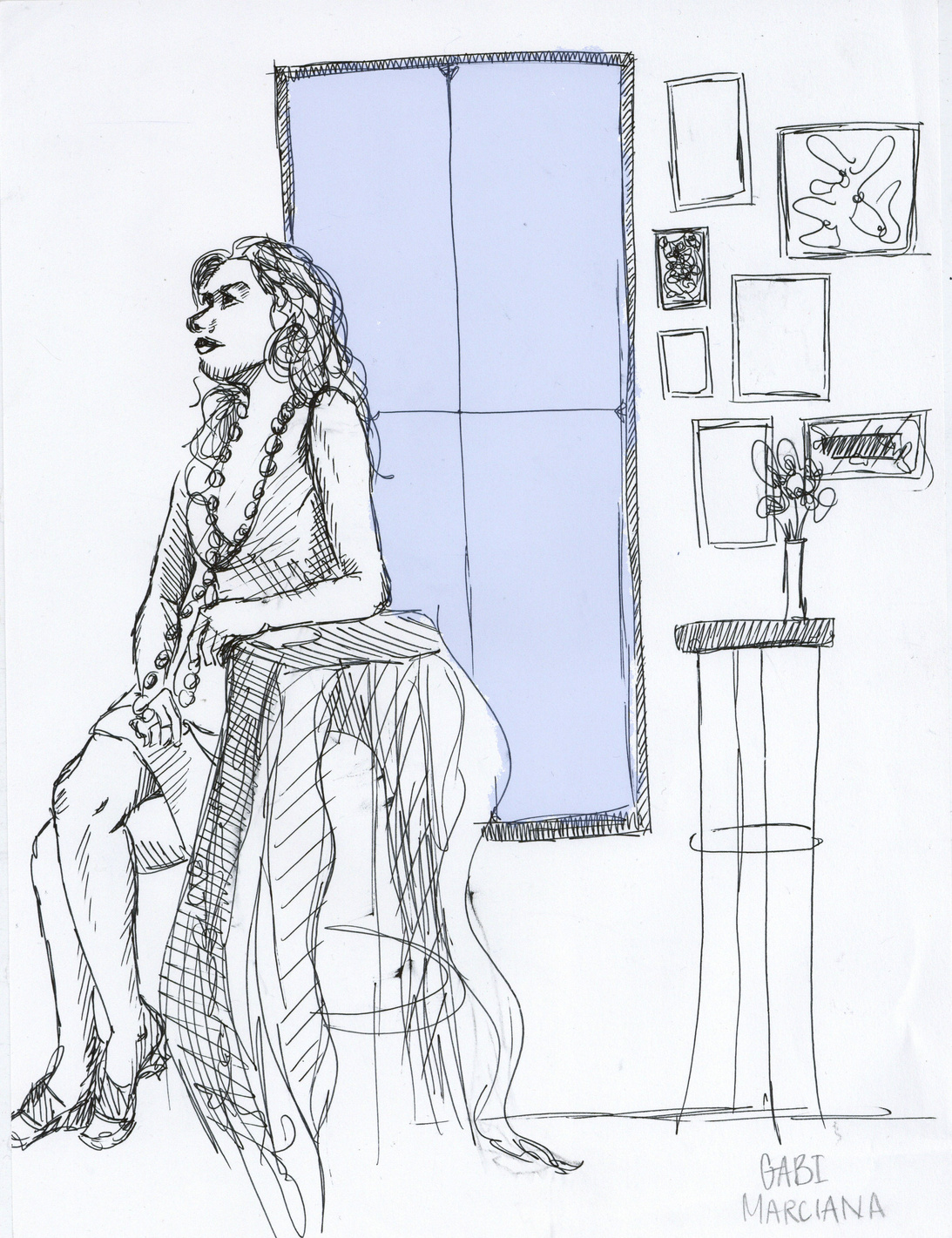
Figure drawings from life, ink colored digitally, 2019

Corn, 18"x12", colored pencil, 2017
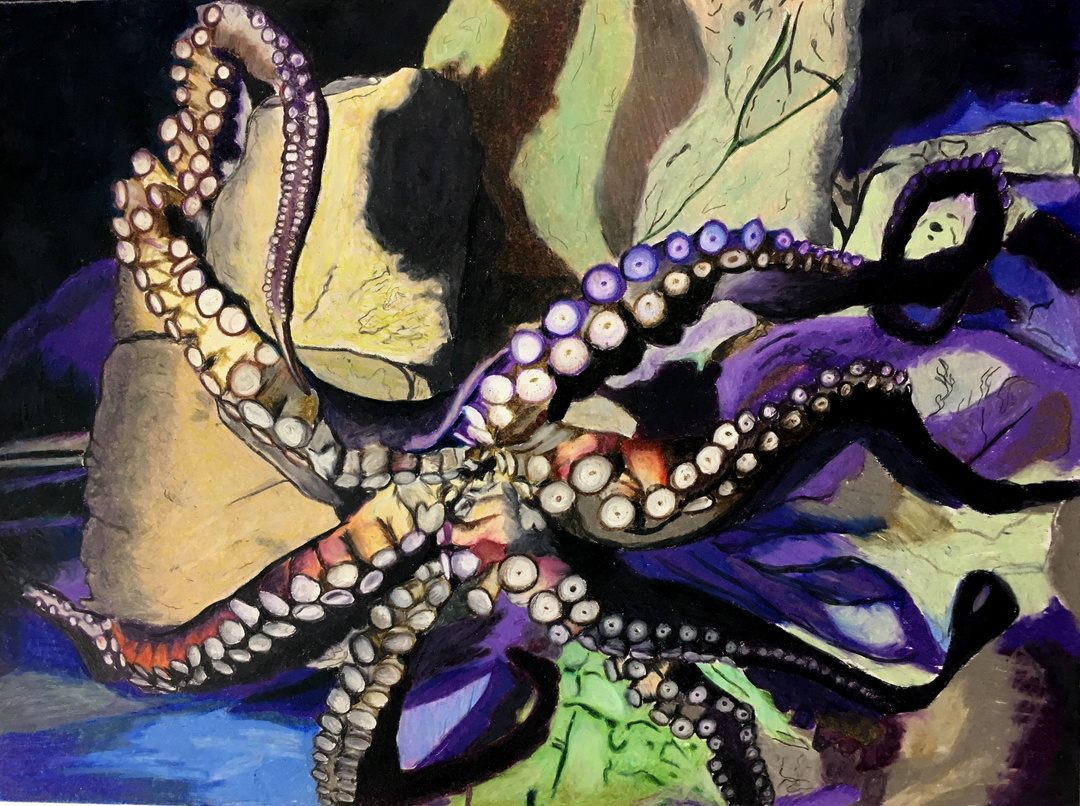
Octopus, 9"x12", colored pencil, 2017
Digital Illustration
- Adobe Photoshop
- Adobe Illustrator
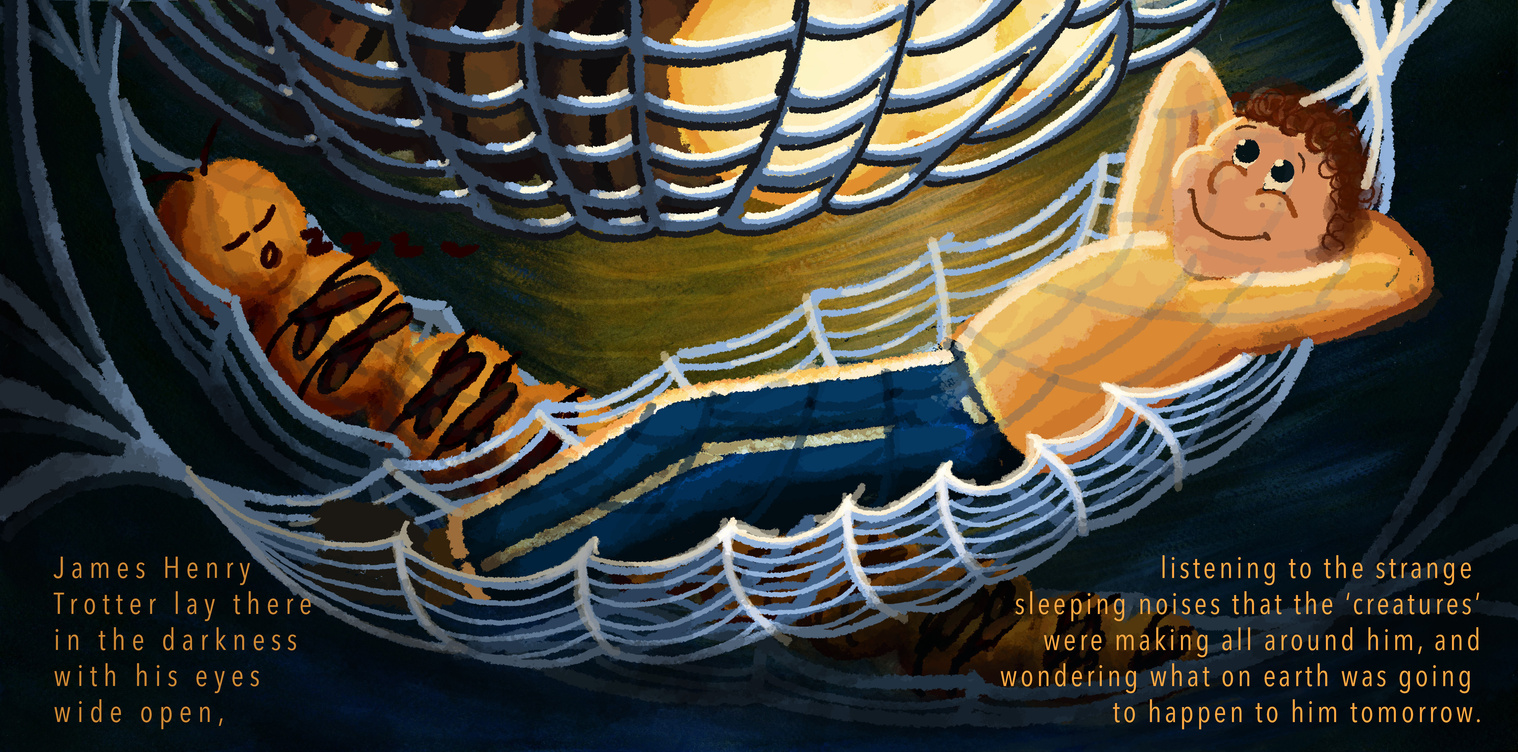
James and the Giant Peach children's book illustration concept, Adobe Photoshop, 2019
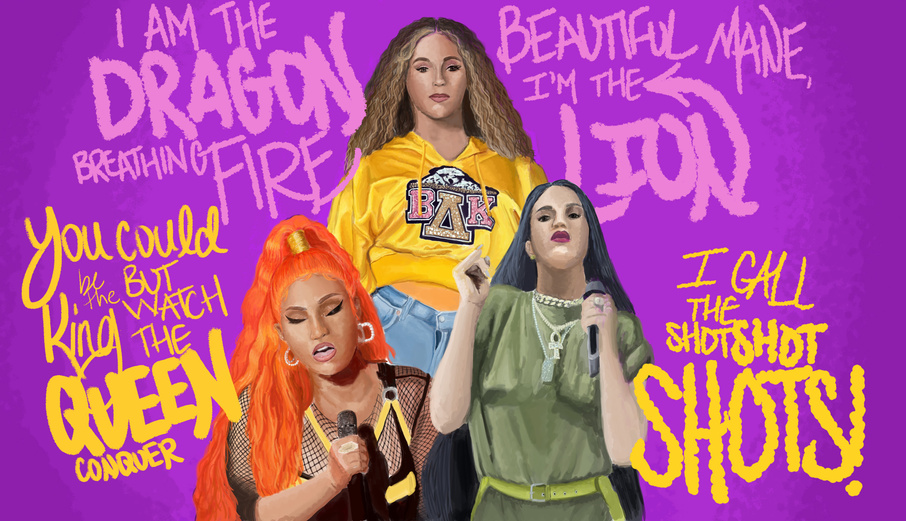
Untitled, Adobe Photoshop, 2019

Interconnected, ink drawing colored in Adobe Photoshop, 2020

Rose value study, Adobe Photoshop, 2019

Travel poster concept, Adobe Photoshop, 2019
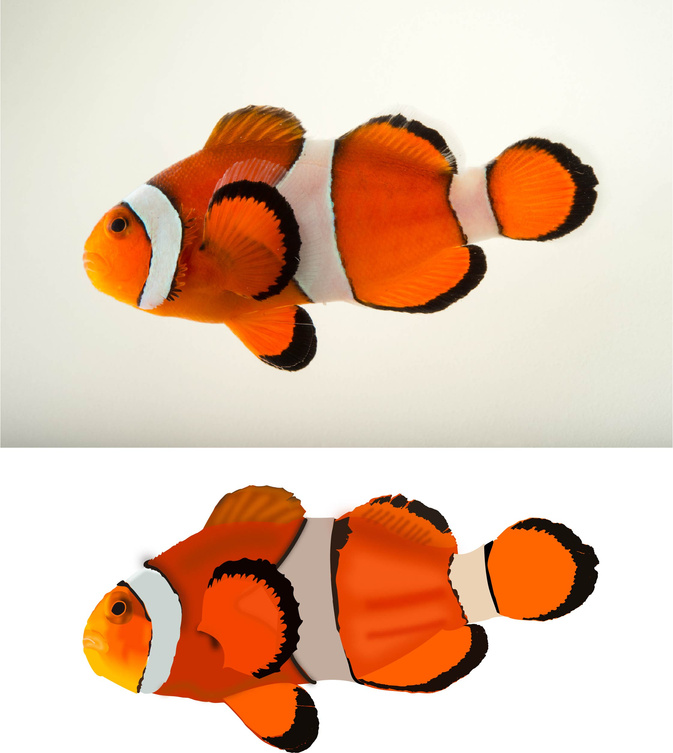

Realistic vector studies using Adobe Illustrator, Adobe Illustrator, 2019
Animation
- Adobe Photoshop
- FlipaClip
Teaching philosophy
Pablo Picasso said, "Every child is an artist. The problem is how to remain an artist once he grows up." Creating is an innate habit. When we are young, we practice this habit fearlessly. No canvas is too small, no color is too bright. What happens from childhood to adulthood that causes so many to stop creating?
Fear and self-doubt are creativity's greatest enemies. My goal as an art teacher is to build confidence in my students through encouragement and trust, so that more people see a blank canvas as an opportunity to express rather than a chance to fail. Creative confidence can be applied to other disciplines, extracurriculars, and future careers.
I expect a high level of craft and care from my students and teach my students to think like artists. Artists experiment and take risks, and use creative problem solving to communicate ideas. Artists practice, plan, and present universal ideas and emotions that connect and inspire us. My students are expected to take pride in their work, respect art materials, and use their own individual ideas. My curriculum is student-centered and allows room for student choice and student voice.
Above all, I care about my students. Our students are growing both their minds and their hearts. Children need good adult role models that are responsible, kind, and can both lead and listen. Children are bound to make mistakes and it is our job to give them grace when they fall and celebrate when they fly. I make every effort to learn about my students and let them know that my investment in their education is unconditional. Our students will inspire us, test us, make us laugh, and surprise us every day. Most importantly, they trust us to educate and to protect. As an educator, it is my duty to make my students feel safe and welcome in my classroom. I incorporate SEL practices into daily routines and my goal is to create a classroom environment that my students look forward to entering.
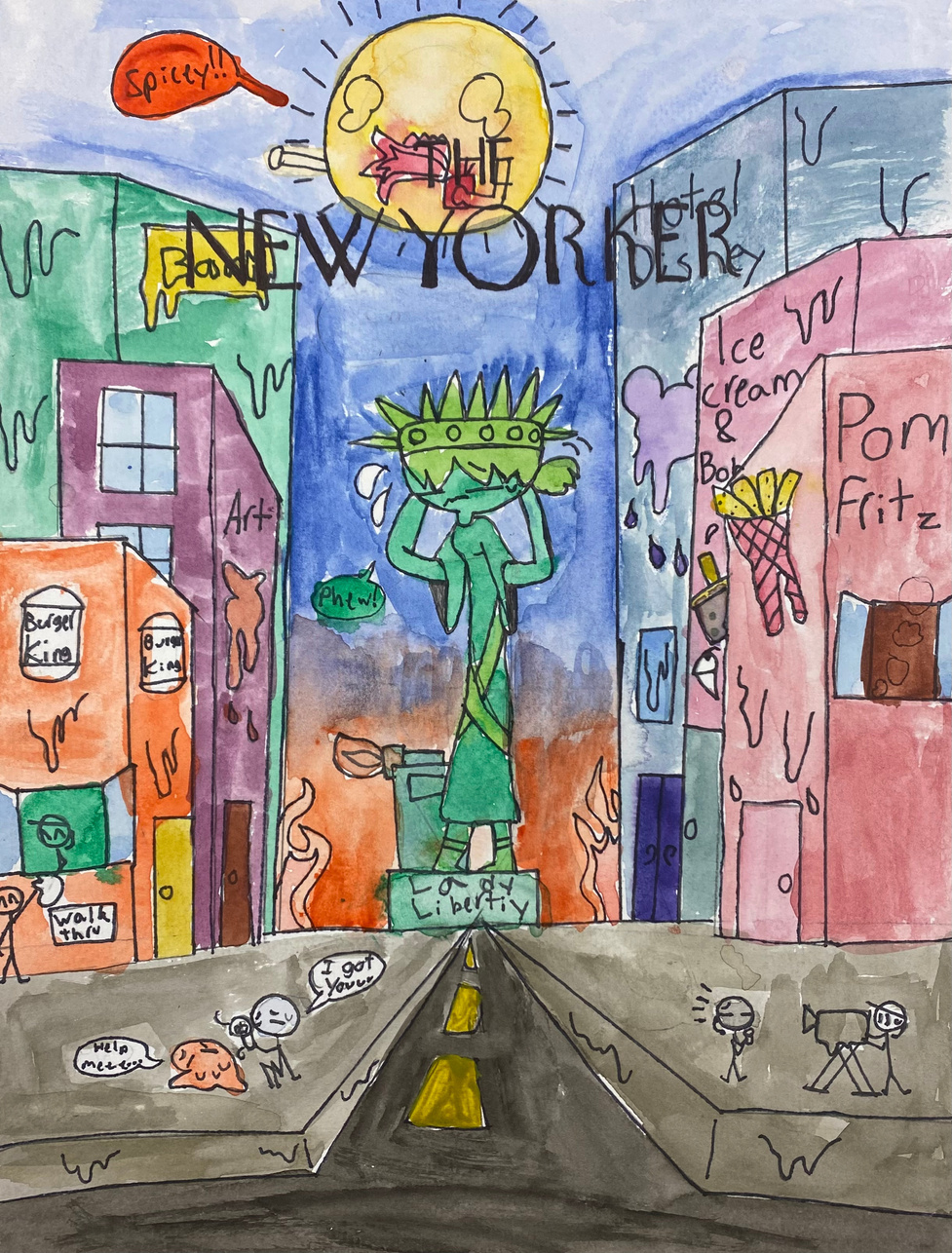
Grade 6, Weldon E. Howitt Middle School, Farmingdale, NY
Magazine Covers in One-Point Perspective
At Howitt Middle School, one-point perspective is an essential part of the 6th grade art curriculum. Students apply math concepts and creativity to draw realistic proportions and create an illusion of depth. Learning to draw in one-point perspective can be a challenge for many students at both developing and advanced stages of artmaking. I wanted to teach one-point perspective using a real-world application, so students could see how this method is used by real artists and be able to rationalize why an artist would want to use mathematical concepts to create artwork. This project was inspired by The New Yorker, a magazine that employs artists and illustrators to design their covers, many of which use one-point perspective to create cityscape drawings.
In this unit, students learn how to draw in one-point perspective and create depth, how to apply one-point perspective to solve problems, and plan and create a magazine cover, using compositional details to illustrate a chosen season during which their magazine cover would be "published."
Objectives
- Students will be able to use a horizon line, vanishing point, and ruler to create an illusion of depth and realistic proportions.
- Students will be able to apply math concepts to creative problems.
- Students will be able to plan and conceptualize a magazine cover for The New Yorker.
- Students will be able to communicate a time of year through compositional details.
- Students will understand the process of creating an illustration.
- Students will understand the importance of craft and precision in creating something realistic.
Essential Questions
- What is perspective?
- Why would an artist use mathematical concepts to create a work of art?
- What is the process of creating an illustration?
- What is the goal of an illustration?
New York State Learning Standards for the Arts
VACr1.1.6: Collaboratively exchange concepts and different points of view to generate innovative ideas for creating art.
VACr1.2.7: Develop criteria to guide making a work of art or design to meet an identified goal.
VACr2.1.7: Demonstrate persistence in developing skills with various materials, methods, and artmaking approaches in creating works of art or design.
VACr2.3.7: Apply visual organizational strategies to design and produce a work of art or design that clearly communicates information or ideas.
VARe7.1.7: Explain how a person's artistic choices are influenced by culture and environment, and affect the visual image that one conveys to others.
VARe8.1.7: Interpret ideas and mood in art by analyzing artmaking approaches, characteristics of form and structure, relevant contextual information, subject matter, and use of media.
VACn10.1.7: Design a work of art inspired by a place where people gather in the community.

Process
Problem Solving
After learning the basics, students are given the challenge to draw their name in one-point perspective. Students are required to use at least 3 letters, some do their initials or a nickname, some do their full name. Students can then personalize their drawing in any way they chose to. Students are assessed on craftsmanship, their use of one-point perspective techniques, and their creativity.
Learning the Basics
We begin the unit learning how to use a horizon line and a vanishing point to create simple cubes. Students who excel are given an additional challenge to draw more complex shapes using the same techniques.
Research and Planning
To prepare for their New Yorker magazine cover, students learn a brief history of the magazine and create a digital New York City brochure in order to research the city they are about to draw. Students then select a season for their magazine cover to be "published" in and plann at least 3 details that would illustrate that season to the viewer.
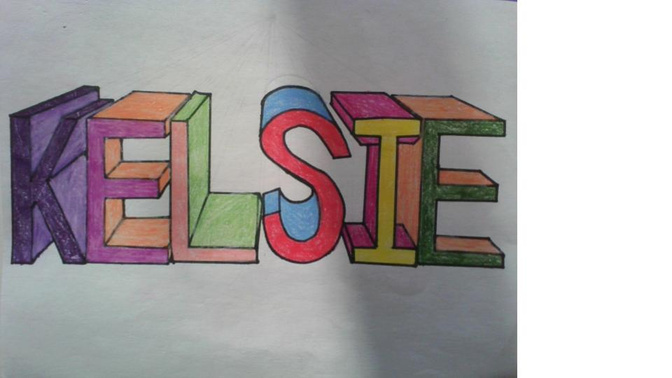
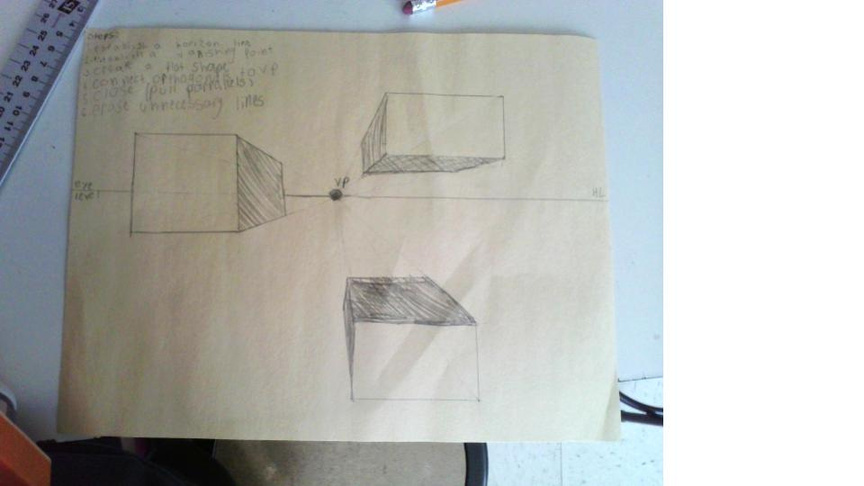
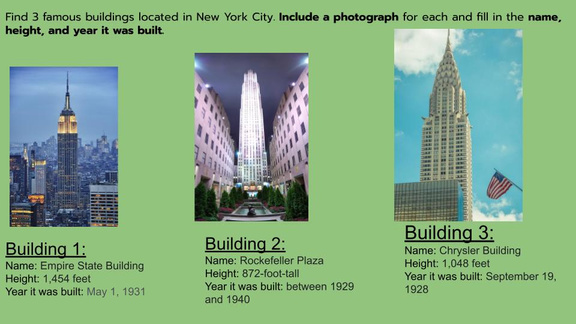
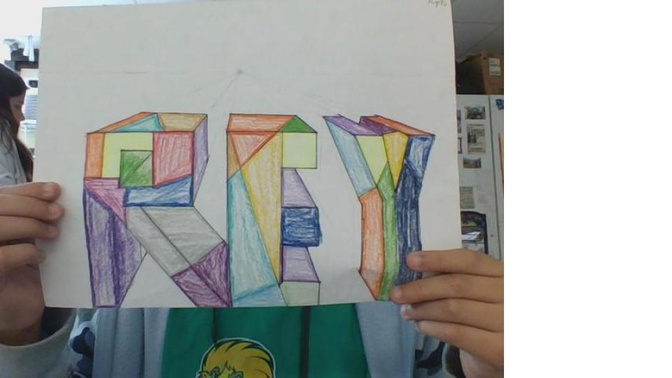
Students first sketched their drawing in pencil, went over their lines in Sharpie, and added color using watercolor. Students were encouraged to use color to illustrate the mood of their chosen season. Lastly, students traced and transferred the New Yorker logo onto their finished work using graphite and Sharpie or white colored pencil.
Finished Work:
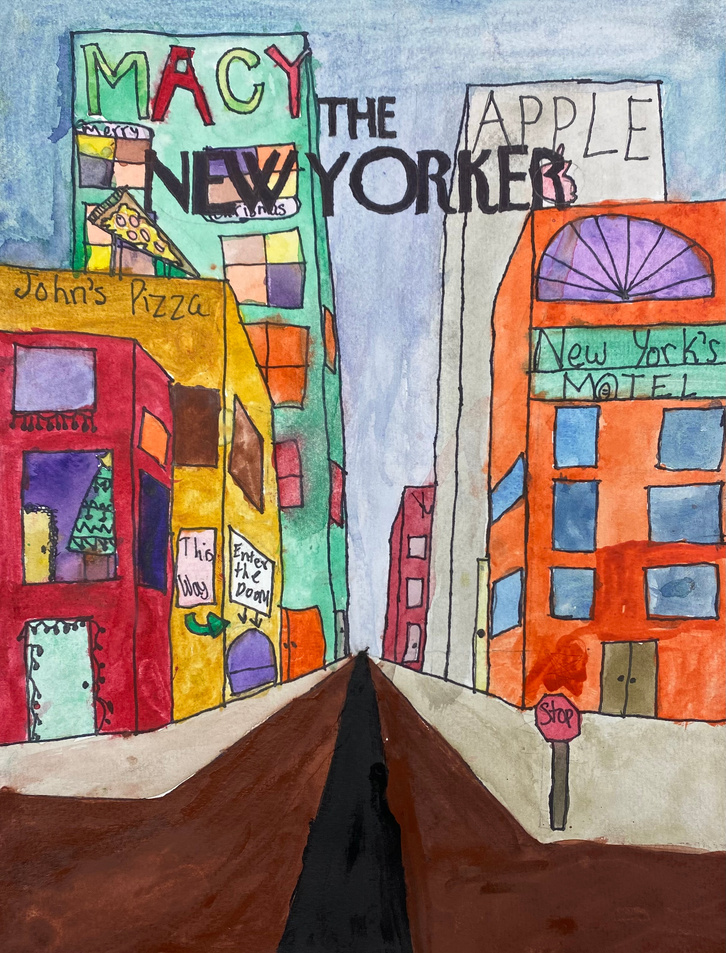
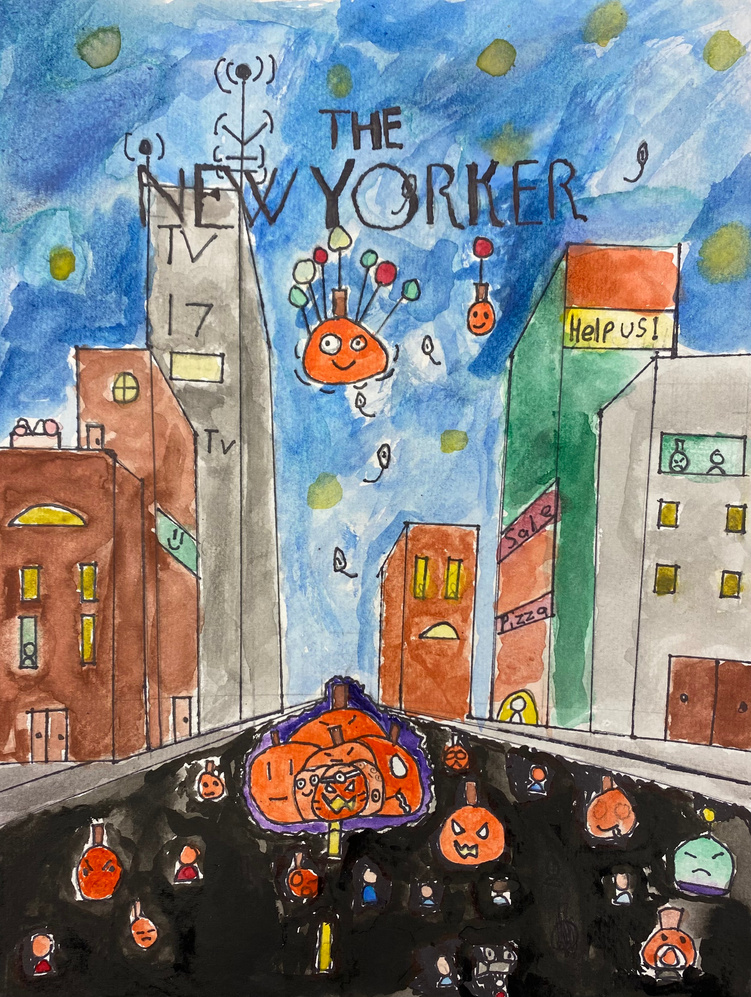
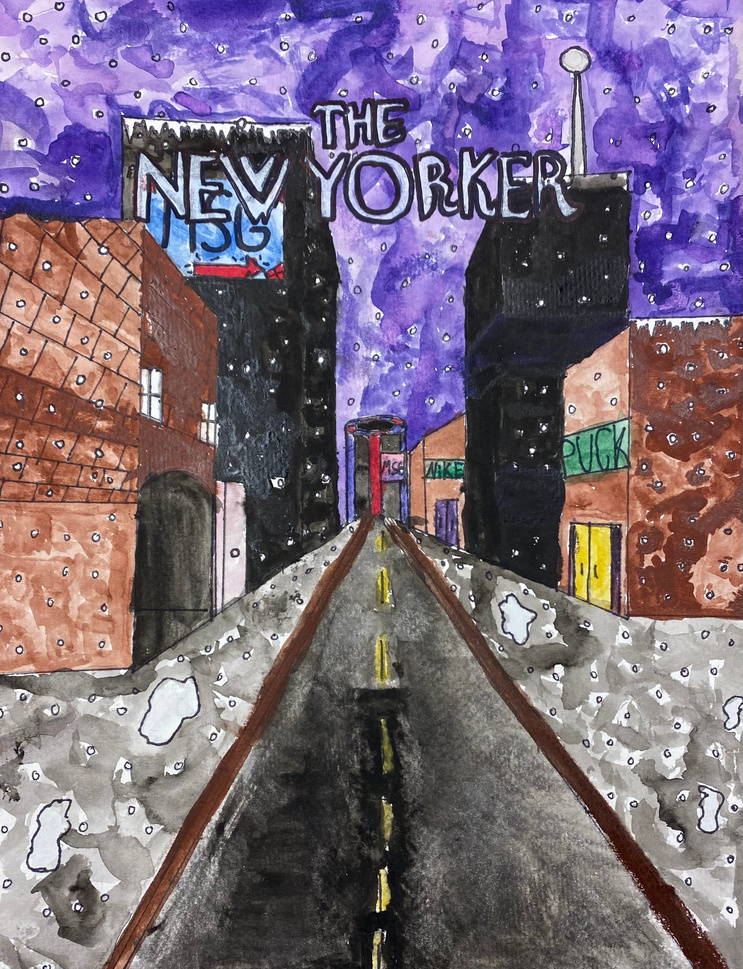
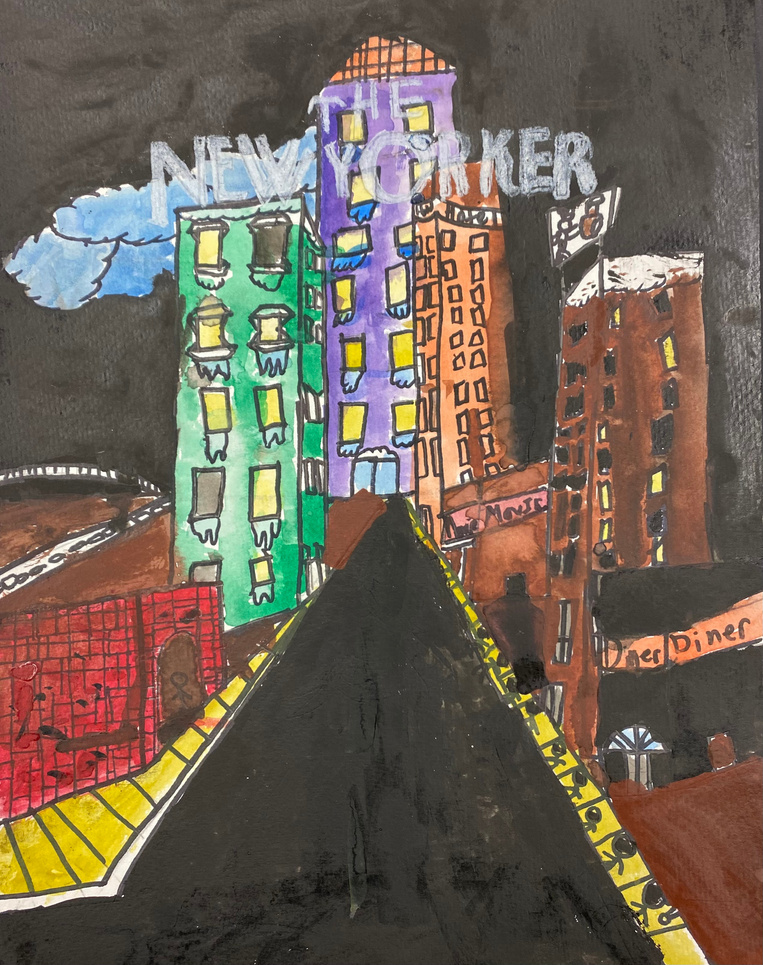

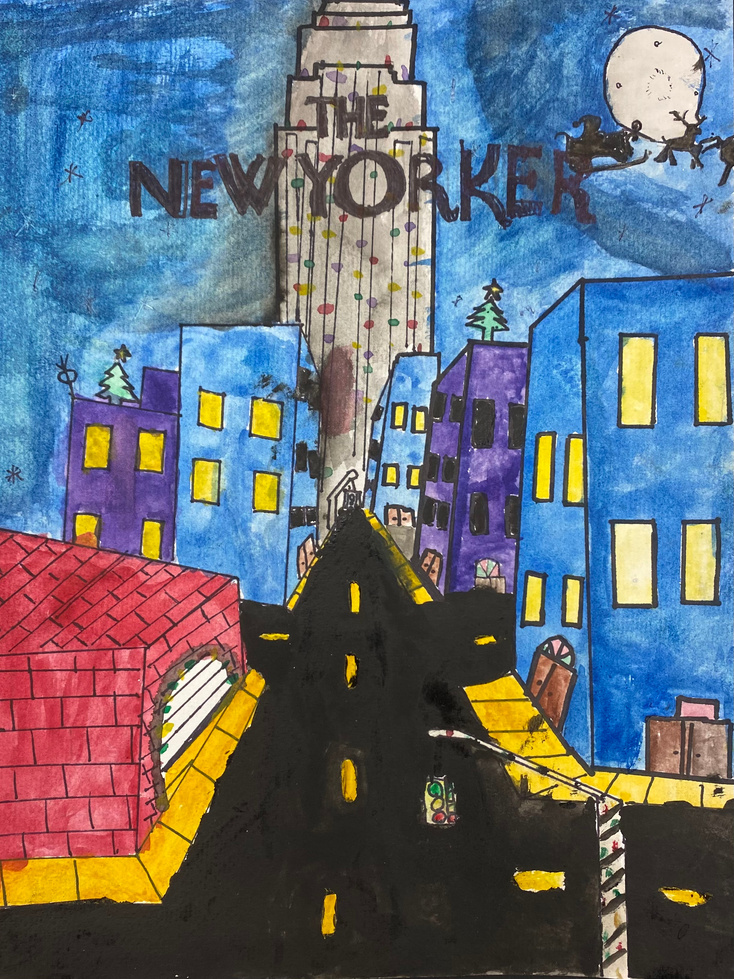
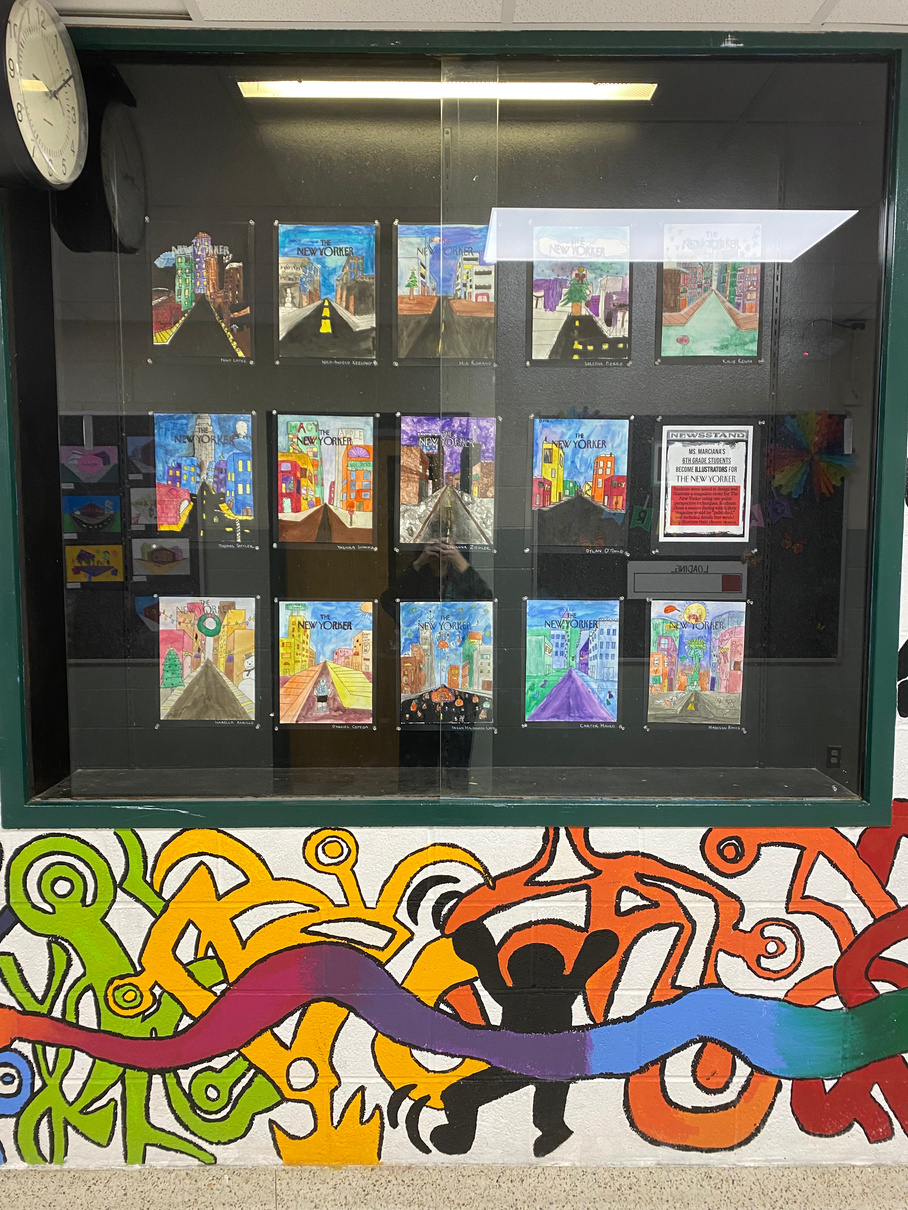

Assessment
Students are assessed in four categories: Craftsmanship and Technical Skills Development, Understanding of Content, Achievement of Learning Targets, and Completion of Assignments, Creativity and Aesthetics, and Participation, Focus, Effort, and Care. Students are assessed on a scale from one to four. A three out of four means a student met targets and expectations, a four out of four means a student exceeded targets and expectations.

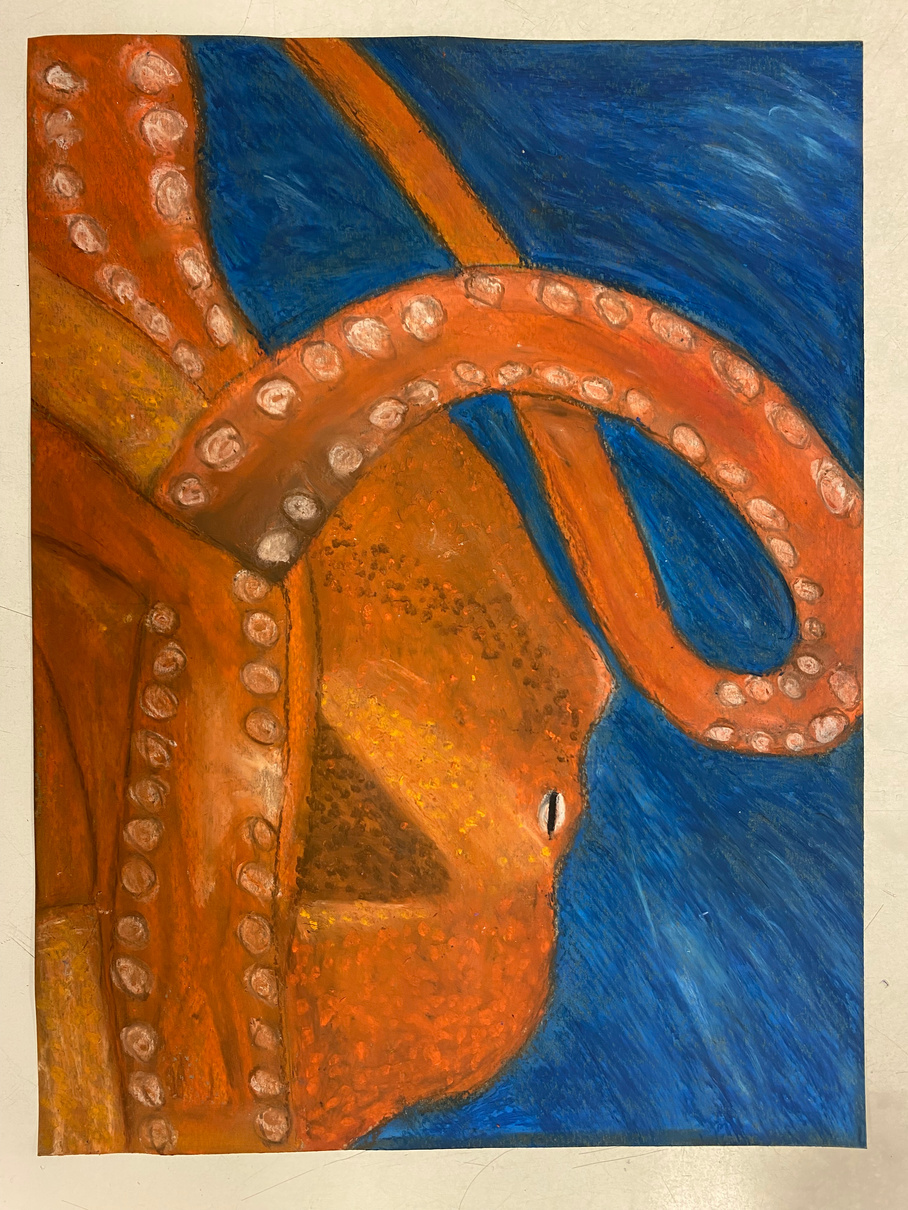

Grade 7, Weldon E. Howitt Middle School
Sea Creatures up close in Oil Pastel
Drawing from observation is an essential skill for those that wish to create a likeness to their subject and replicate the world around them. It requires not just looking at a reference, but truly observing your subject and its intricacies. Research and gaining an understanding of your subject enhances an artist's observations and helps to see what's under the surface (no pun intended).
In this unit, students gain observational drawing skills through various drawing exercises referenced from the book Drawing from the Right Side of the Brain by Betty Edwards. Students then use those skills to draw a chosen sea creature from photo reference after conducting research and creating a new composition from an existing photograph. This unit could build off of a observational drawing from life unit.
Objectives
- Students will be able to study a reference image and draw with attention to proportion, size, and placement.
- Students will be able to use strategies to view and analyze the composition of a work of art and reference material.
- Students will be able to research a chosen subject prior to artmaking.
- Students will be able to replicate textures, values, and hues with oil pastel.
- Students will understand the value of background knowledge in a subject prior to artmaking.
Essential Questions
- How can something that is complex be simplified?
- How can we better understand what we are drawing?
- Why do we try to create realistic images?
New York State Learning Standards for the Arts
VACr2.1.7: Demonstrate persistence in developing skills with various materials, methods, and artmaking approaches in creating works of art or design
VACr2.2.7: Demonstrate conservation, care, and clean-up of art materials, tools, and equipment
VACr2.3.7: Apply visual organizational strategies to design and produce a work of art or design that clearly communicates information or ideas
VARe7.2.HSI: Analyze the reciprocal relationship between understanding the world and experiencing imagery
VACn10.1.HSII: Utilize inquiry methods of observation, research, and experimentation to explore unfamiliar subjects through artmaking
VACn11.2.8: Identify and explore careers in which innovation and creative problem-solving skills are fundamental to success
Drawing From the Right Side of the Brain
Students first completed observational drawing exercises to sharpen their observational awareness. Students learned about placement, positive and negative space, and how to use guidelines when faced with a complex subject.
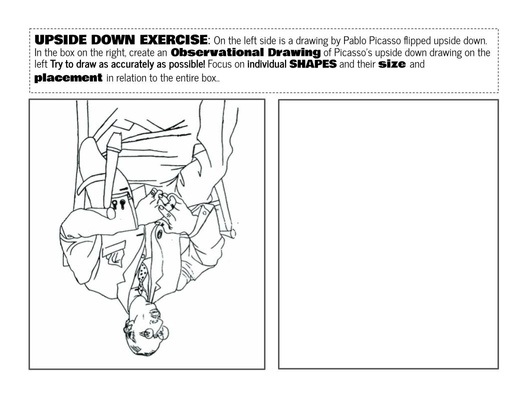
Process
Research
To prepare for their drawings, students conducted research on their chosen sea creature, identifying characteristics and listing scientific facts such as its species, diet, and habitat. Students then found a high resolution photograph taken by a wildlife photographer to use as reference.
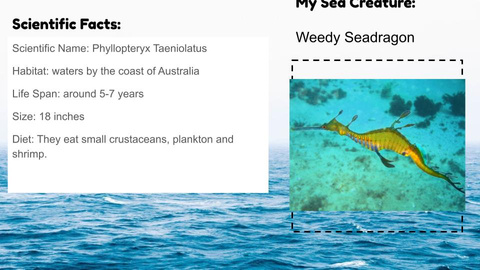
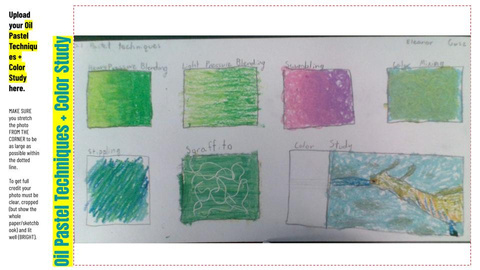
Cropping to Create a New Composition
Once students selected a photograph, they cropped the image so that the sea creature took up a majority of the frame. Students used their newly squired knowledge in positive and negative space to create an interesting, eye-catching composition.
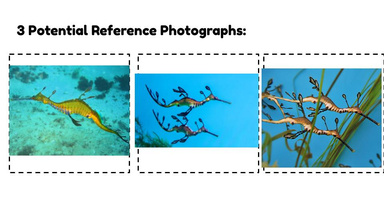
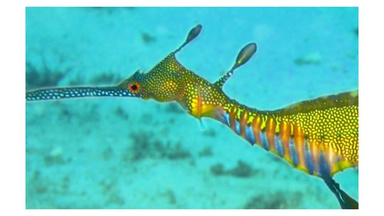
Students created a contour line drawing in pencil on toned pastel paper, then used oil pastel to add color and replicate texture. Students learned oil pastel techniques such as blending, color mixing, stippling, scumbling, and sgraffito and used these techniques to simulate the texture of their sea creature.
Finished Work
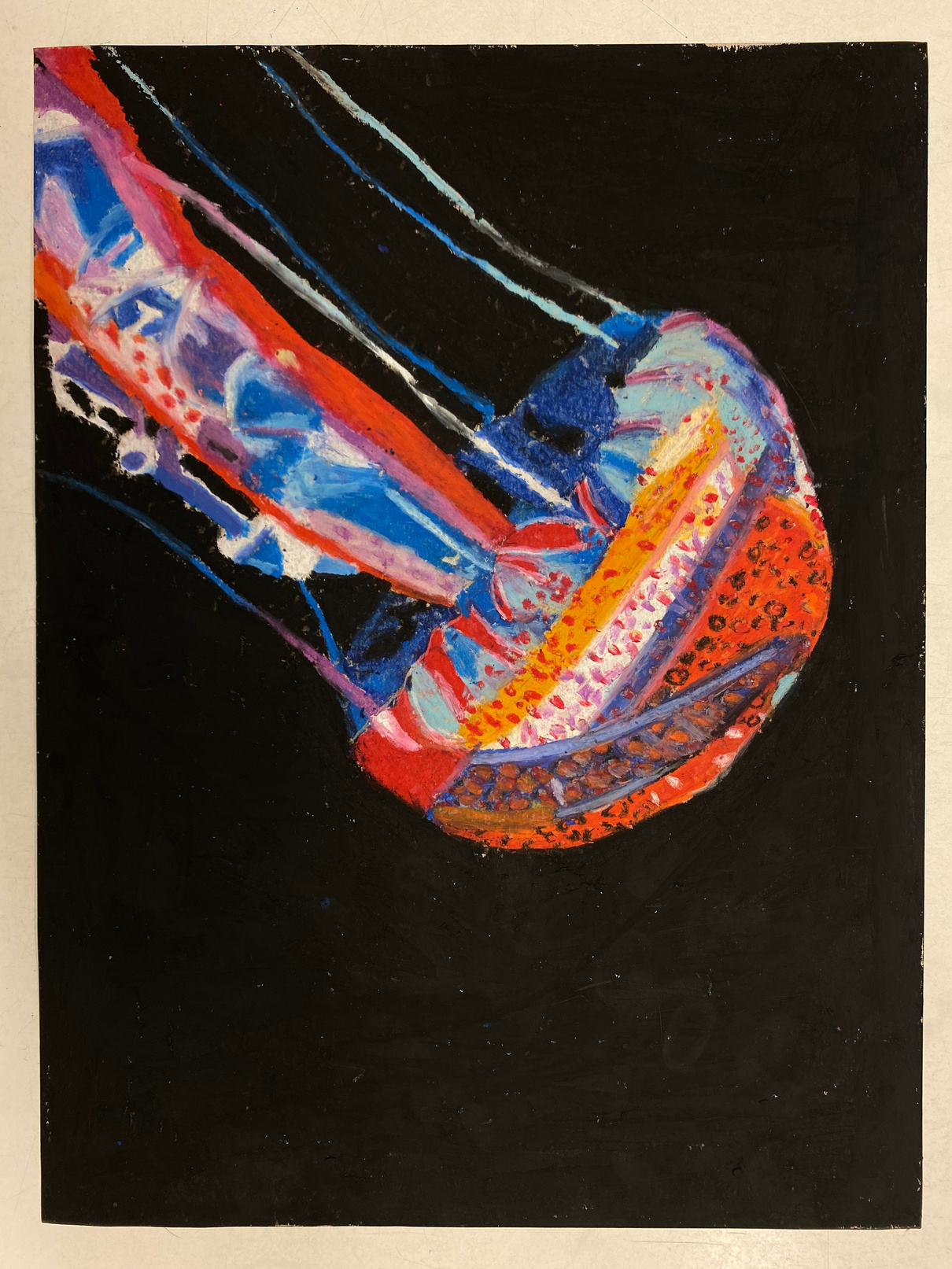
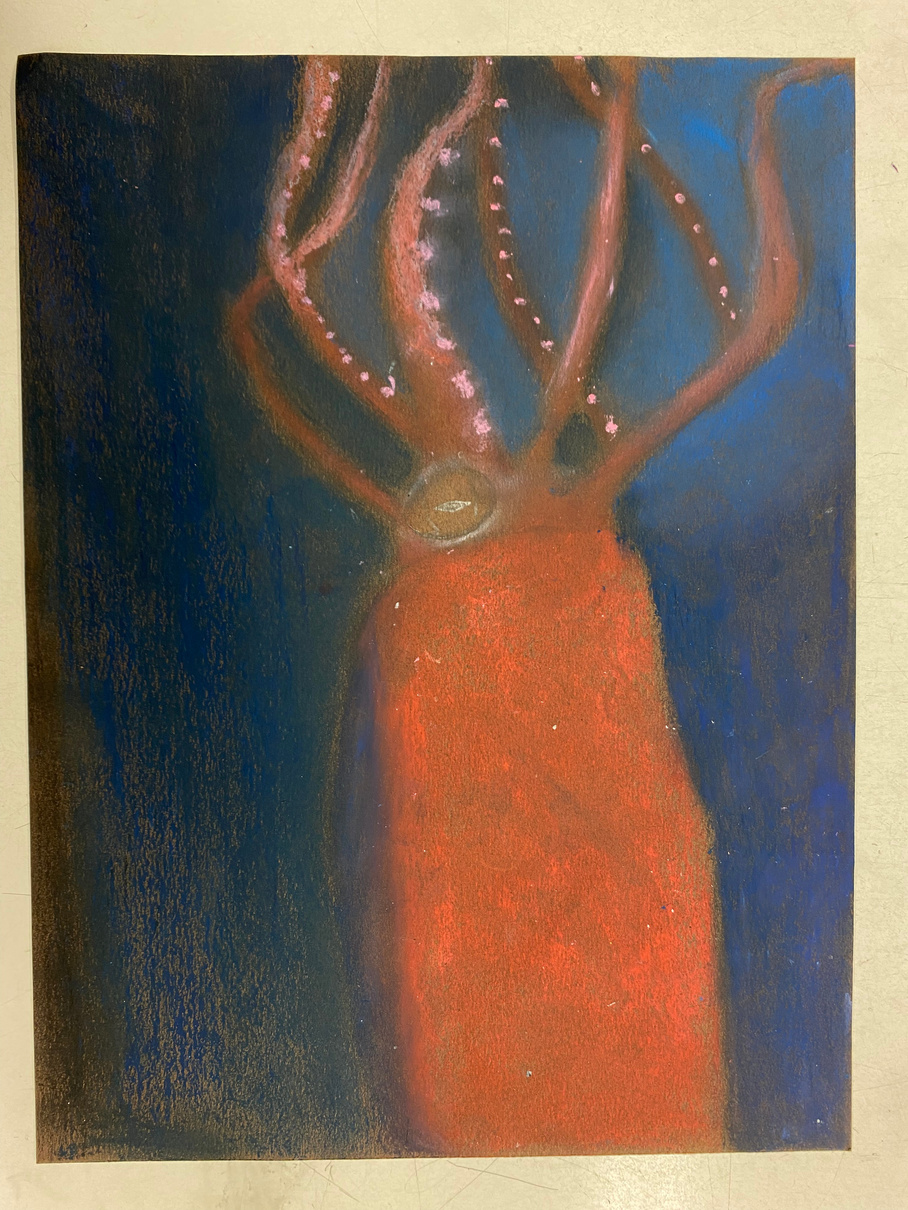
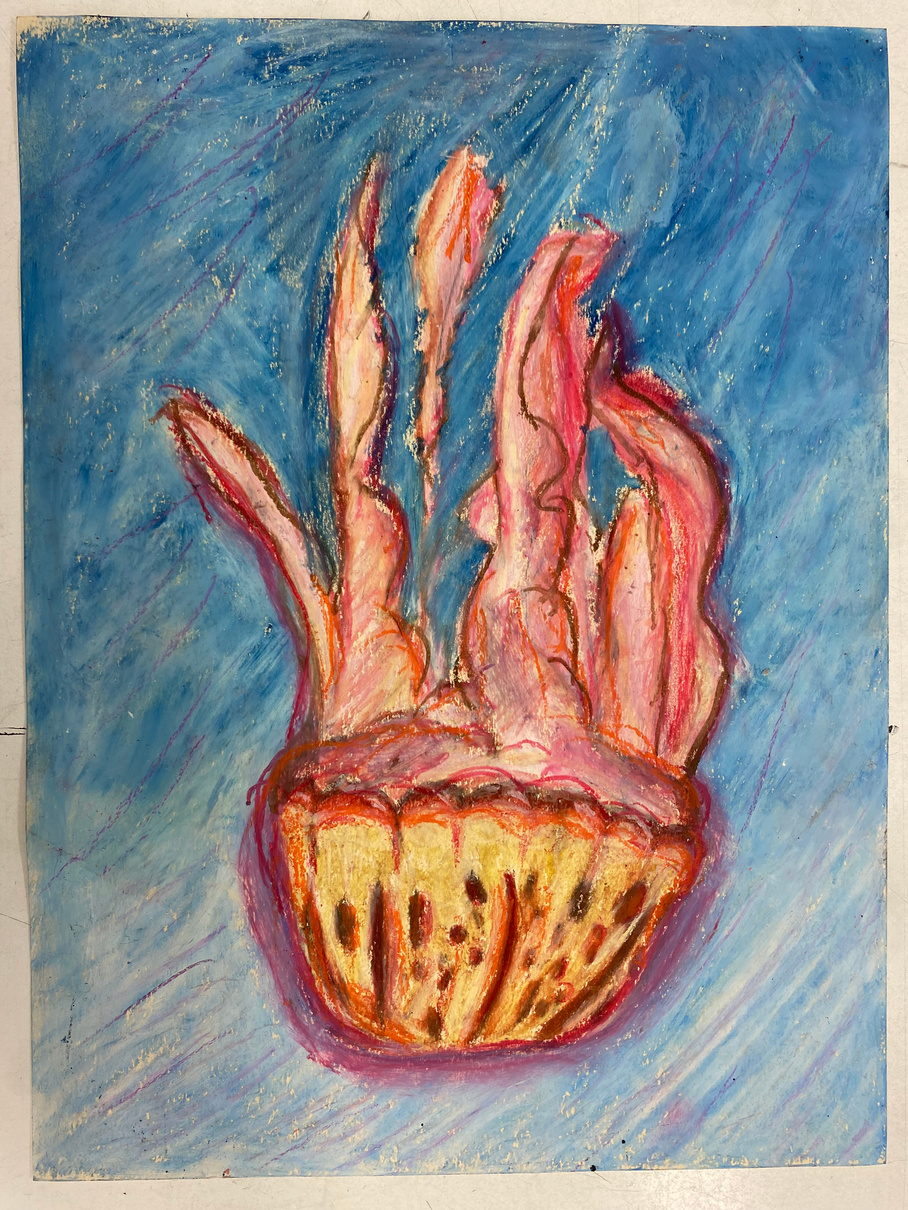
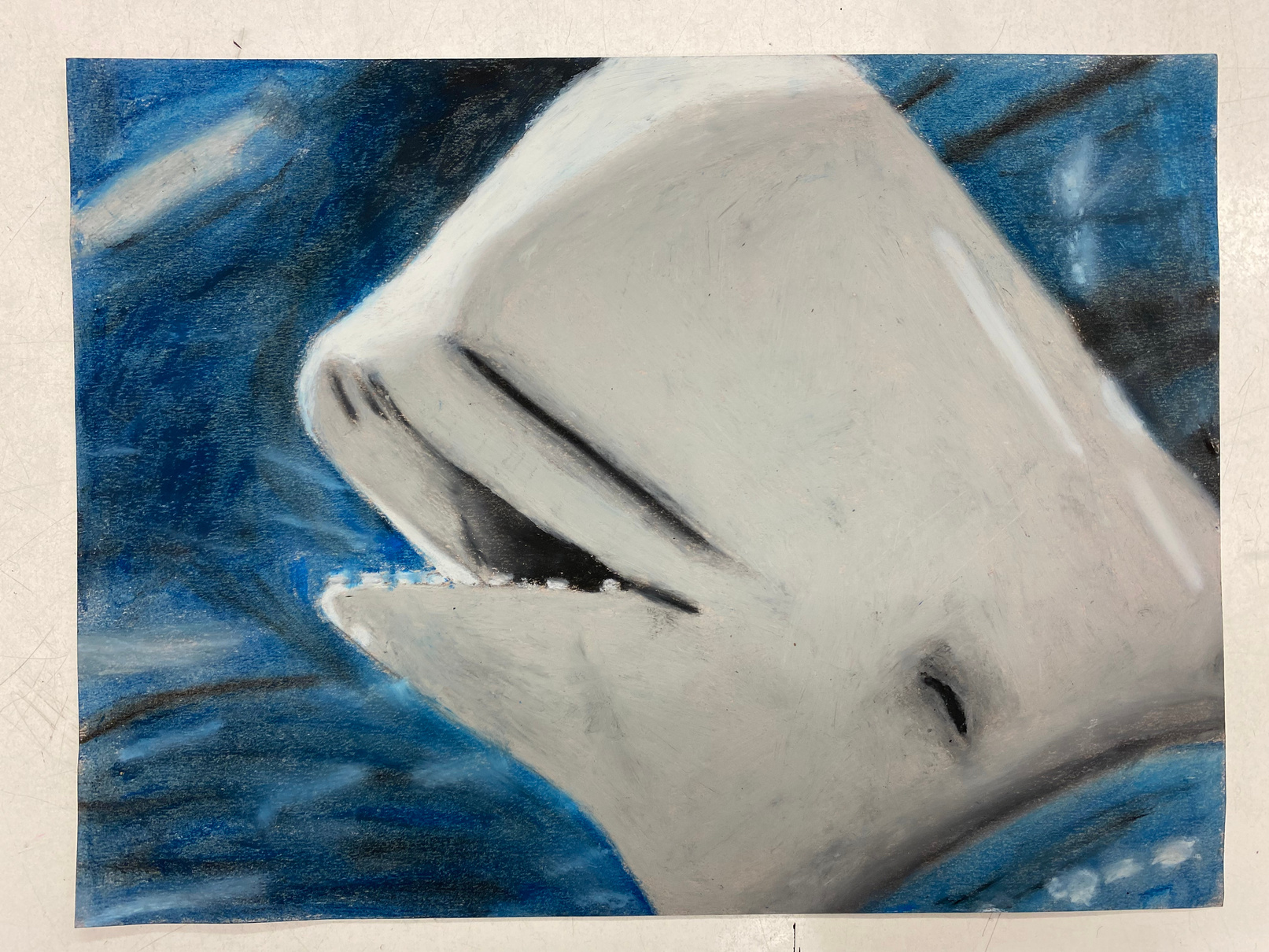
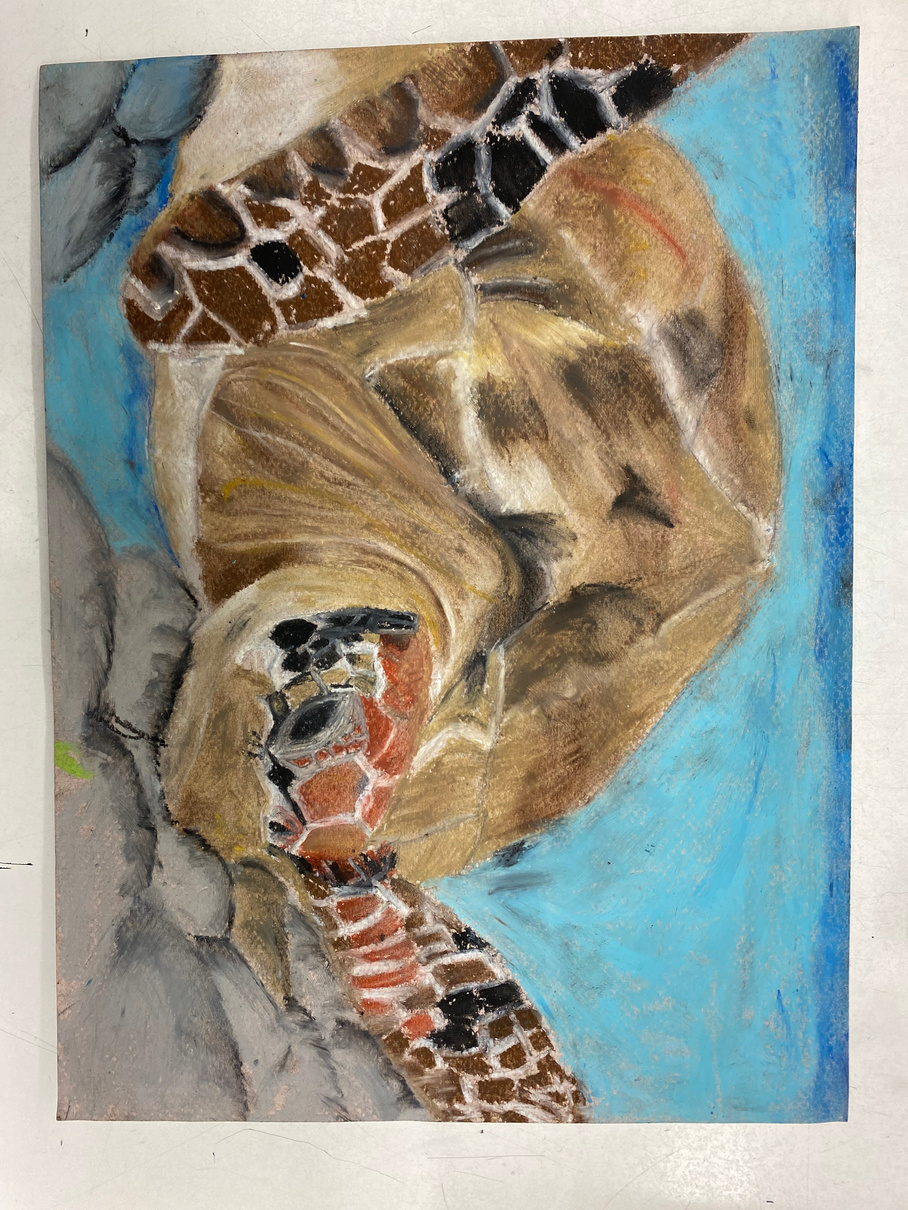
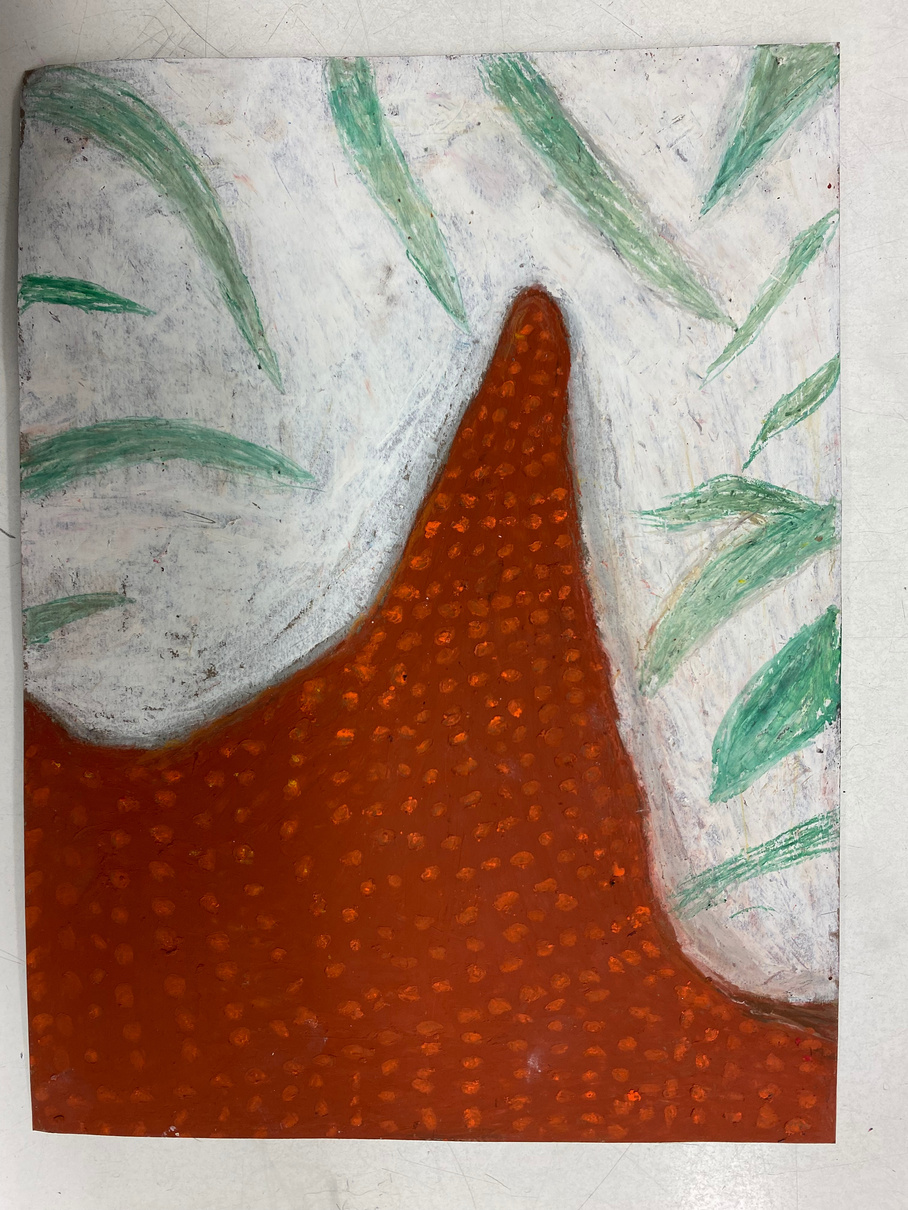
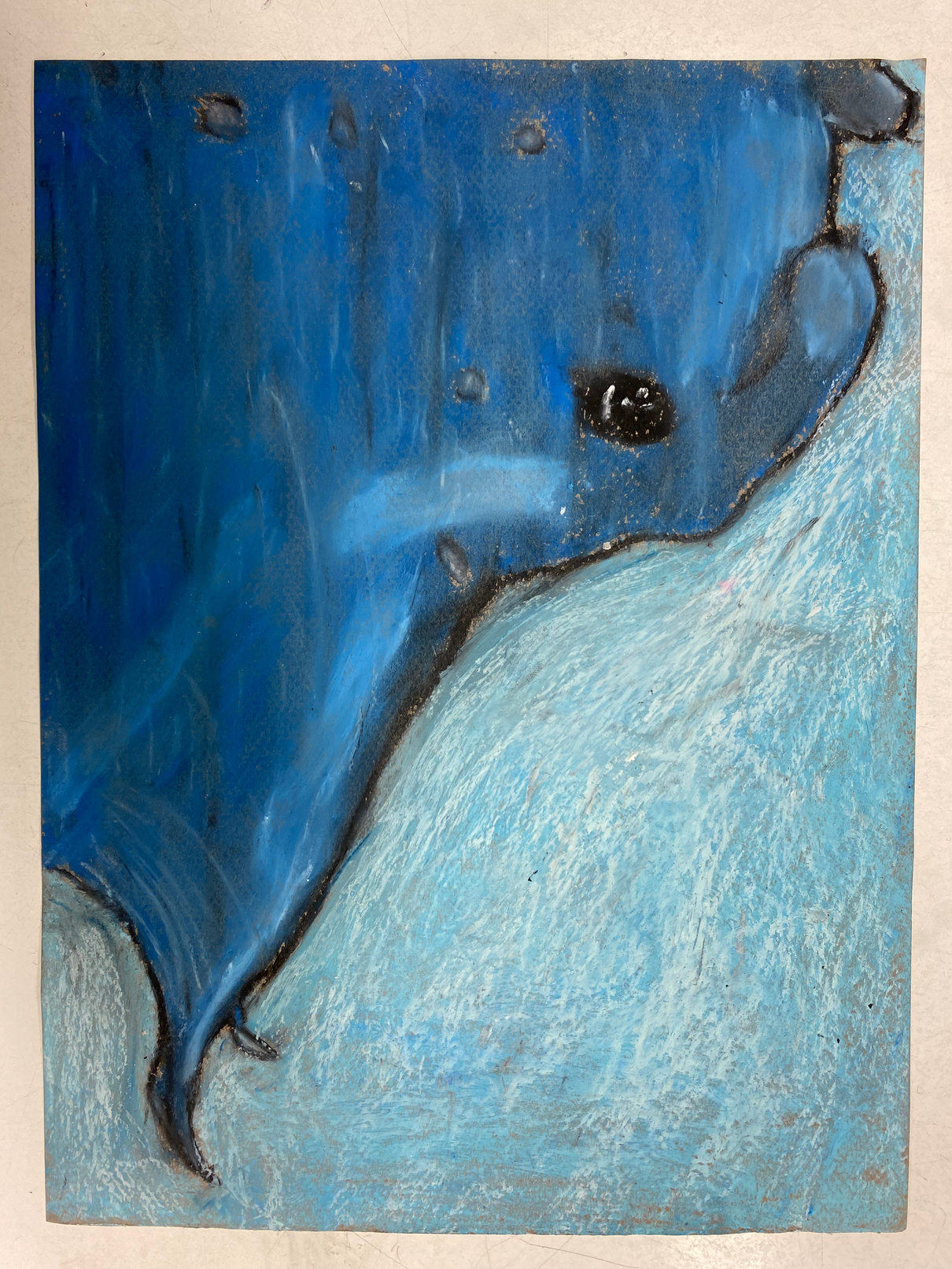
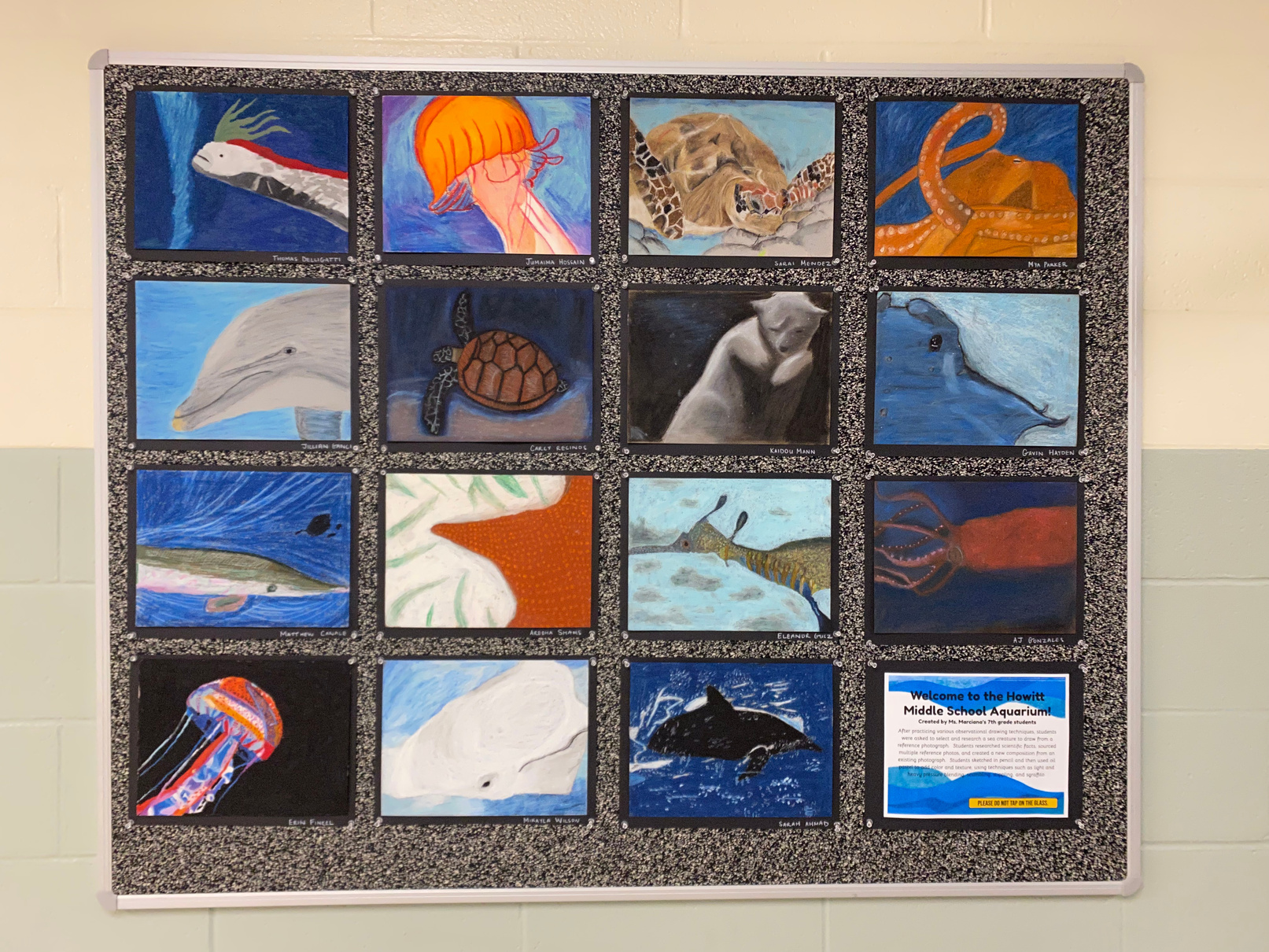
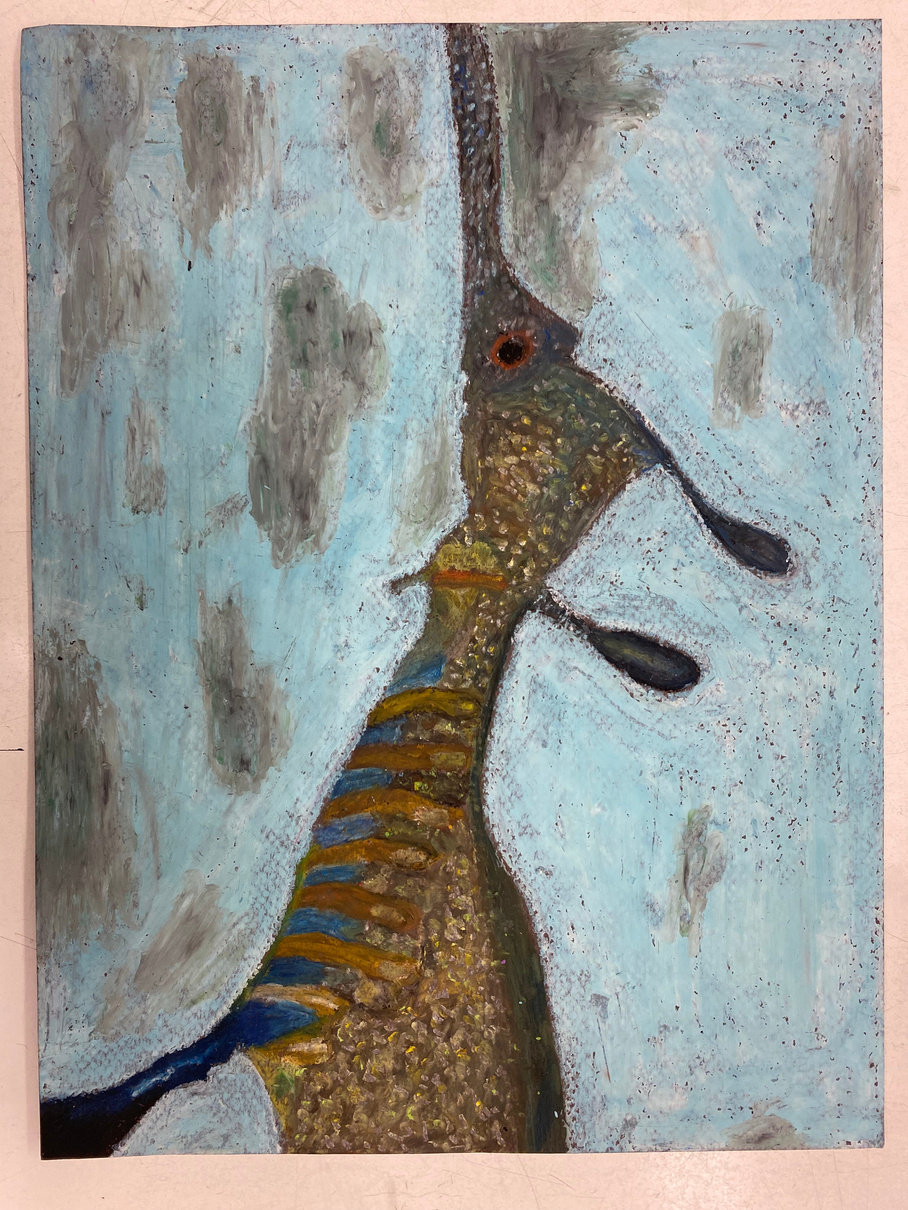
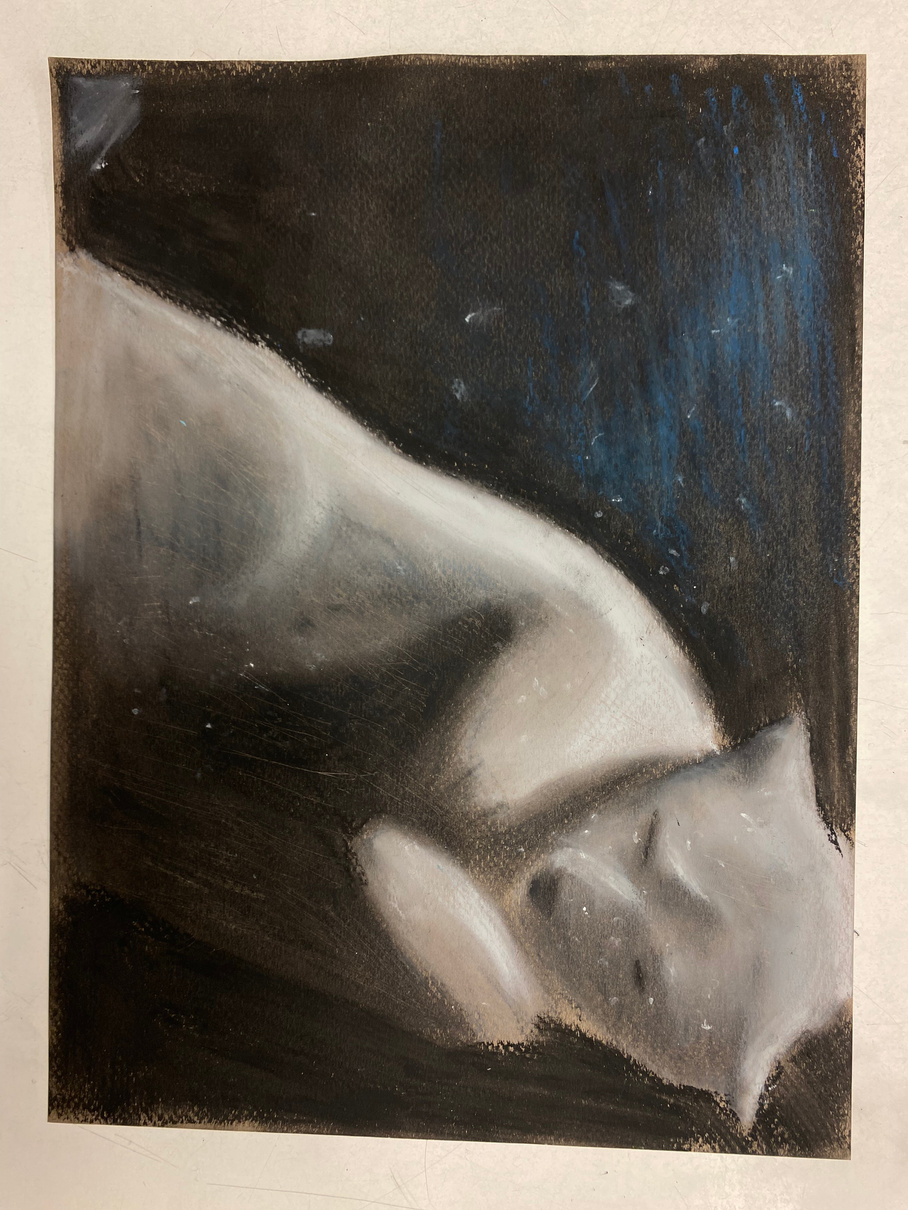
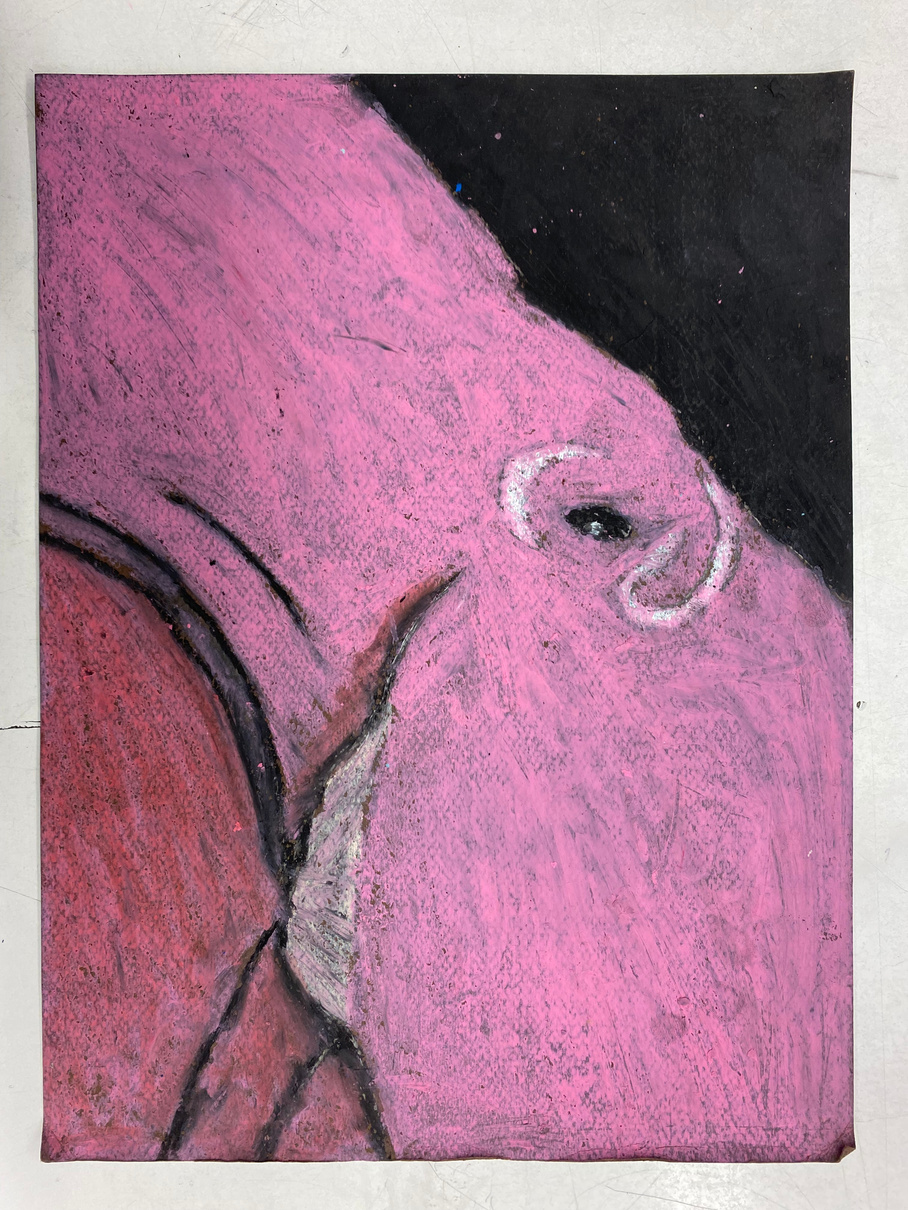
Students are assessed in four categories: Craftsmanship and Technical Skills Development, Understanding of Content, Achievement of Learning Targets, and Completion of Assignments, Creativity and Aesthetics, and Participation, Focus, Effort, and Care. Students are assessed on a scale from one to four. A three out of four means a student met targets and expectations, a four out of four means a student exceeded targets and expectations.
Assessment
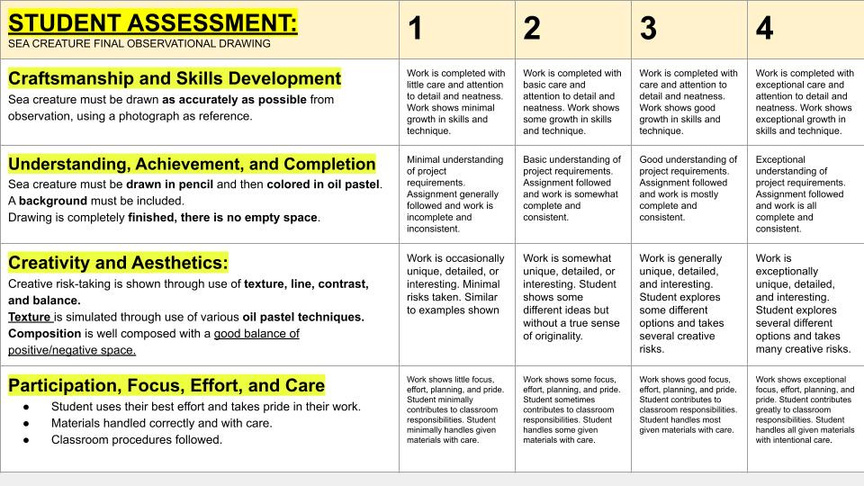
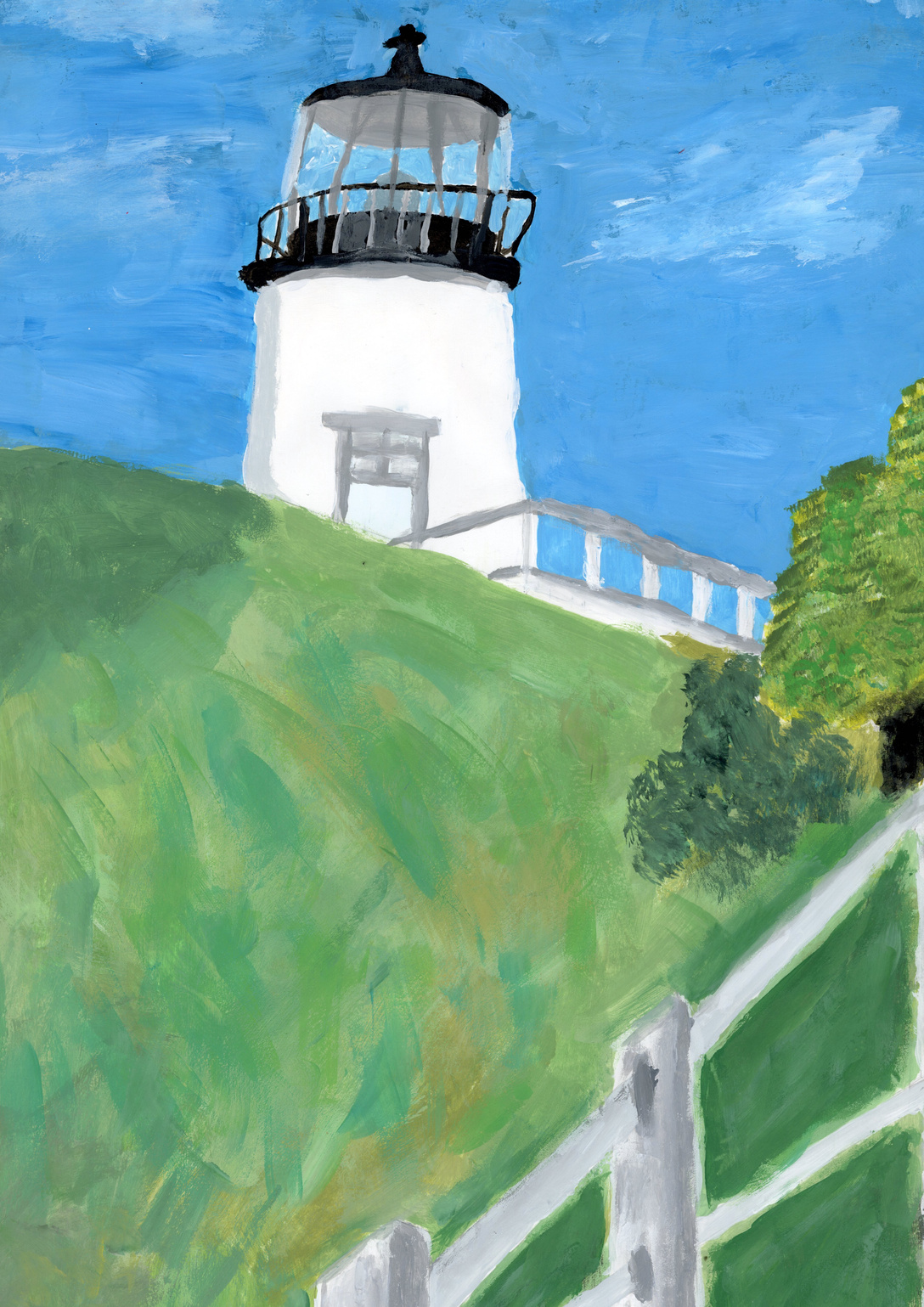
Studio Art, Farmingdale Senior High School
2D and 3D Safe Spaces inspired by the work of David Hockney
The Enduring Understanding, "Personal Safe Spaces," was inspired by the stories I heard about Farmingdale High School students during the beginning of my student teaching placement. I learned that many students were struggling at home with various issues, from family issue to substance abuse, and these issues intensified during the COVID-19 pandemic. Many students found "home" inside the walls of Farmingdale High School, while some still struggled to find a place where they feel comfortable and can be their best selves. With this project, I invited students to think critically about their environment and to consider how different environments affect their mental health.
Objectives
- Students will be able to draw using one point perspective.
- Students will be able to use depth and value to create a realistic environment.
- Students will be able to use color and color theory to express mood and emotion.
- Students will be able to use Marc Brackett's Mood Meter to create a work of art.
- Students will be able to write about compositional and aesthetic choices in their artwork and their peers' artwork.
- Students will understand how artists use techniques in color and line to express an emotional state.
- Studet will understand the ways in which one's environment can reflect and unfluence emotions.
Essential Questions
- What is a safe space?
- How can our environment reflect and influence our state of mind?
- How can an emotional state be expressed in a work of art?
National Core Arts Standards
VACr1.2.Ia: Shape an artistic investigation of an aspect of present day life using a contemporary practice of art or design
VAPr6.1.Ia: Analyze and describe the impact that a collection of artwork has on personal awareness of social, cultural, or political beliefs and understandings
VARe7.1.Ia: Hypothesize ways in which art influences perception and understanding of human experiences
VACn11.1.Ia: Describe how knowledge of culture, traditions, and history may influence personal responses to art.
Process
Atmospheric and Linear Perspective
Students learn key perspective definitions and terms and practice using a horizon line and vanishing point to create depth. Students begin with simple forms that they then transform into recognizable objects.
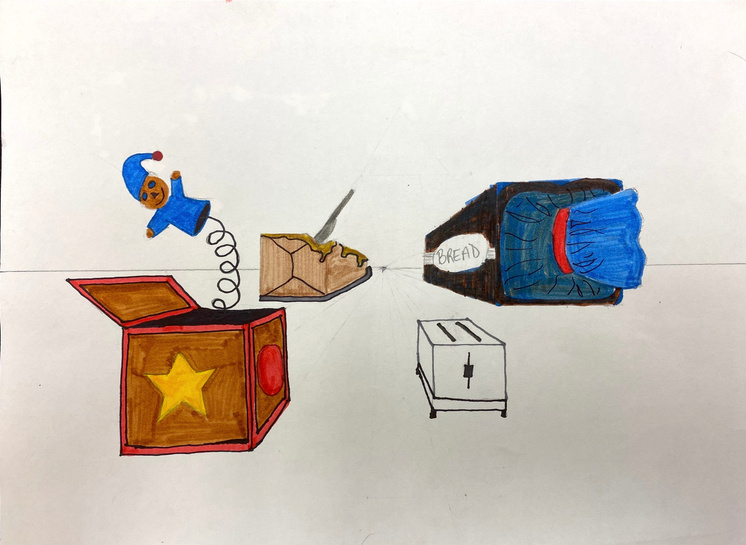
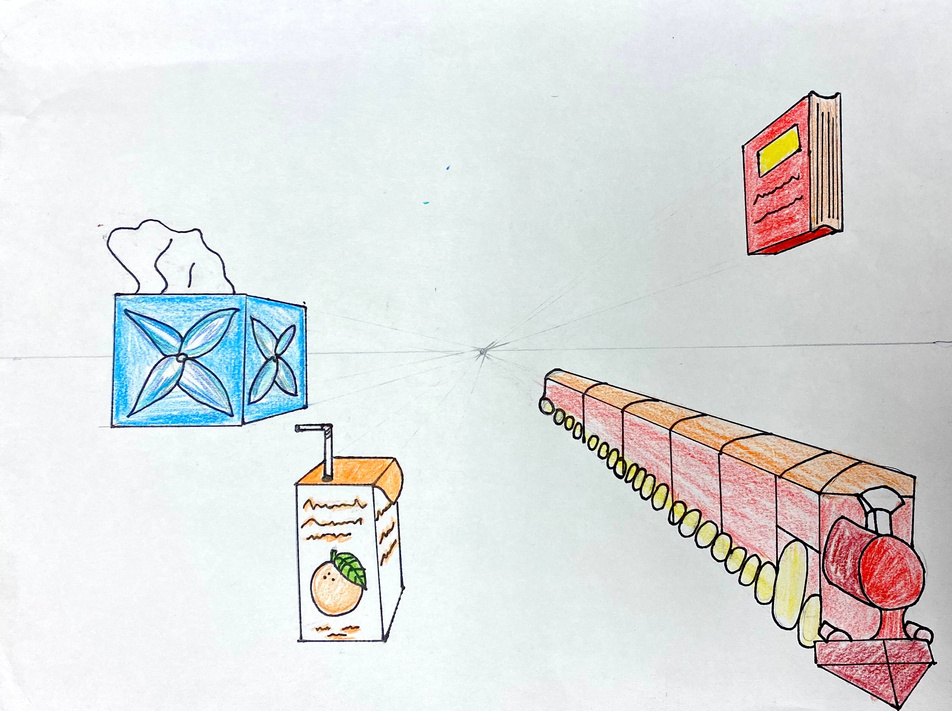
David Hockney and Safe Spaces
Students then learn about David Hockney and analyze the concepts and meanings of his work and his use of linear and atmospheric perspective to create depth and communicate emotion. Students study Hockney's process and understand how one's environment can inspire art.
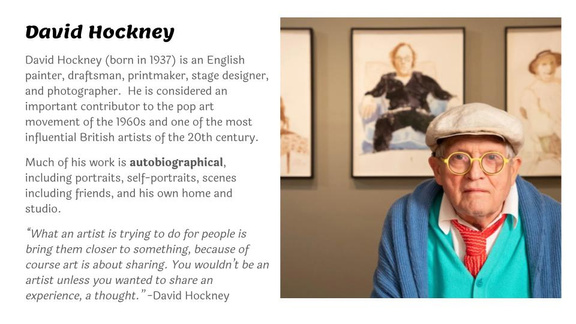

Marc Brackett's Mood Meter and Color
Students then answer guided questions to brainstorm "safe sapces" in their lives, where they feel the most comfortable and free to be themselves. Students then use the Mood Meter to identify emotions related to their "safe space."
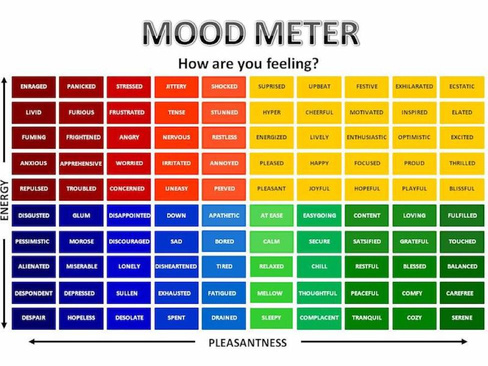
Students will spend 1-2 weeks on their underlying drawing and 1-2 weeks on their paintings. Once compositional drawings are complete, students learn color theory and color mixing with three primaries, how to layer values to create depth, opacity, and how to care for materials.
Finished Work:
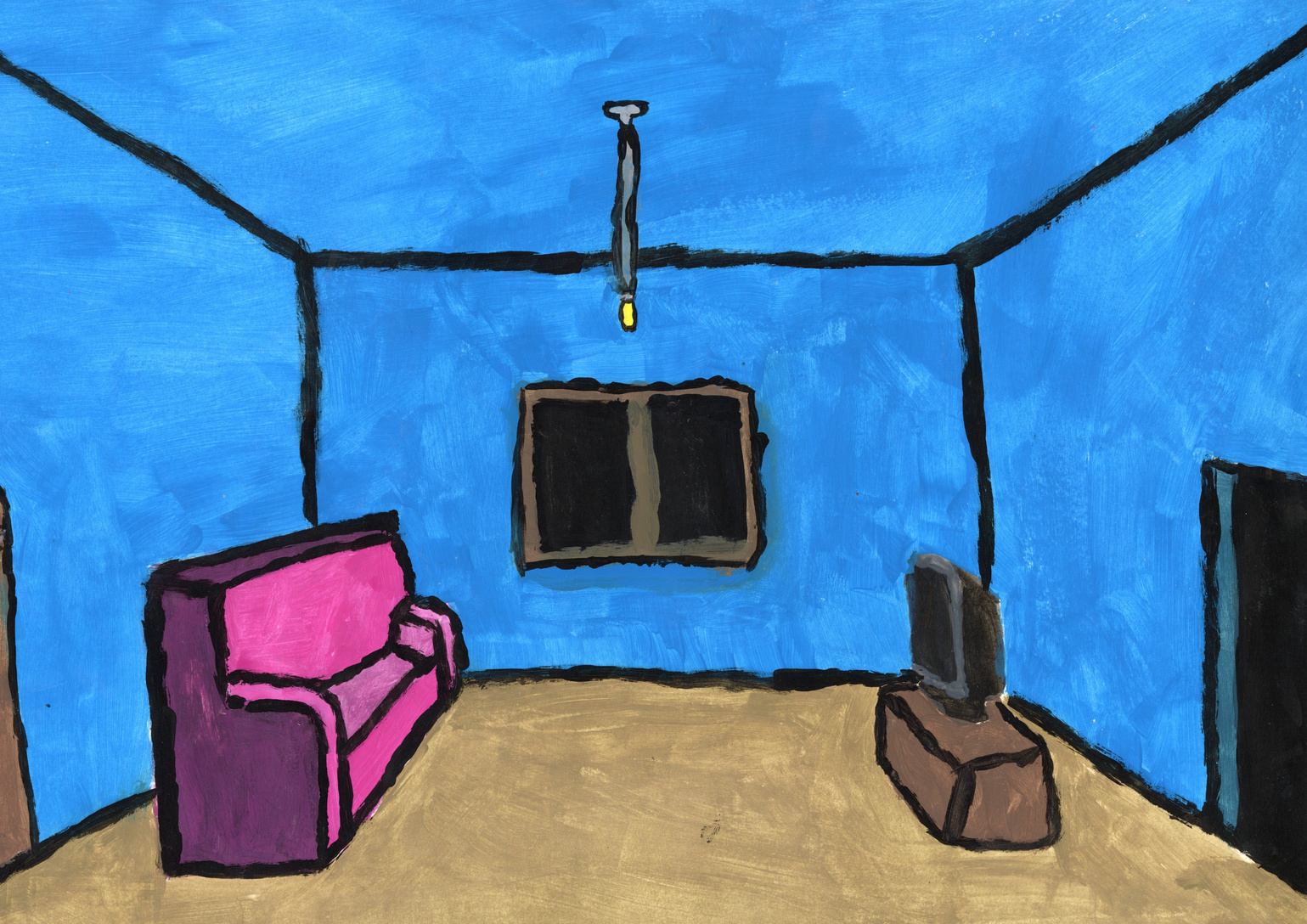

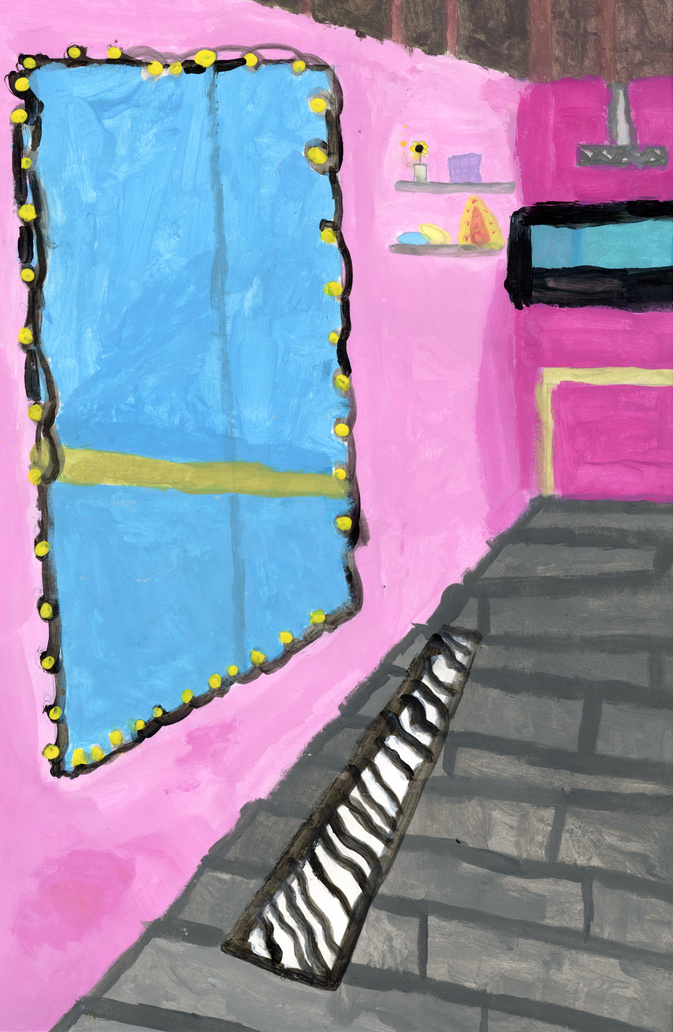

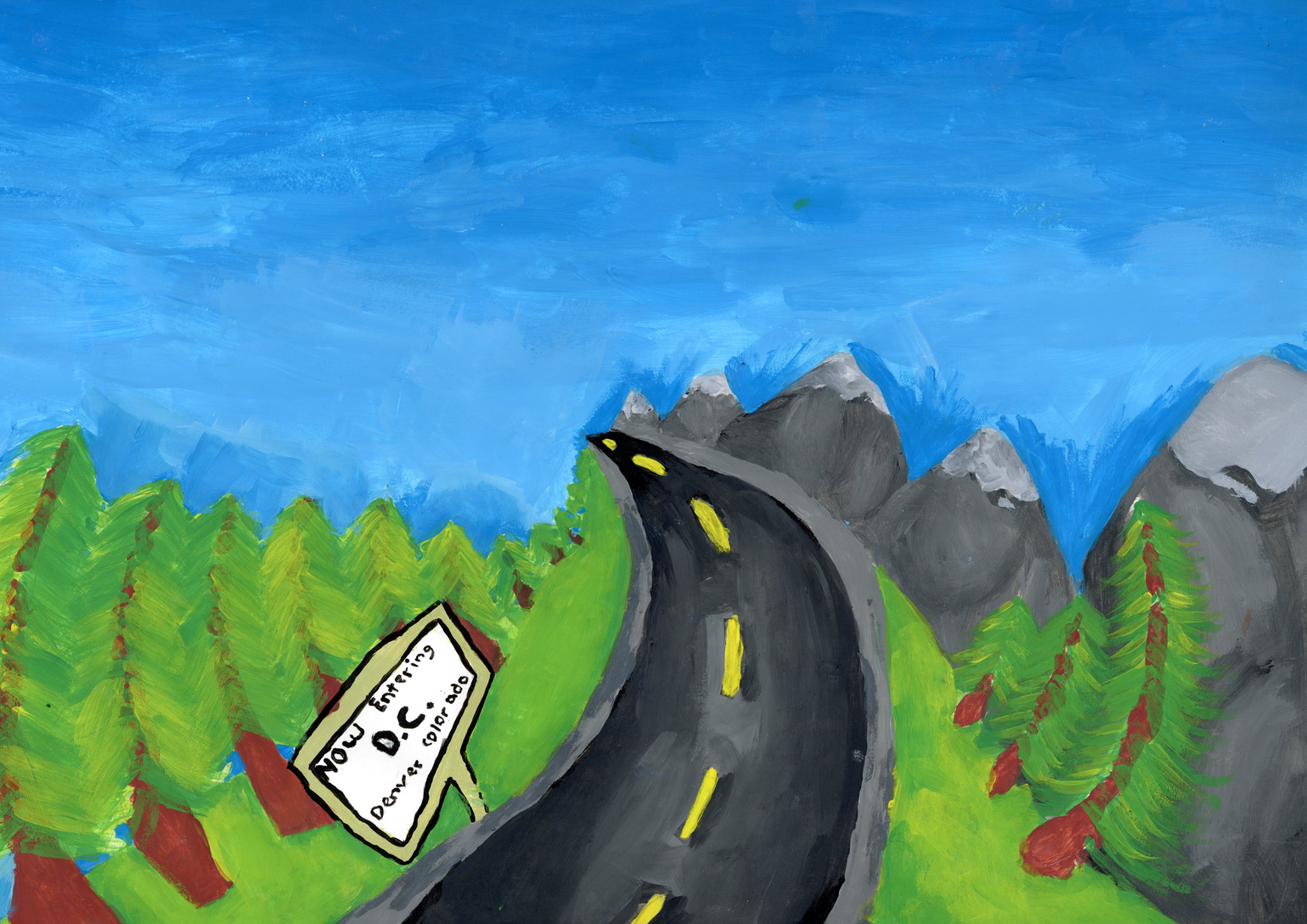
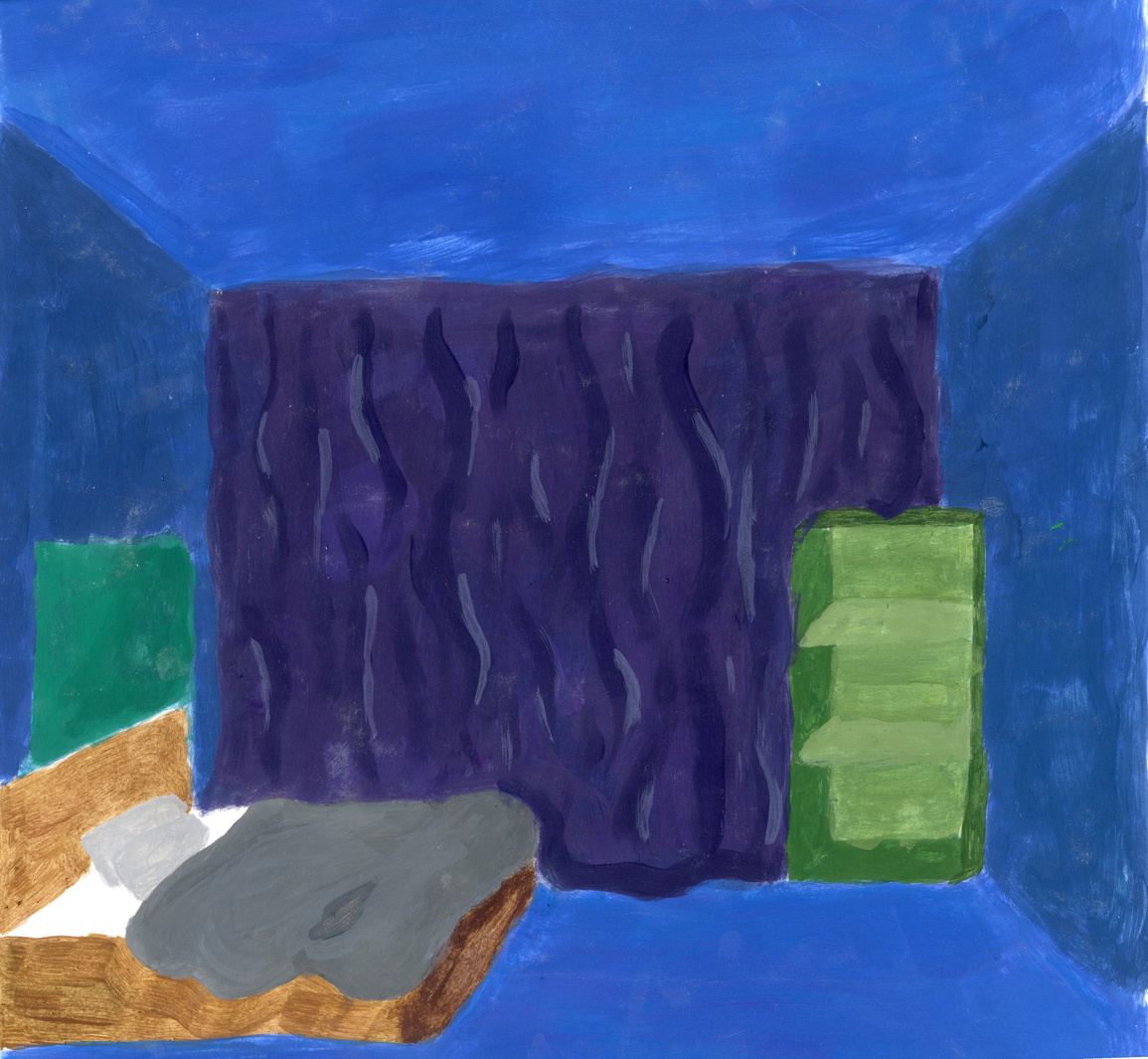
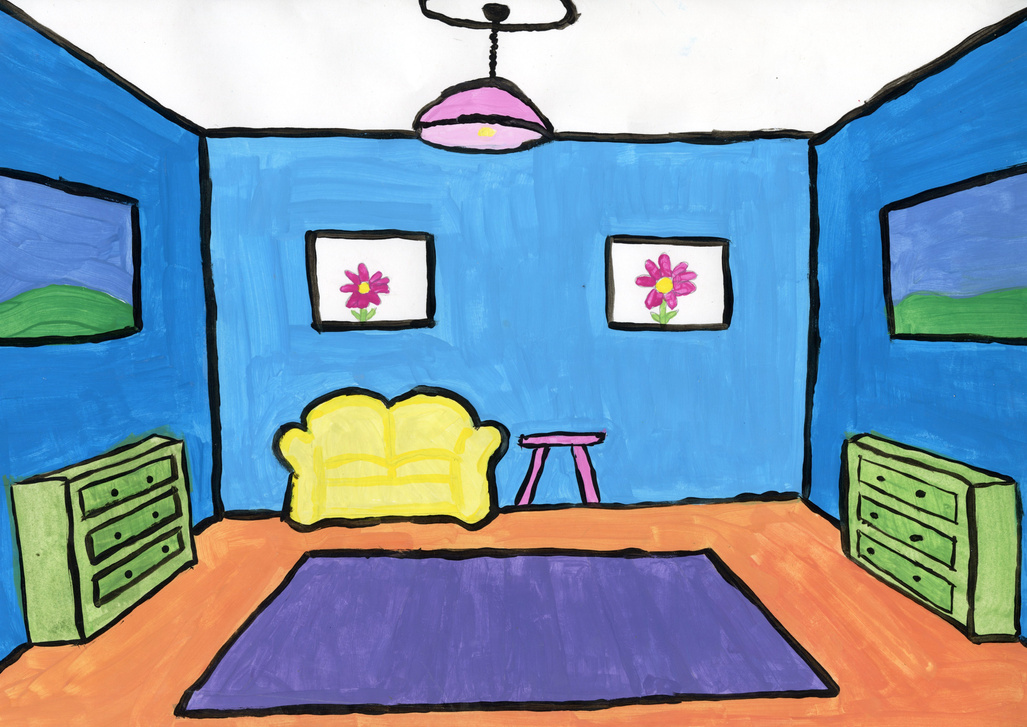
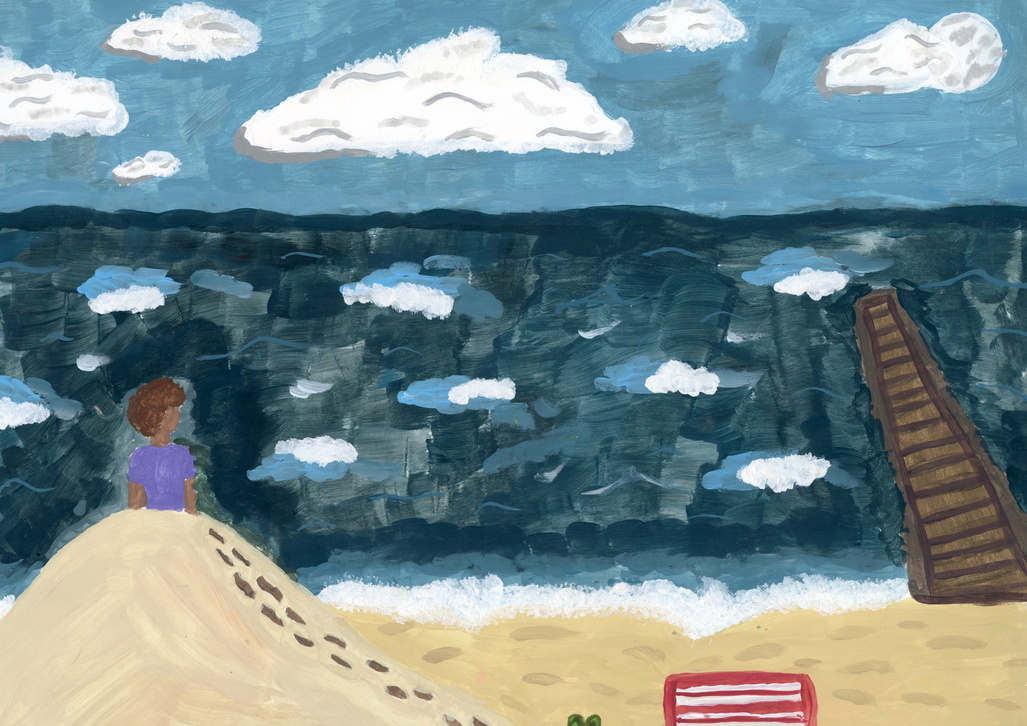
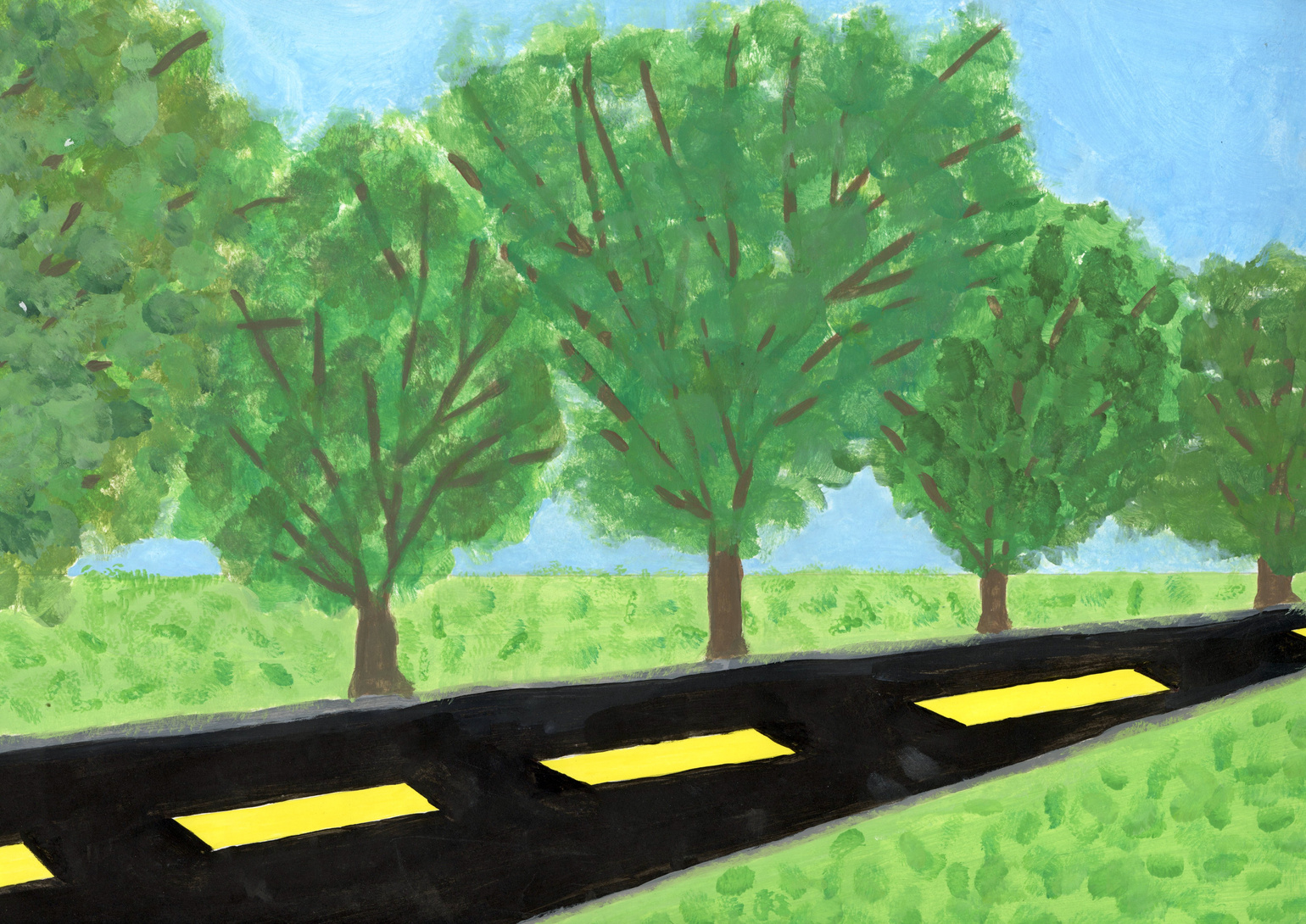
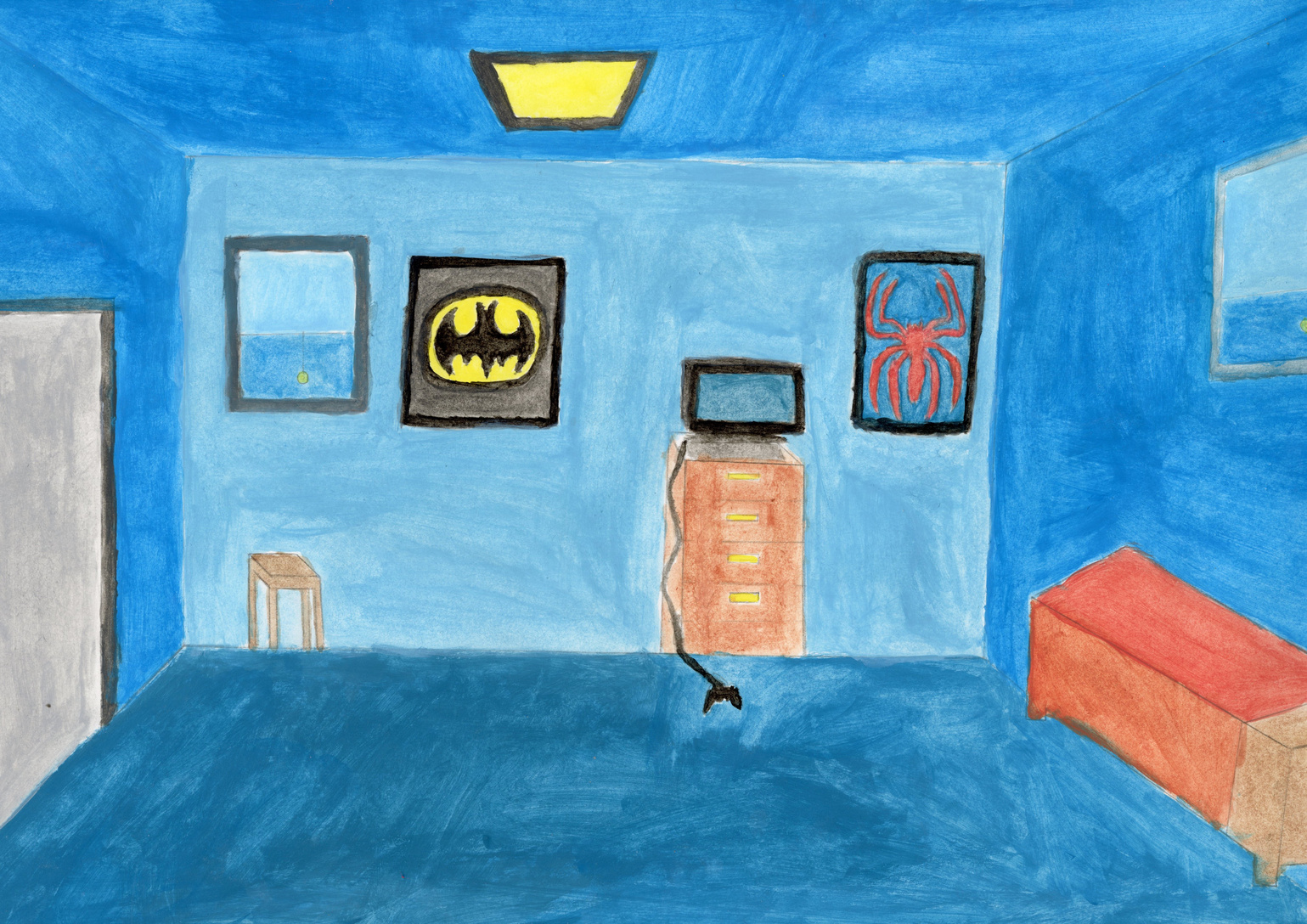
Translating to Three Dimensions
Students then translate their two-dimensional paintings into a three-dimensional ceramic sculpture. Students learn how to roll slabs and use additive and subtractive techniques. Students determine which compositional elements are most essential to create a simplified version of their painting.
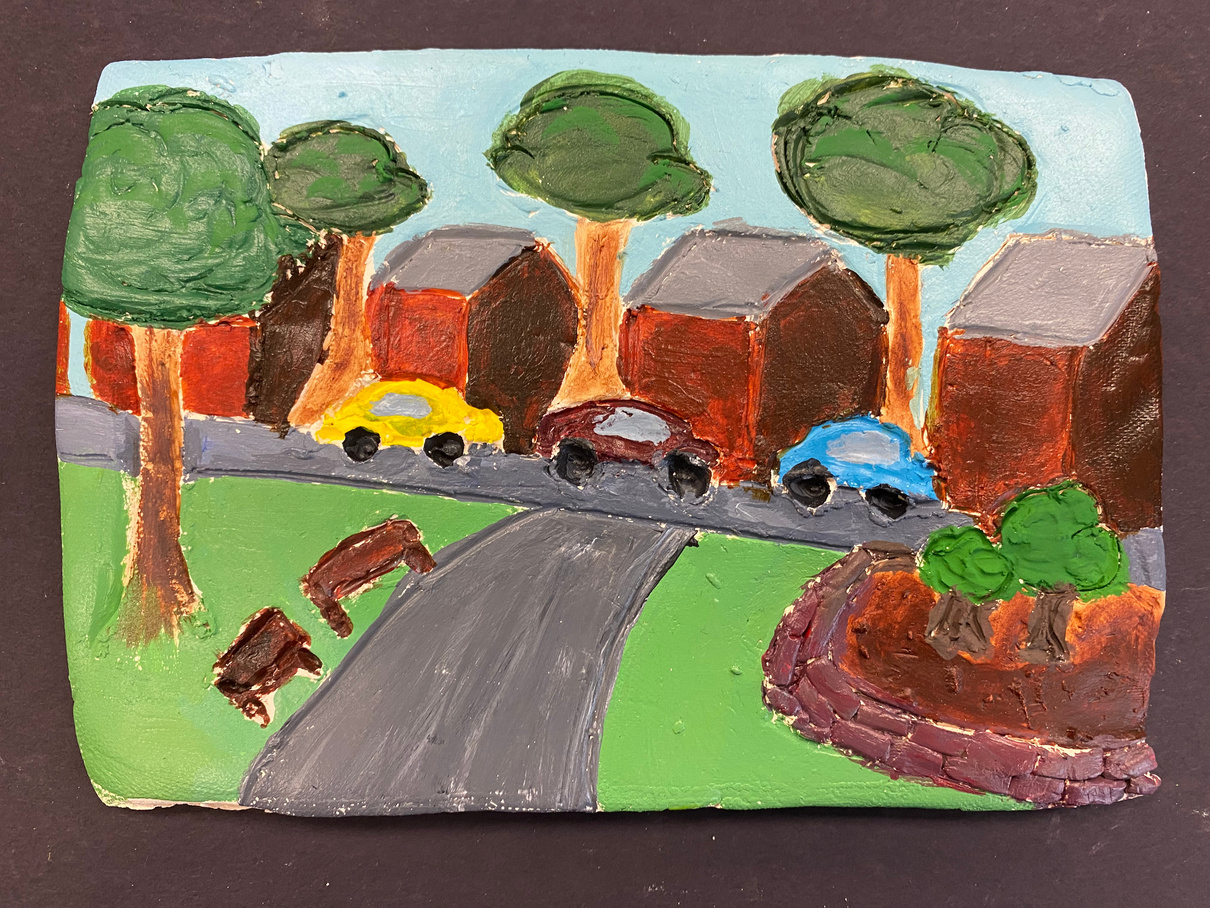
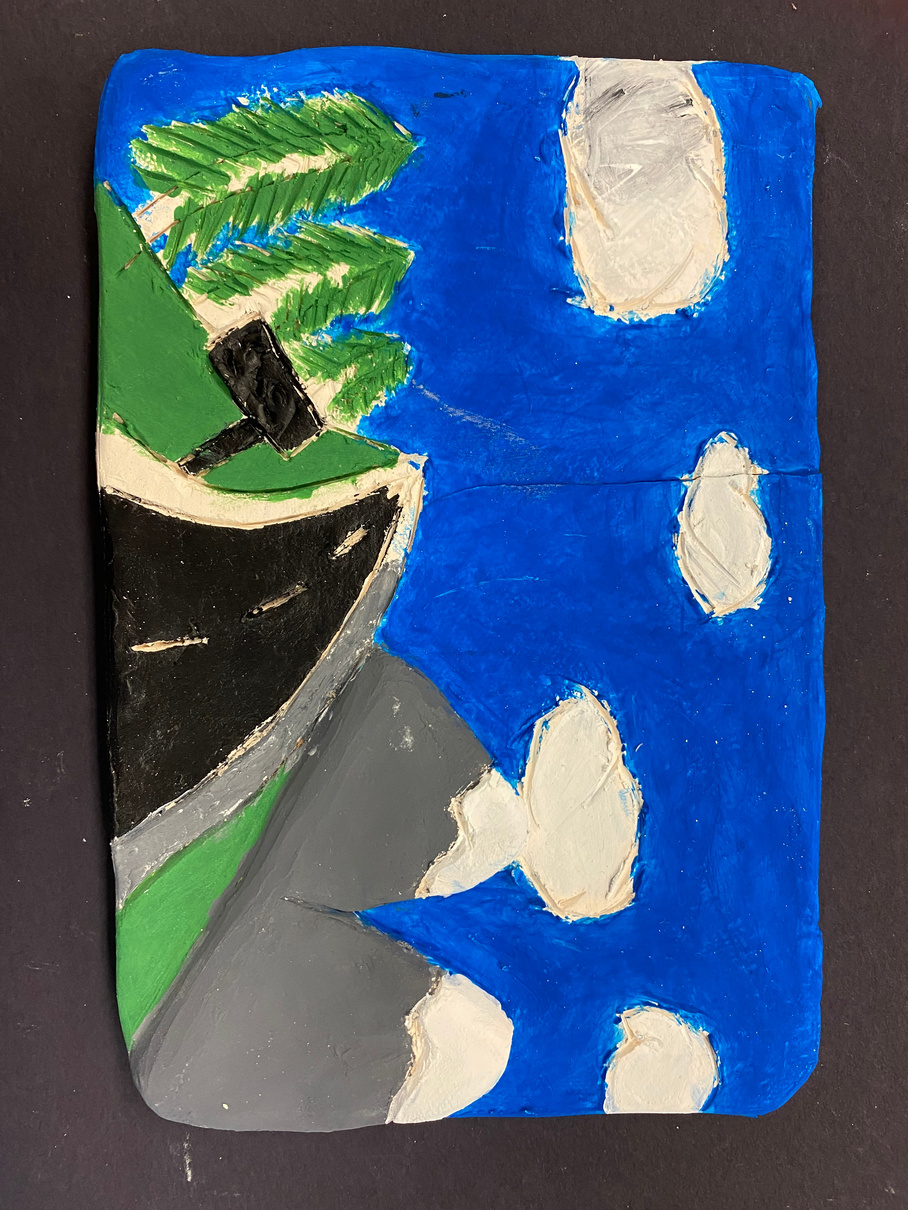
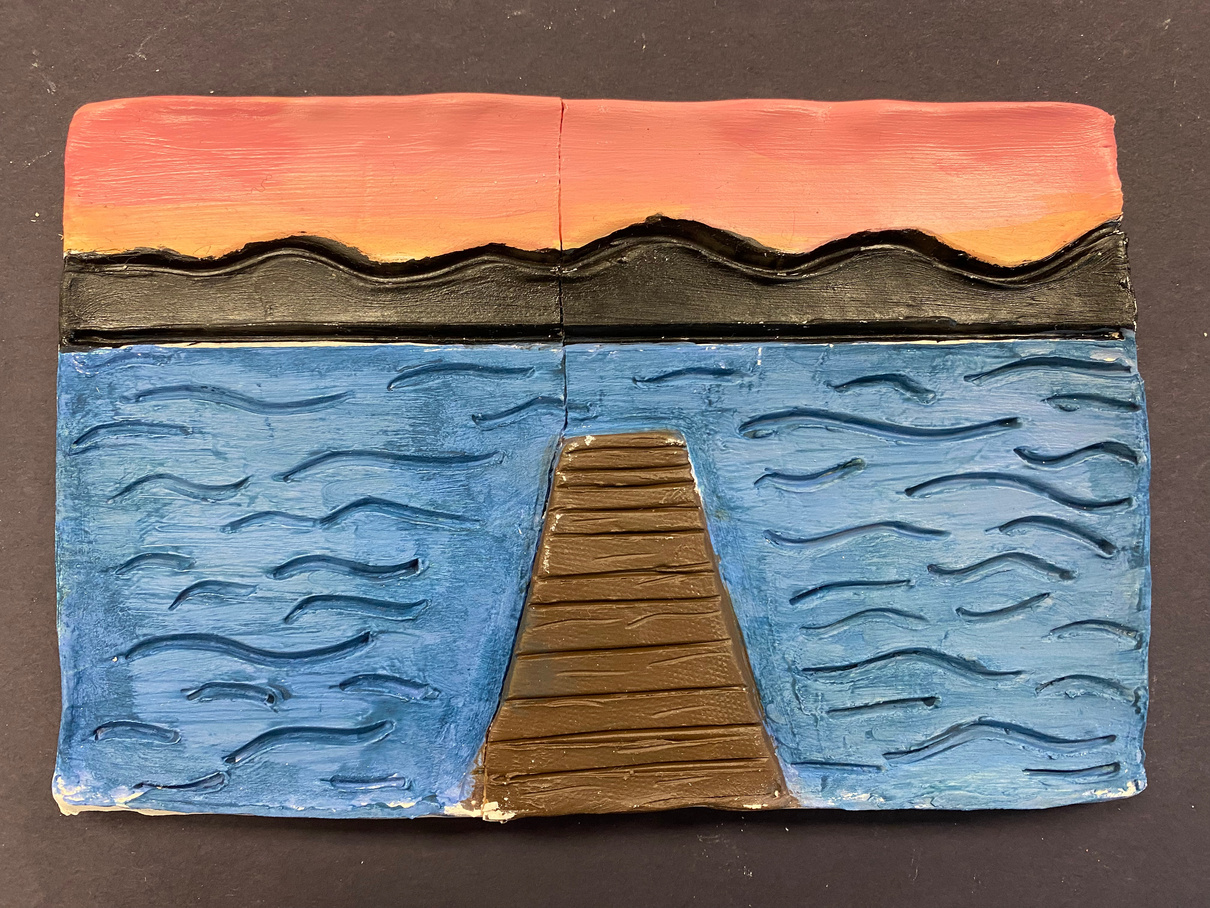
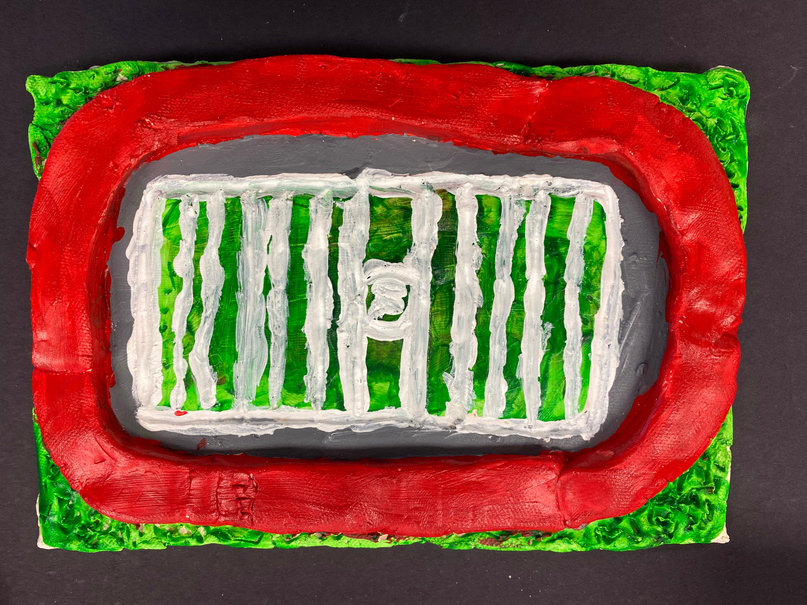
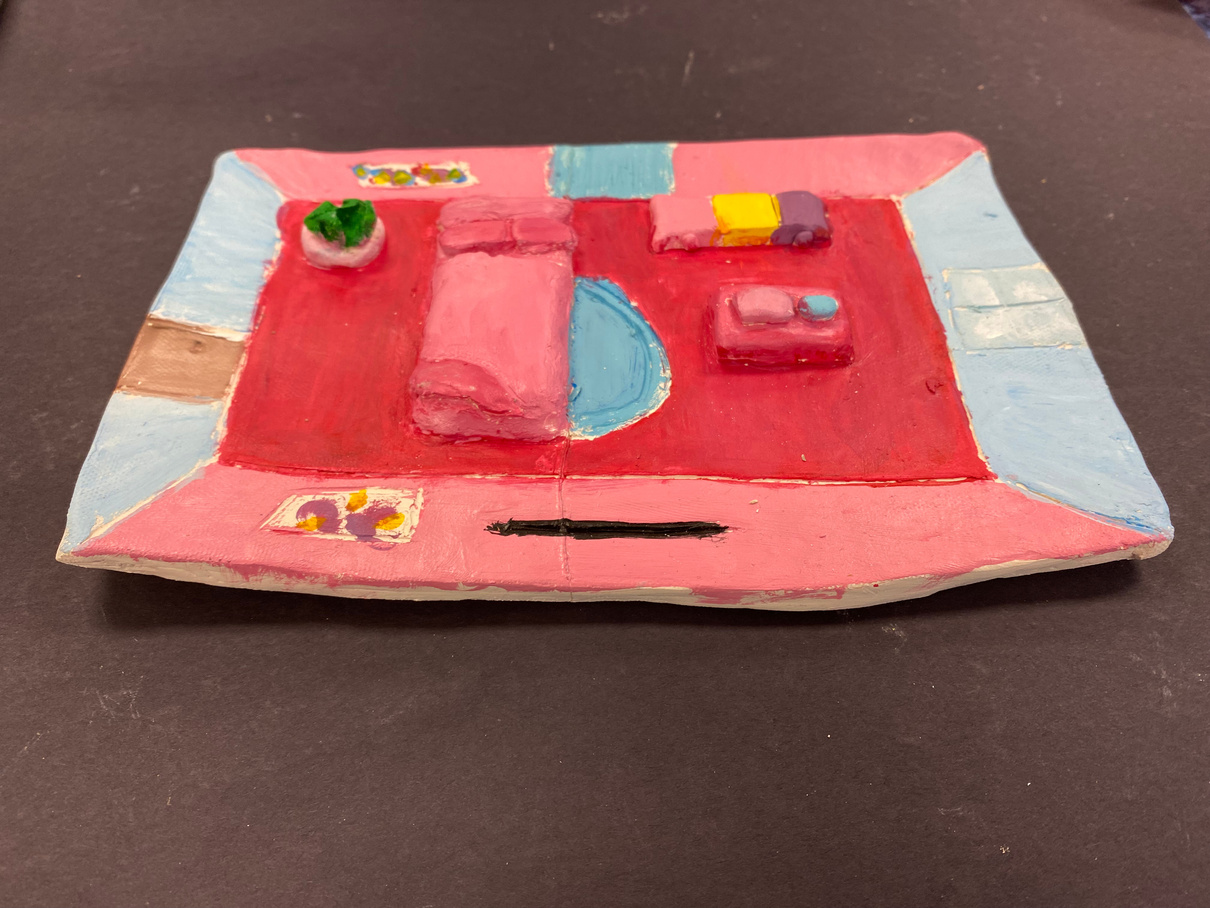
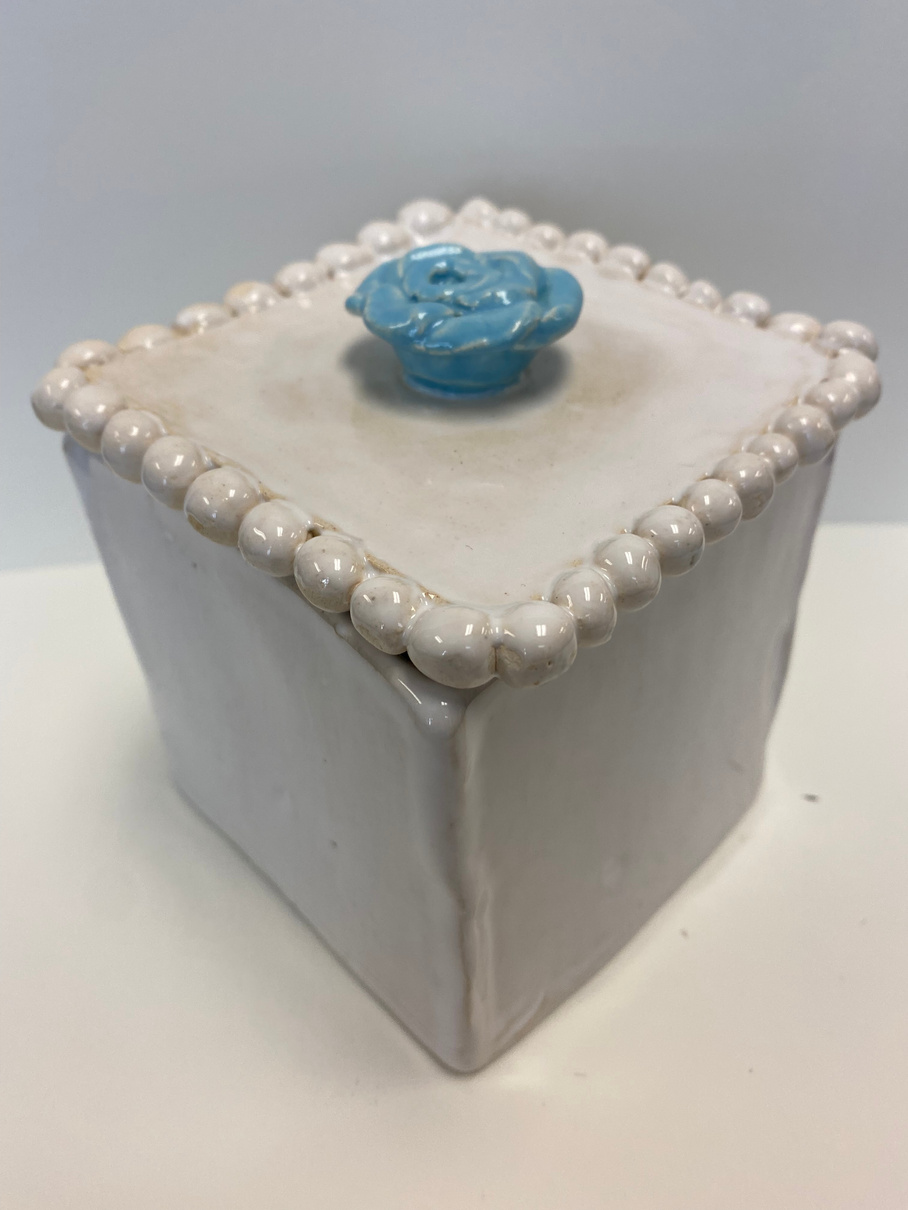
Ceramics, Farmingdale Senior High School
Jewelry Sets Inspired by Media
Teenagers are heavily influenced by media, whether it be movies, tv shows, books, music, video games, etc. Stories and visual media are integral to human connection and have inspired artists and artworks for generations. Through this lesson, students will choose a form of media that is significant to them and create a jewelry set that is inspired by, in response to, or in conversation with an existing work.
Artists throughout time have influenced and inspired each other. Drawing inspiration from another form of media is an artistic practice used to expand knowledge of other art forms, communicate with other artists visually, and create work that is thematic and narrative. Students will research a form of media and compose three designs inspired by that form of media.
Through this lesson, students will also create a body of work that is cohesive and in conversation with itself. Students will retain a uniform artistic style throughout the jewelry set so that it is cohesive.
Objectives
- Students will be able to create a three-piece set of jewelry that is cohesive in style and concept.
- Students will be able to create a work of art that is inspired by, in response to, or in conversation with an existing work.
- Students will understand the influence of media on communities.
- Students will understand how a work of art can be in conversation with another work of art.
Essential Questions
- How has media influenced your life?
- How can media connect us?
- How can artists communicate with one another?
National Core Arts Standards
VACr1.2.Ia: Shape an artistic investigation of an aspect of present-day life using a contemporary practice of art and design.
VAPr6.1.Ia: Analyze and describe the impact that an exhibition or collection may influence ideas, beliefs, and experiences.
VARe7.2.Ia: Analyze how one's understanding of the world is affected by experiencing visual imagery.
VACn10.1.Ia: Document the process of developing ideas from early stages to fully elaborated ideas.
Process
Brainstorming and Individual Reflection
Students analyze the presence of media in their lives by answering guided questions:
How often do you do the following: Watch films and/or TV sgiws? Read books and magazines? View photographs and artwork? Listen to music?
Are any of these a part of your daily routine?
Are there any artists (visual, musicians, writers, etc.) that are influential to you?
Are there any specific works of art (artworks, songs/albums, films, books, etc) that are influential to you?
From these guided questions, students will choose a form of media and create a jewelry set (trinket box and 2 pieces of jewelry) inspired by that choice.
Assembling Slabs to create a Box
Students are required to create three pieces in their jewelry set: a trinket box, a pendant or pin, and a choice of either earrings, rings, or beads.
Students learn how to create a rectangular container using stencils.
Students learn the importance of precision in pre-planned measurements when creating three-dimension geometrical forms such as rectangular prisms. Students create their own stencils and then roll and cut slabs for each side of their container. Students then create their second and third jewelry piece.
Media Arts, Farmingdale Senior High School
Animated Pixel Art using Adobe Photoshop
Pixel art, though quite a niche field of art, has reemerged into the art and design world, invoking nostalgia as it references retro video games and art styles. Pixel art is used in many fields such as illustration, game design, and animation. This project was very popular among my high school Media Arts students. They loved the challenge of drawing within set limitations and creating fun, nostalgic animations of a place with personal significance.
Pixel artists use limited file size and limited colors to create detailed, immersive environments. Through this lesson, students are restricted to a small amount of space and a limited amount of colors to create an exciting image, causing students to problem-solve and adjust their usual artmaking habits.
Objectives
- Students will be able to take and use a reference image of a personally significant place to recreate digitally.
- Students will be able to choose and import a limited color palette using Adobe Color.
- Students will be able to use light and shadow to create depth.
- Students will understand how limitations and restrictions influence the artmaking process.
- Students will understand how color can used to represent anad evoke emotions, memories, and mood.
- Students will understand color theory and color relationships.
Essential Questions
- How can we use limited colors to represent an environment?
- How can we use repetitive shapes to represent an environment?
- How does color evoke emotions and memories?
National Core Arts Standards
VACr1.1.Ia: Shape an artistic investigation of an aspect of present day life using a contemporary practice of art and design.
VAPr5.1.IIa: Evaluate, select, and apply methods or processes appropriate to display artwork in a specific place.
VARe7.1.Ia: Hypothesize ways in which art influences perception and understanding of human experiences.
VACn10.1.Ia: Document the process of developing ideas from early stages to fully elaborated ideas.
Process
Learning Pixel Art
Students will be introduced to pixel art, its evolution throughout history, and the restrictions and limitations that come with creating pixel art. Students will compare and contrast early pixel art and modern pixel art, noticing difference in color palette range, file size, and detail.
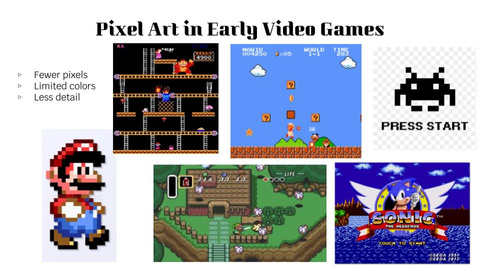
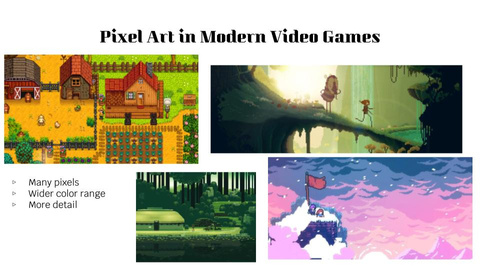
Light and Shadow
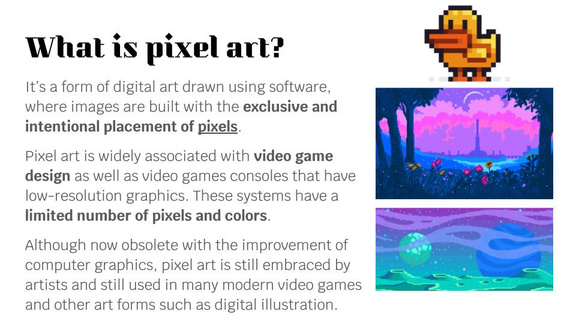
Color Schemes
Before students begin drawing, they will select a color palette using color.adobe.com. Students will first learn about five different color schemes (monochromatic, analogous, complementary, split complementary, and triad) and select a color scheme that best represents the emotions and mood associated with their environment.
Students will then be lead through a step-by-step demonstration on how to create pixel art in Adobe Photoshop and how to manipulate tools to create values. Students will learn how values are created using both traditional and digital methods.

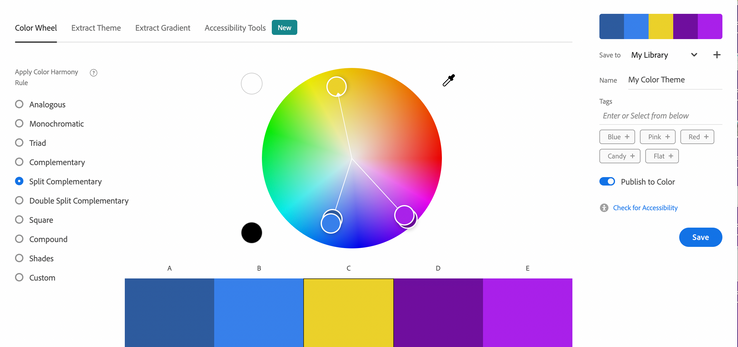
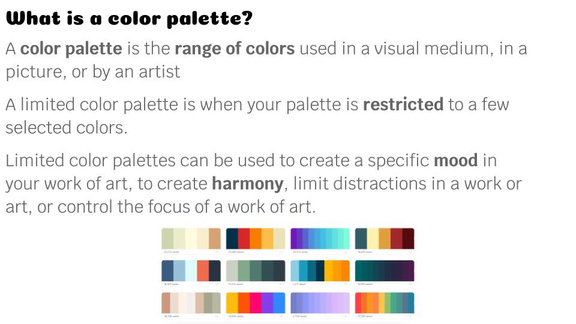
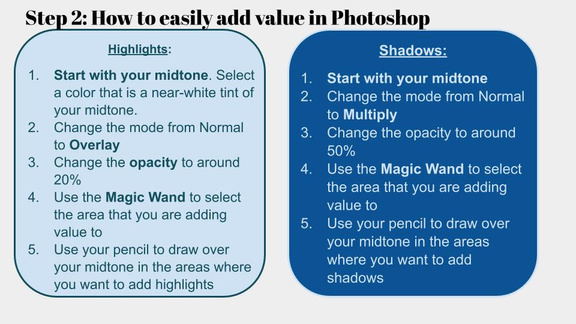
Students will have 2-3 weeks to complete their drawing. Students are limited to a small file size (400 x 200 pixels) and must stick to their limited color palette.
Once the drawing is complete, students will have 1 week to animate their drawing. The animation must have a minimum of 5 frames and there must be at least one moving object.
Finished Work:

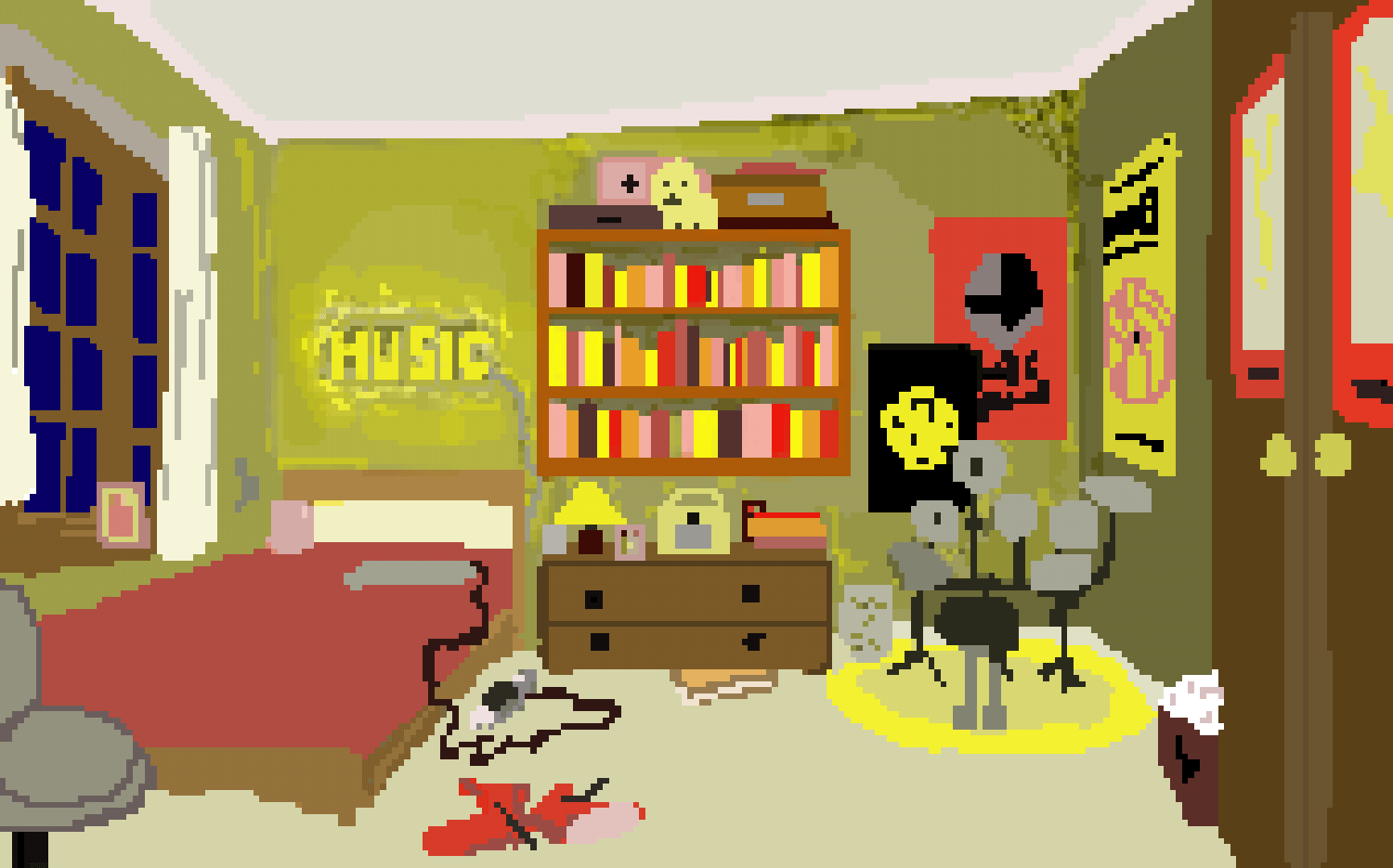

Student Artwork Gallery
Here's some more student examples of artwork from the elementary and secondary levels.
Animation Club, Howitt Middle School
Animation Club was an extracurricular club where I taught students how to create 2D animations using Photopea on their Chromebook. We studied process and completed exercises done by real working animators.
Tessellations - Media Arts, Grades 9 - 12
Students were asked to research an animal and finds its different species and variations. Students then created a tessellated shape of this design using Adobe Photoshop and added details to represent different species.

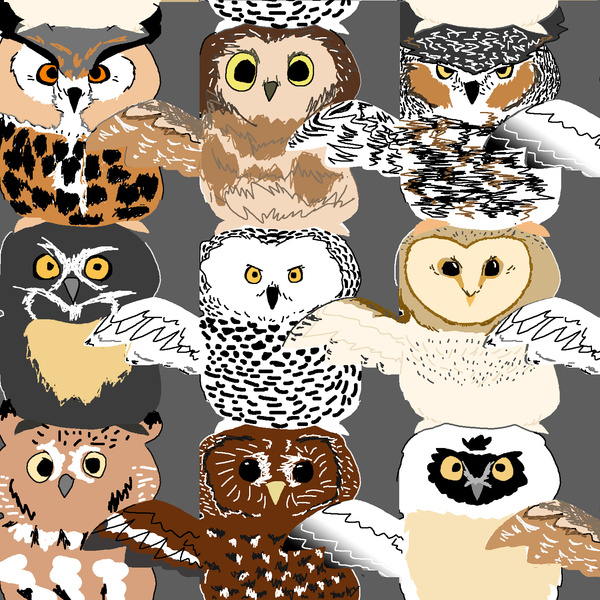
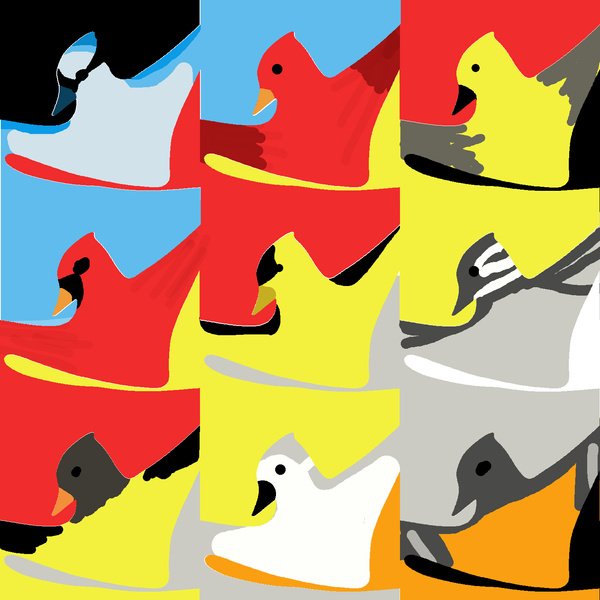


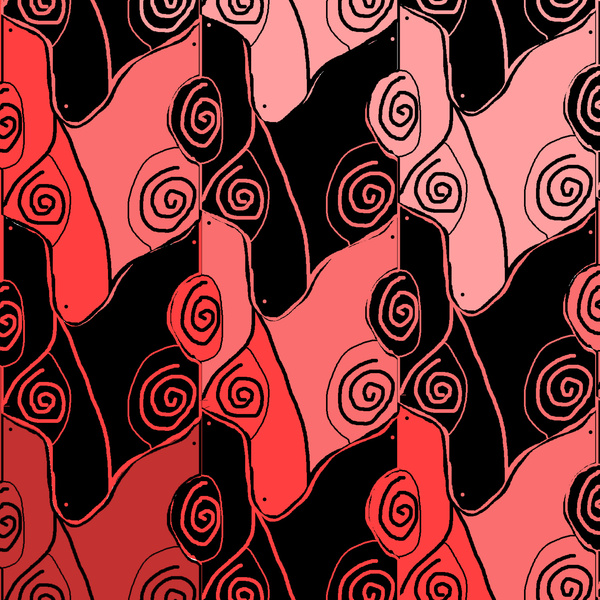
Rotoscopes - Film + Video, Grades 10 - 12
Students were asked to film a 3-5 second clip of a dynamic movement, and then created a rotoscope animation using Adobe Photoshop.

Continuous and Modified Contour Drawings - 7th Grade
After learning about blind, continuous, and modified contour drawing, students chose to complete either a self portrait or a still life using one of these methods. Students also chose an emotion to represent in their painting and planned a color scheme that would best represent that emotion.
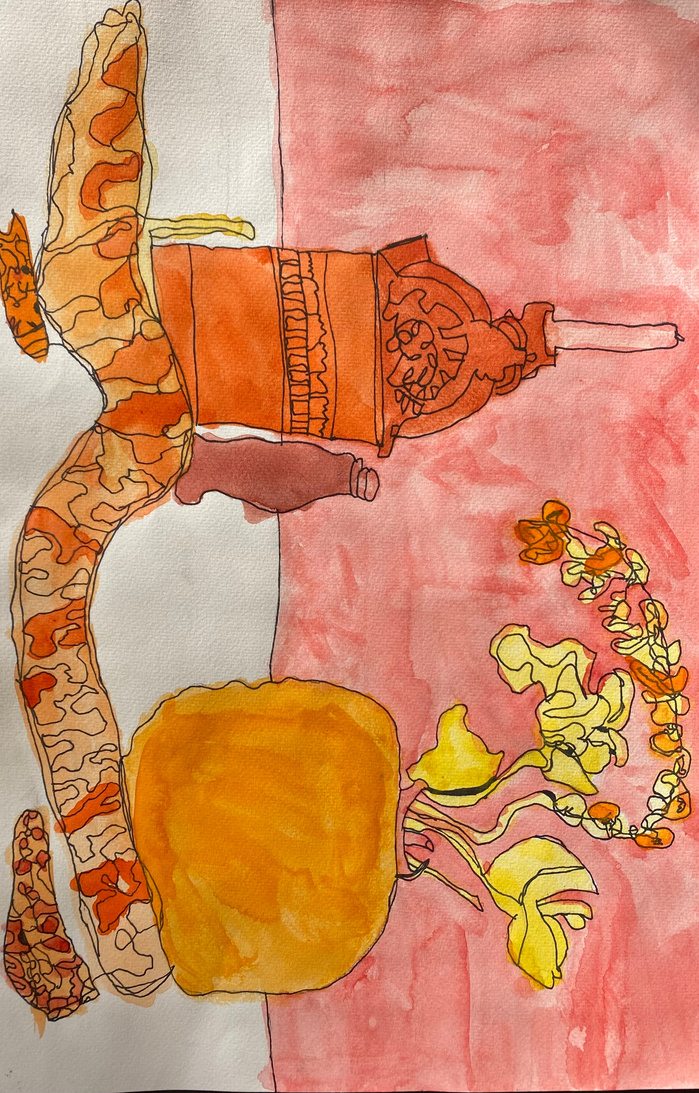
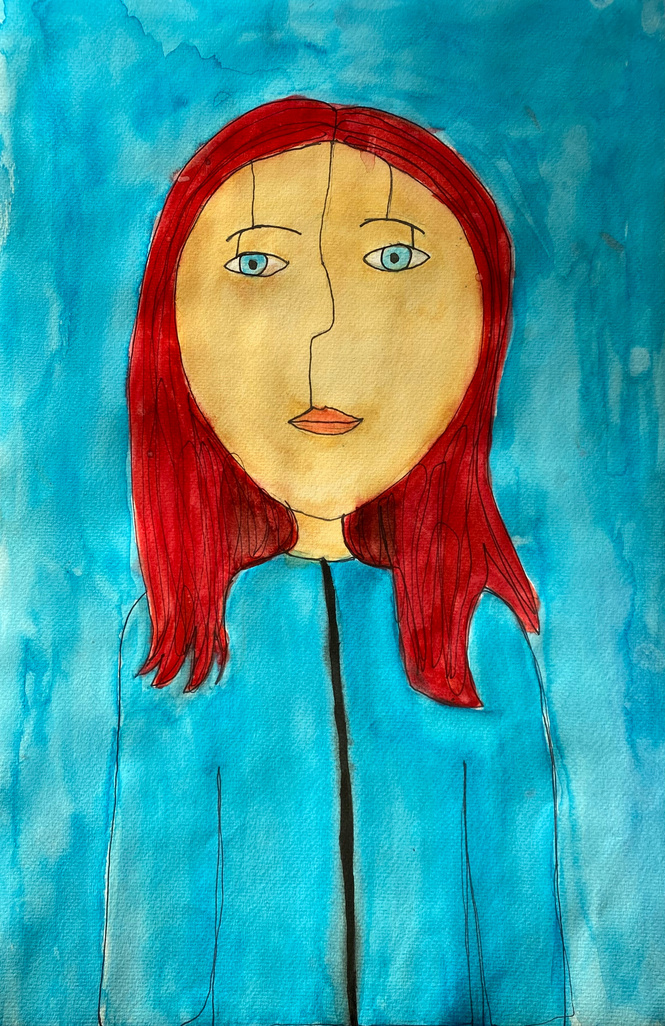
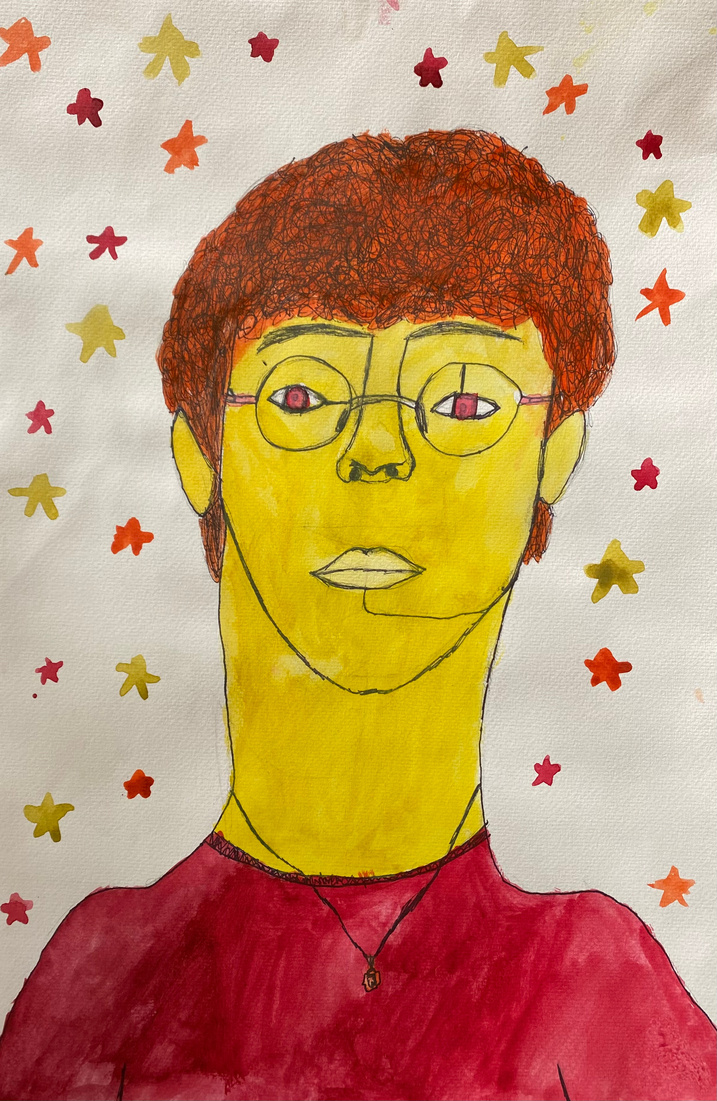
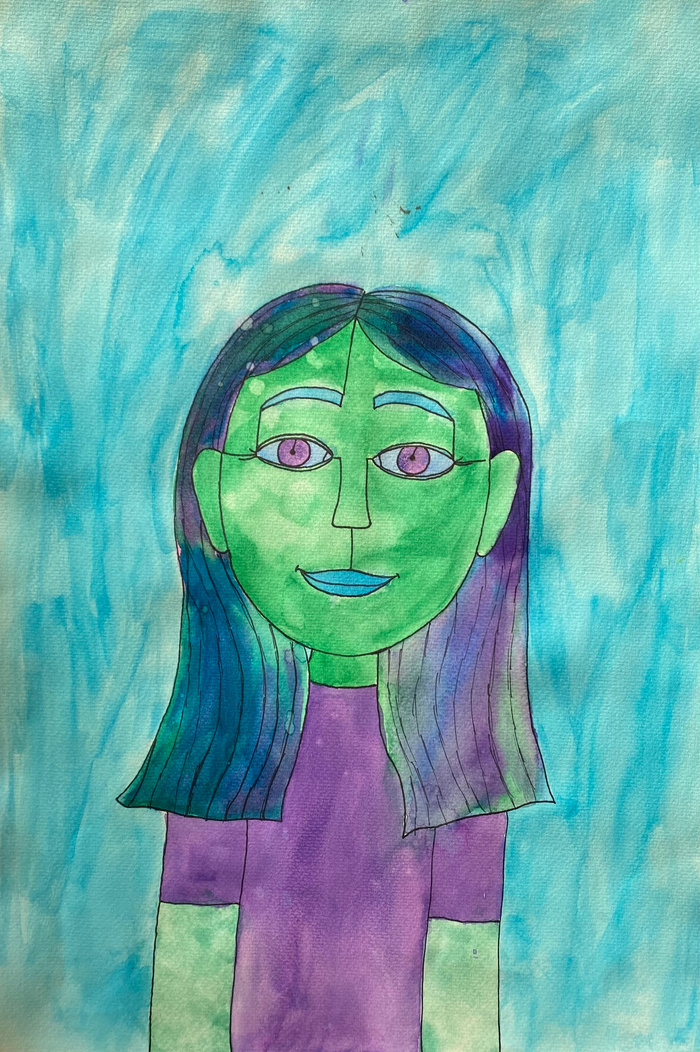
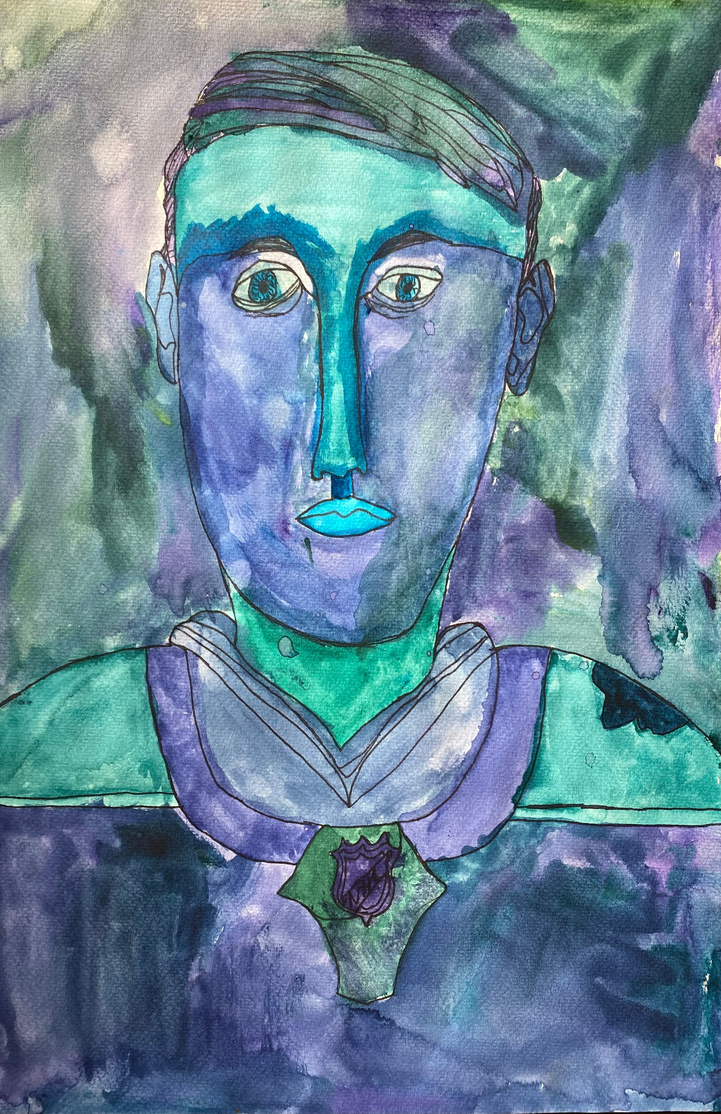
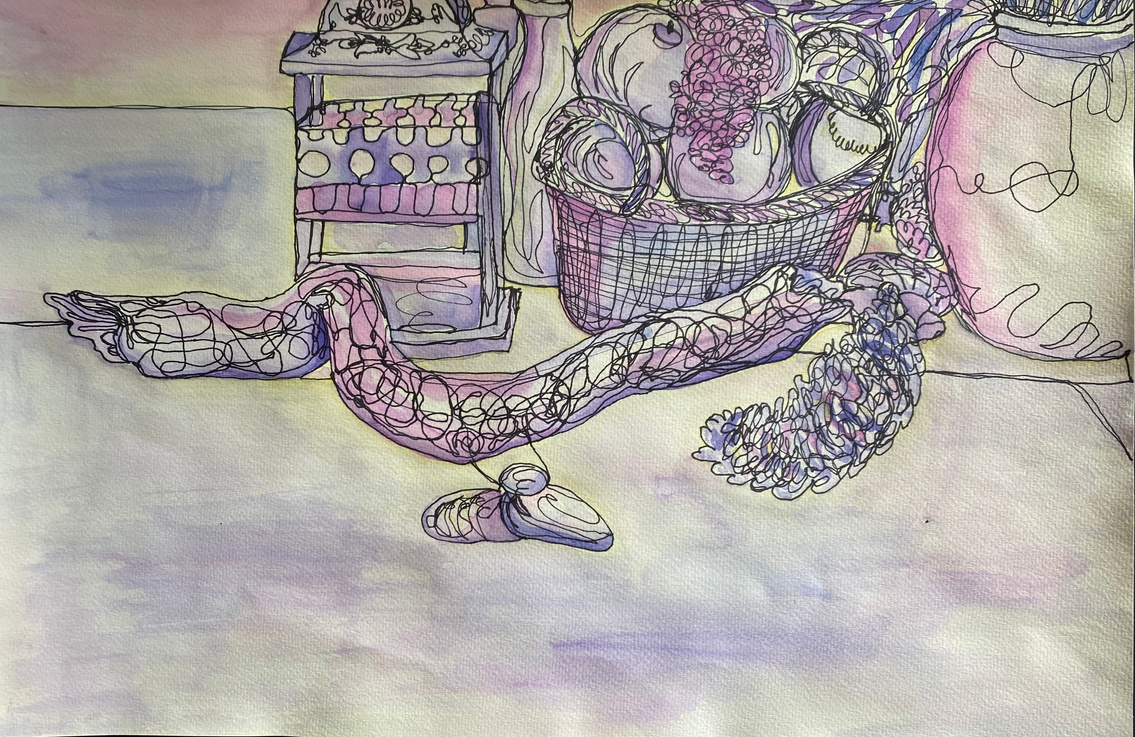
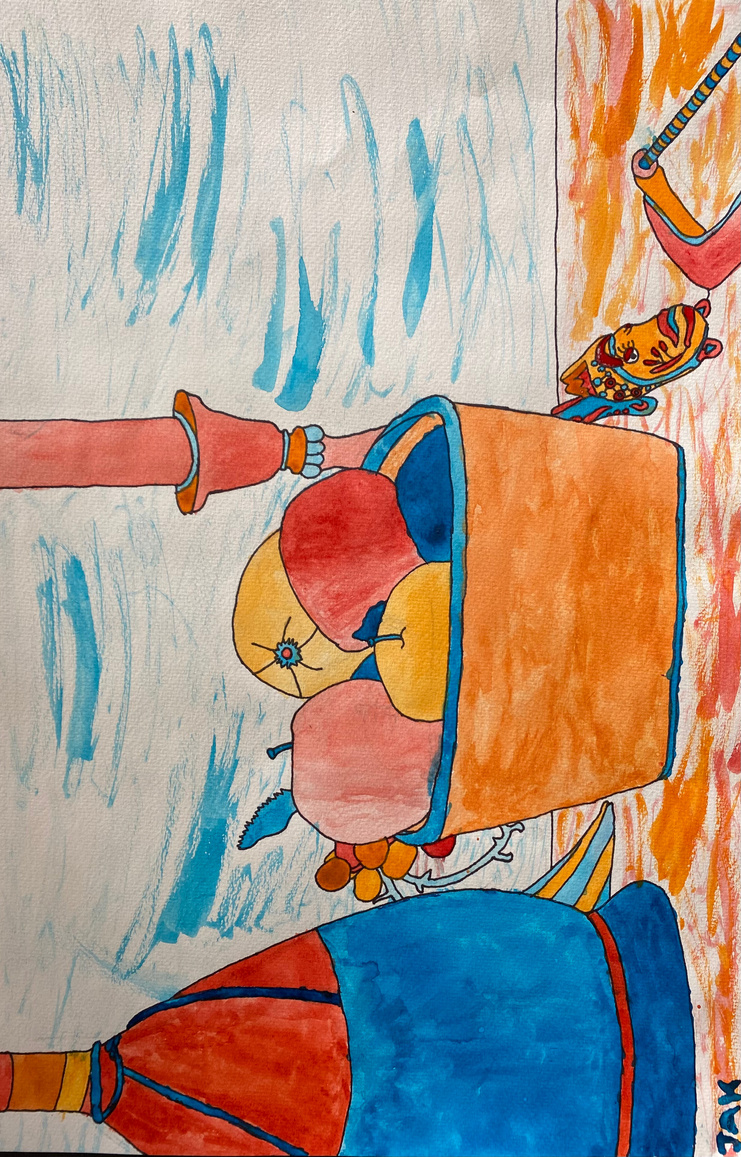
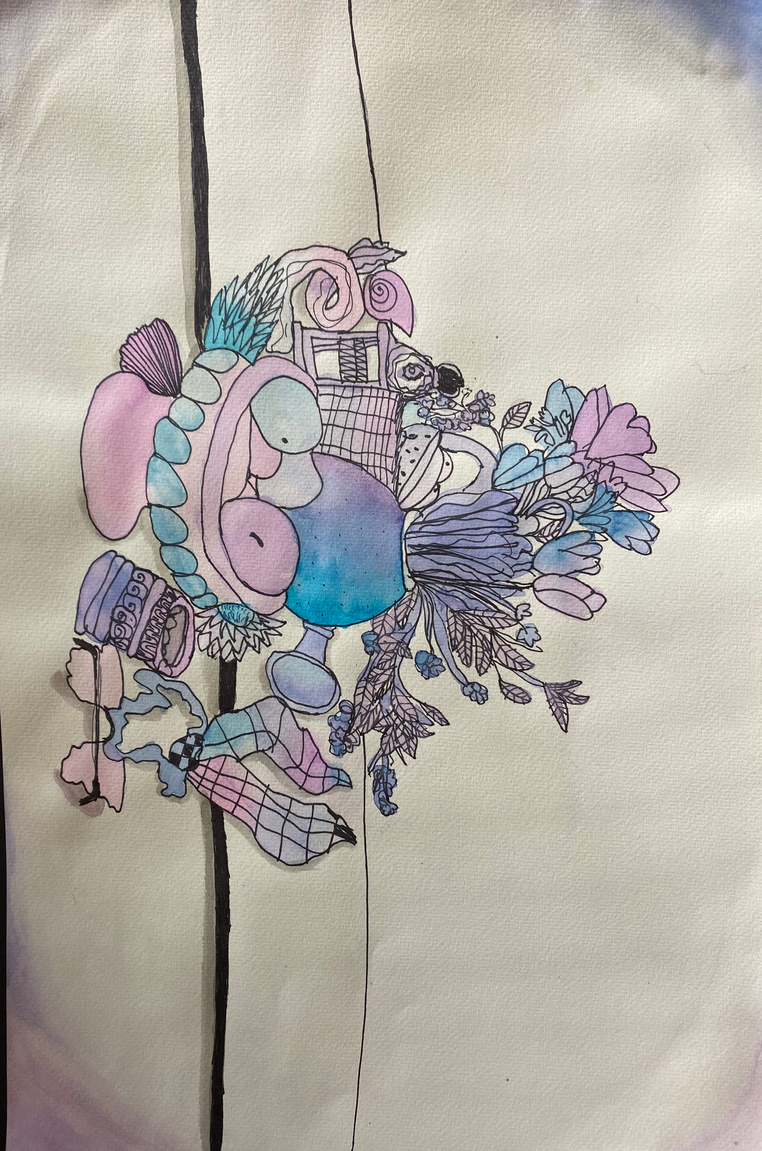
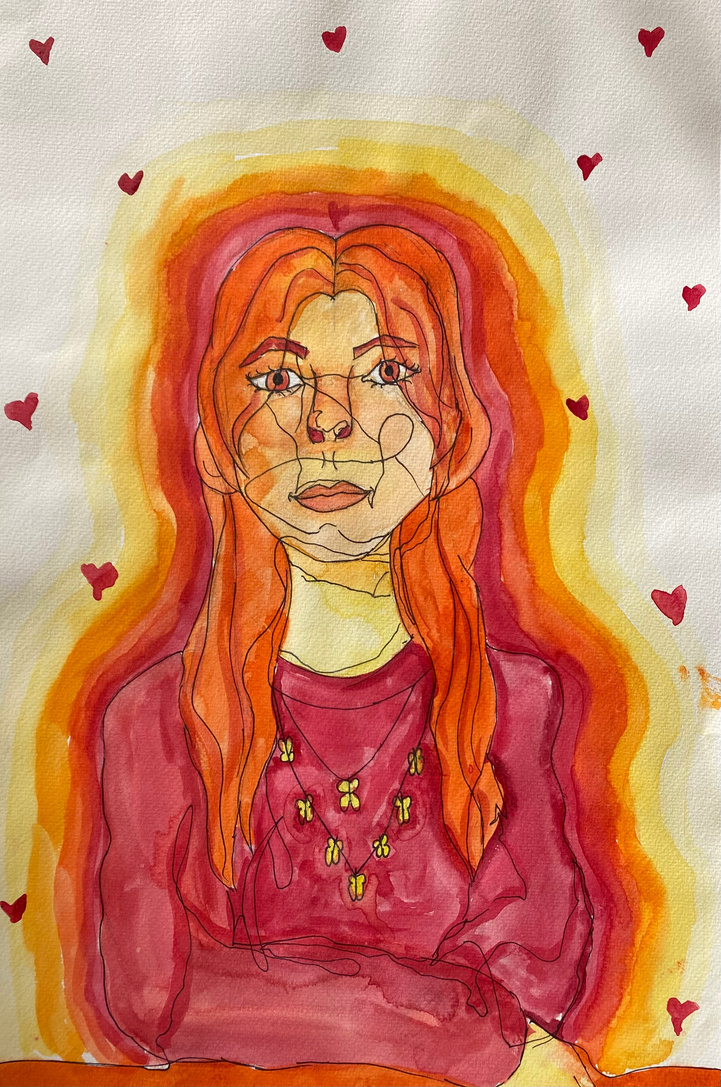
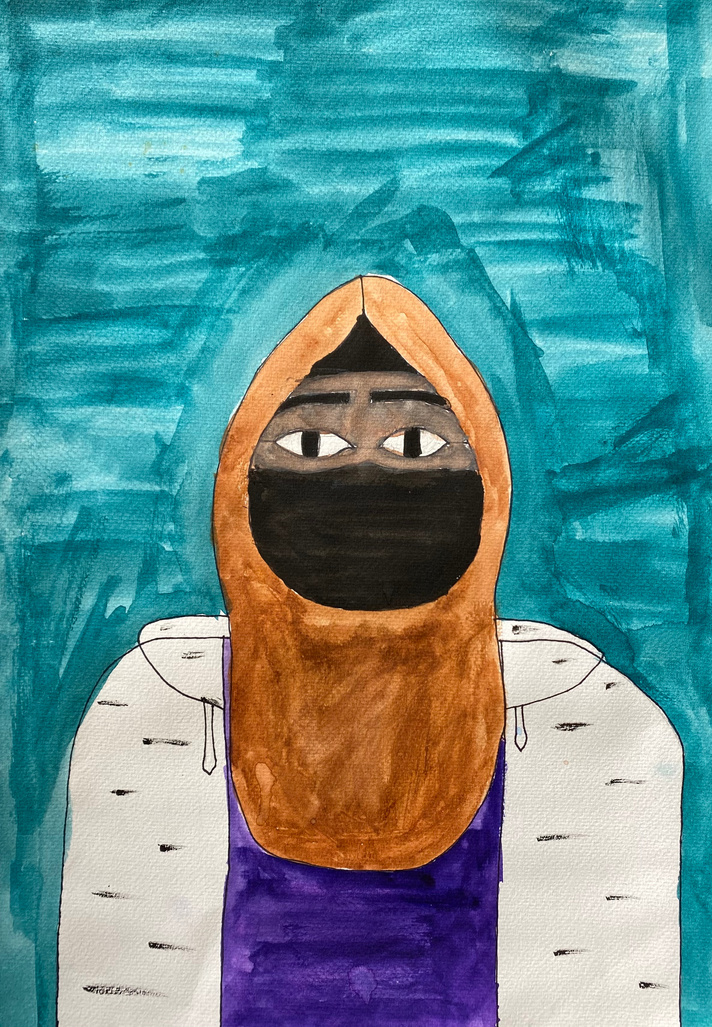

Reimagined Objects - Grades 5 + 6
These sculptures were done by 5th and 6th graders at a university-run youth arts program at SUNY New Paltz. Students were asked to choose an object and reimagine its use and function into something new and imaginative.
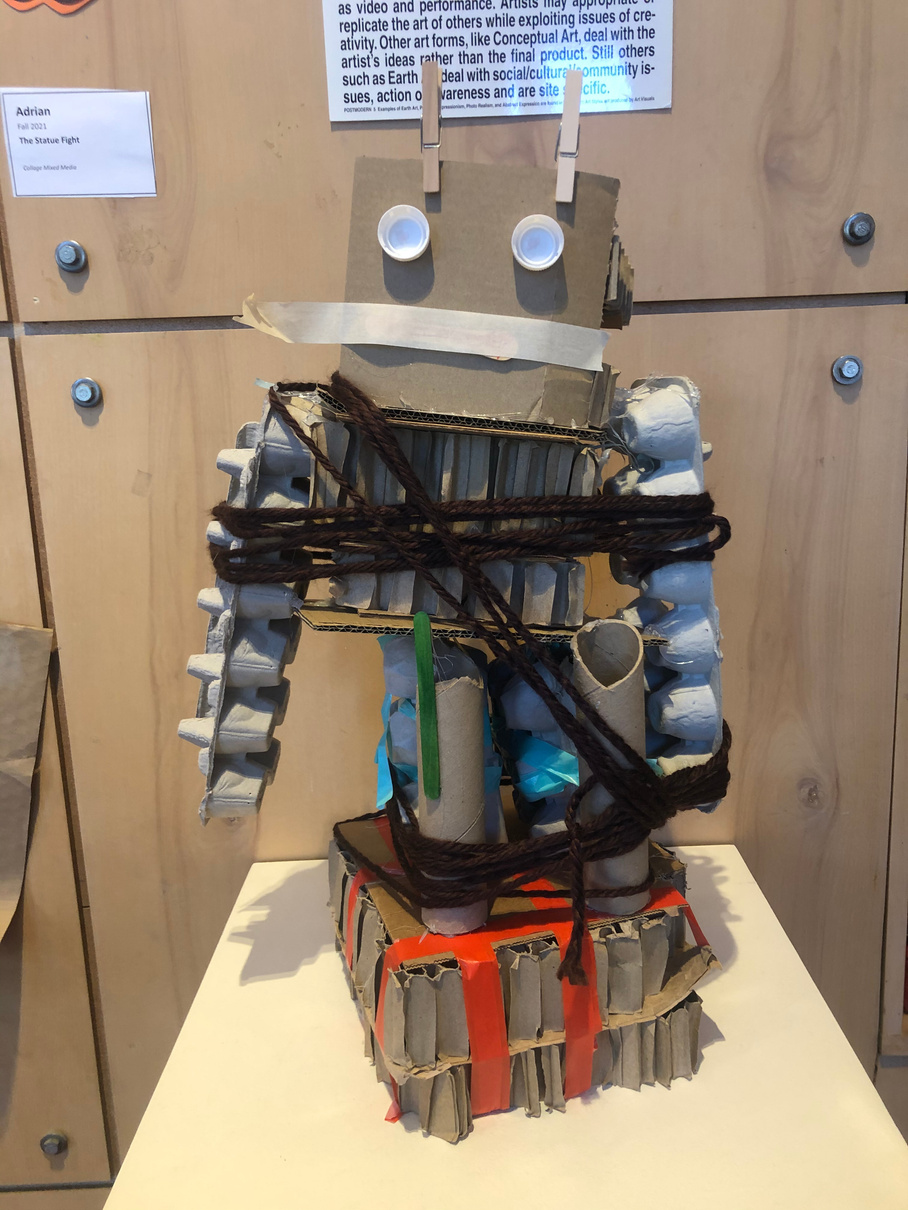
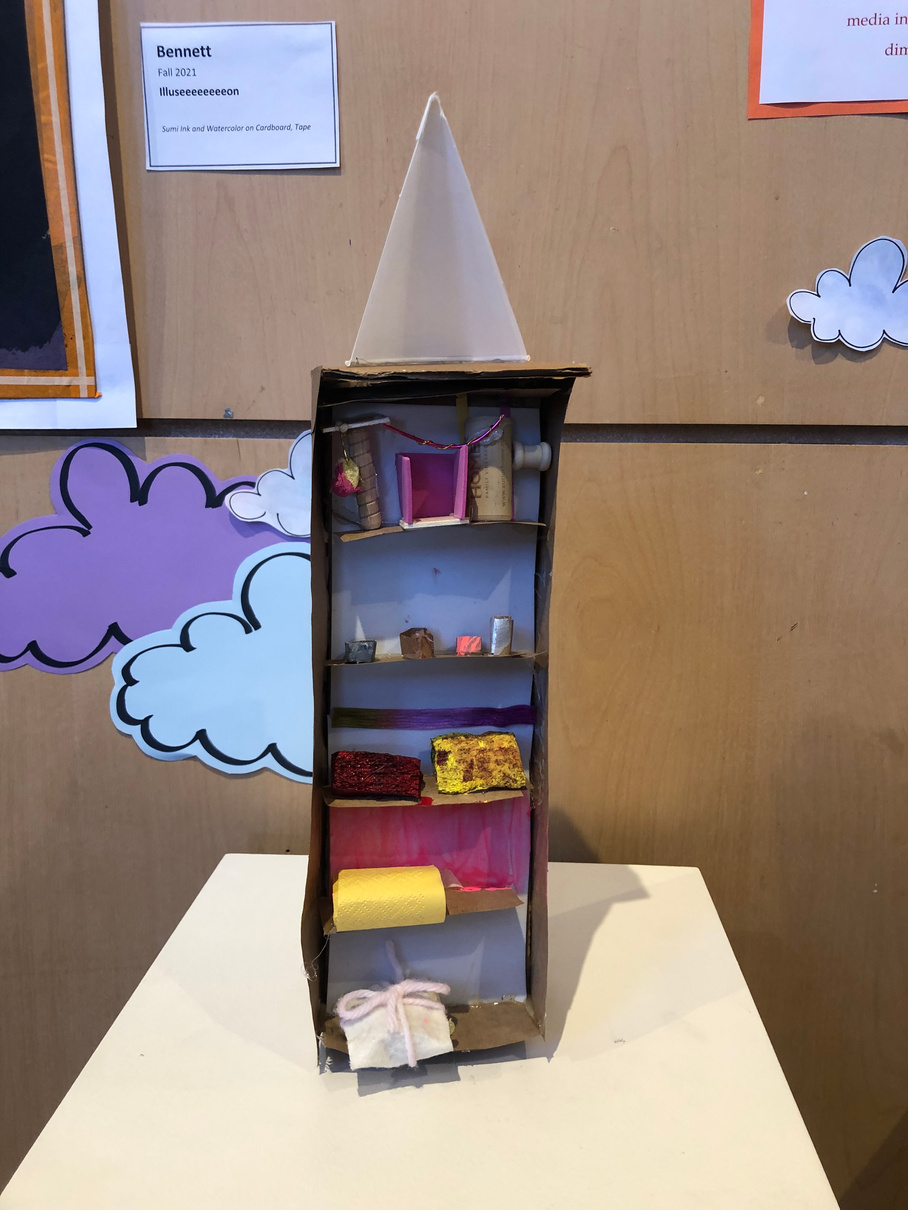
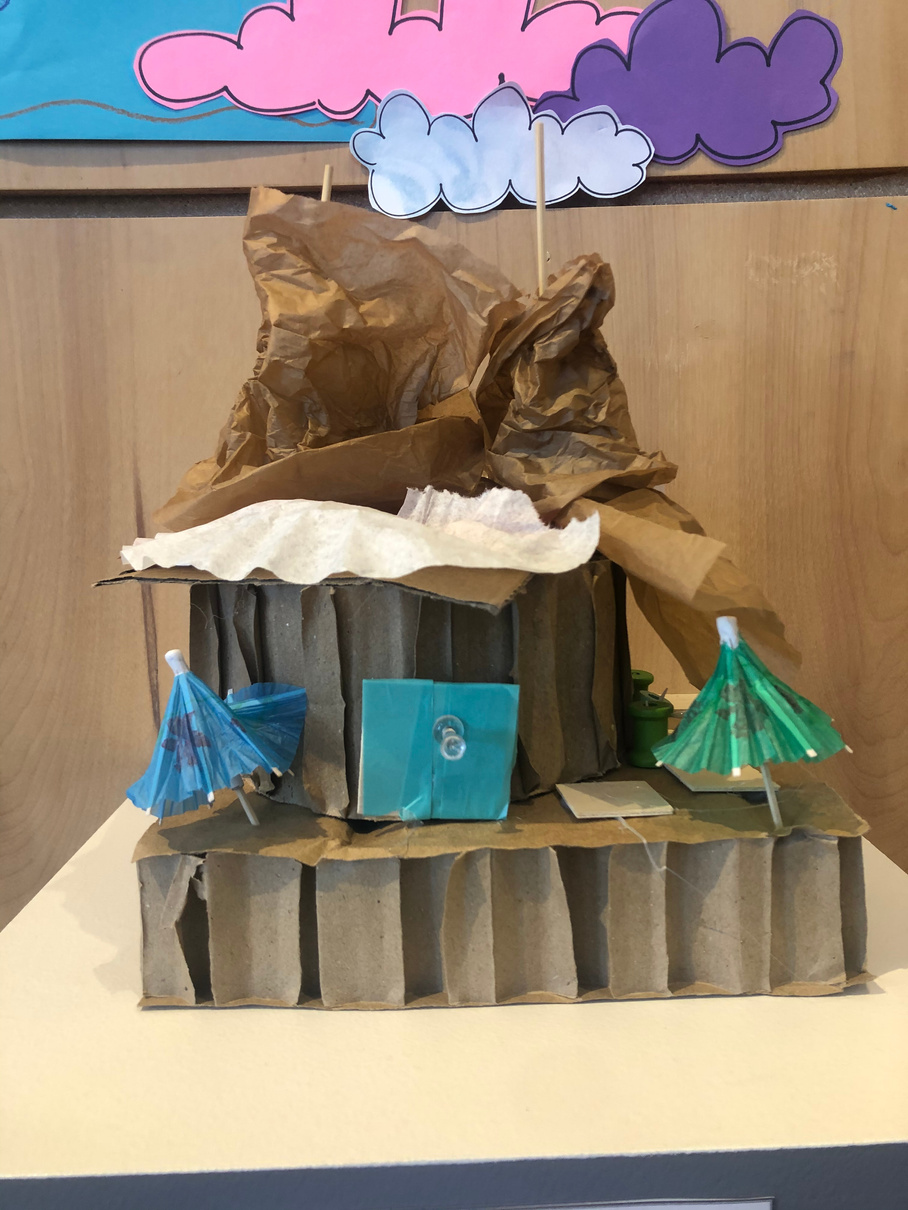

After learning about the Surrealism movement and practicing how to draw a hand, student were asked to plan a concept for a surreal hand and complete a drawing using ink.
Surreal Hand Drawings - Studio Art
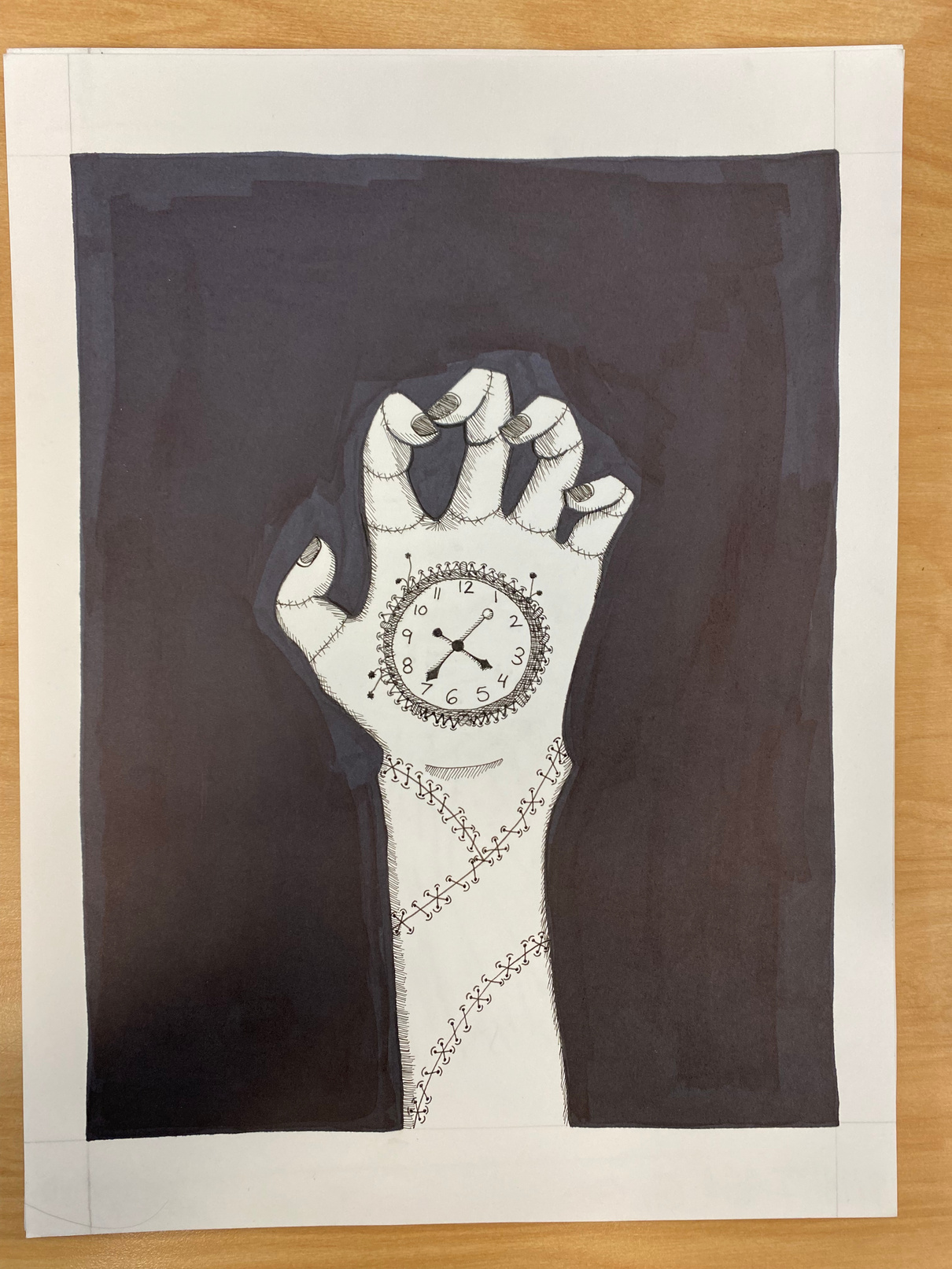
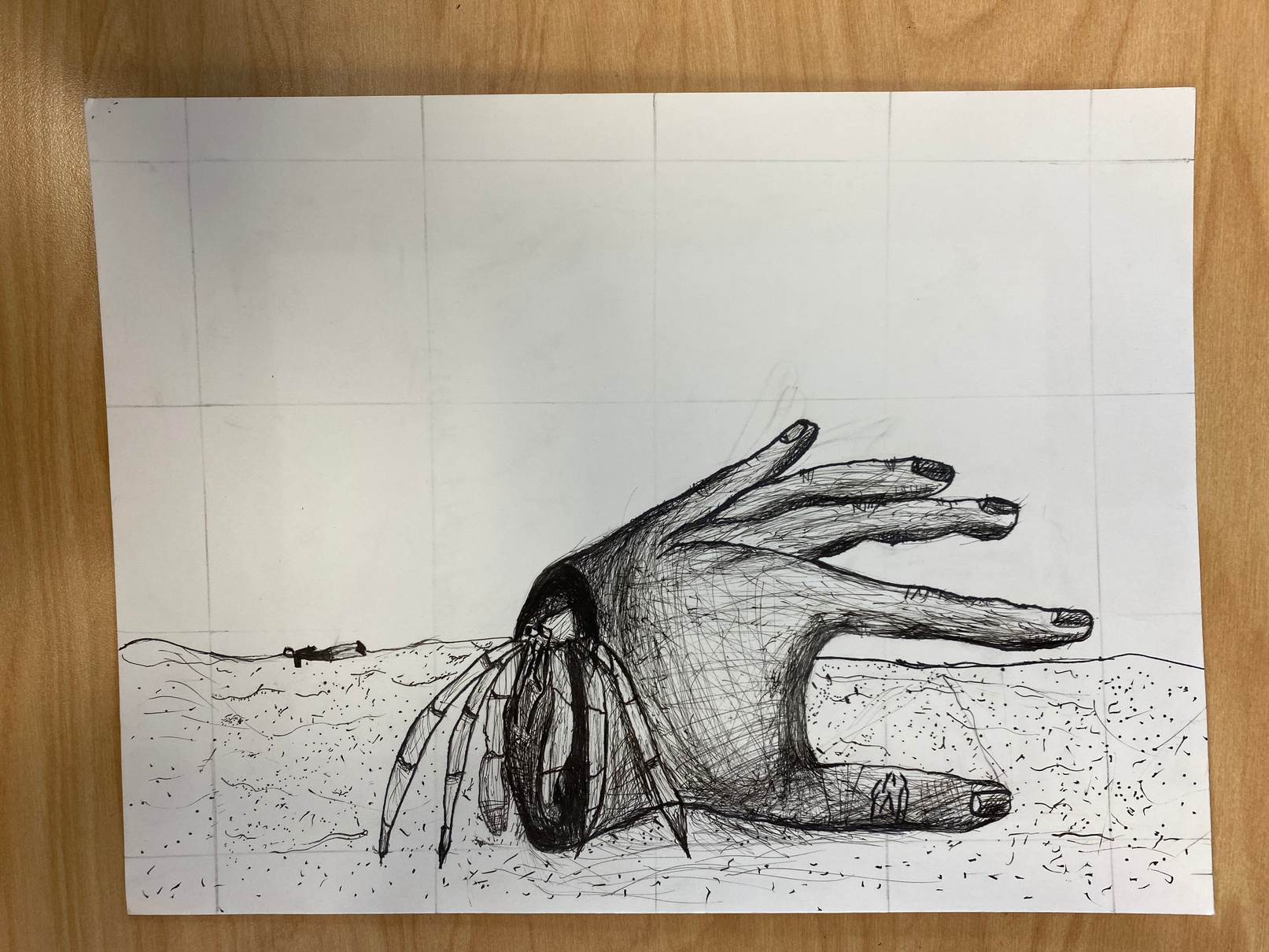
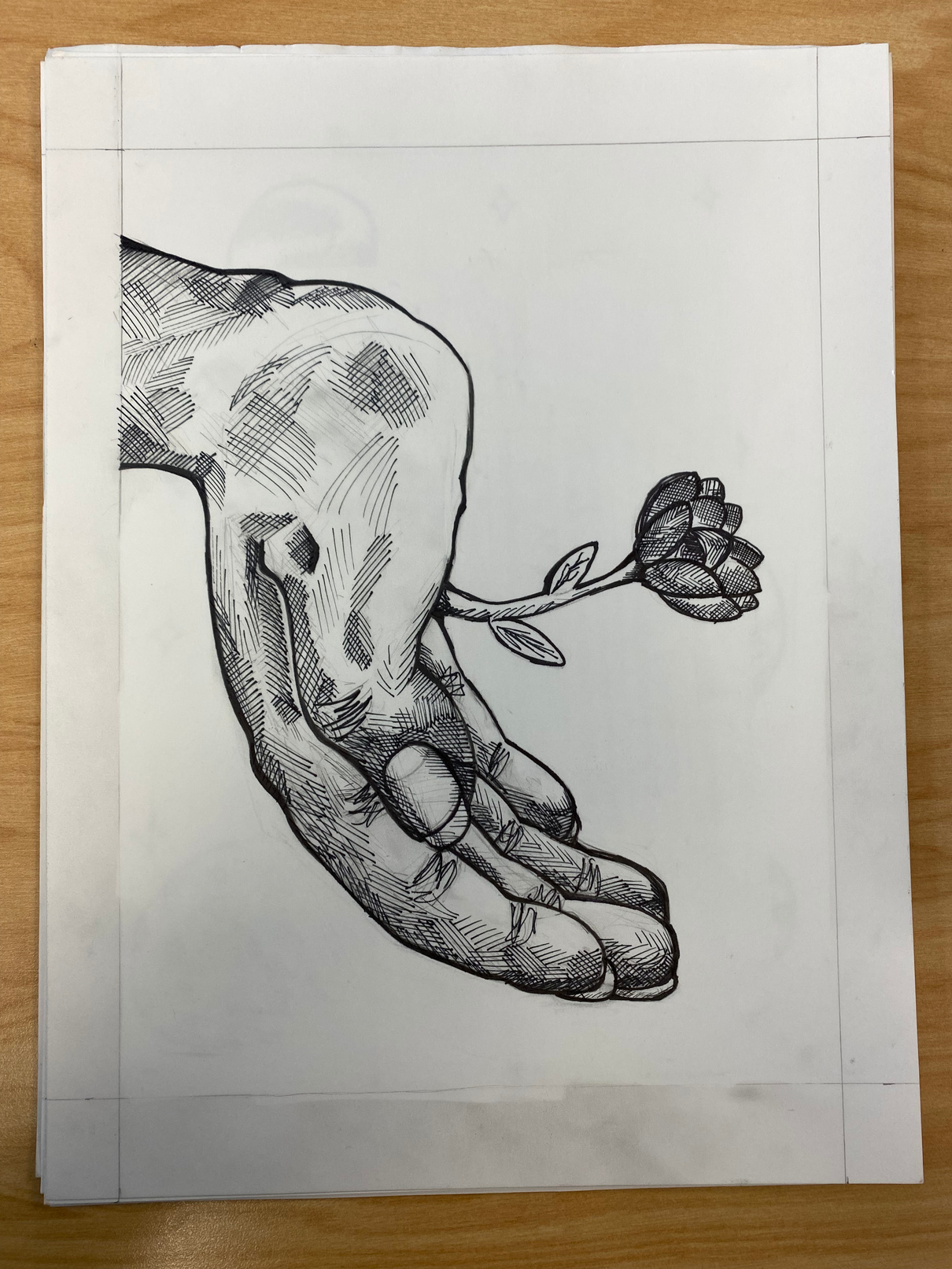

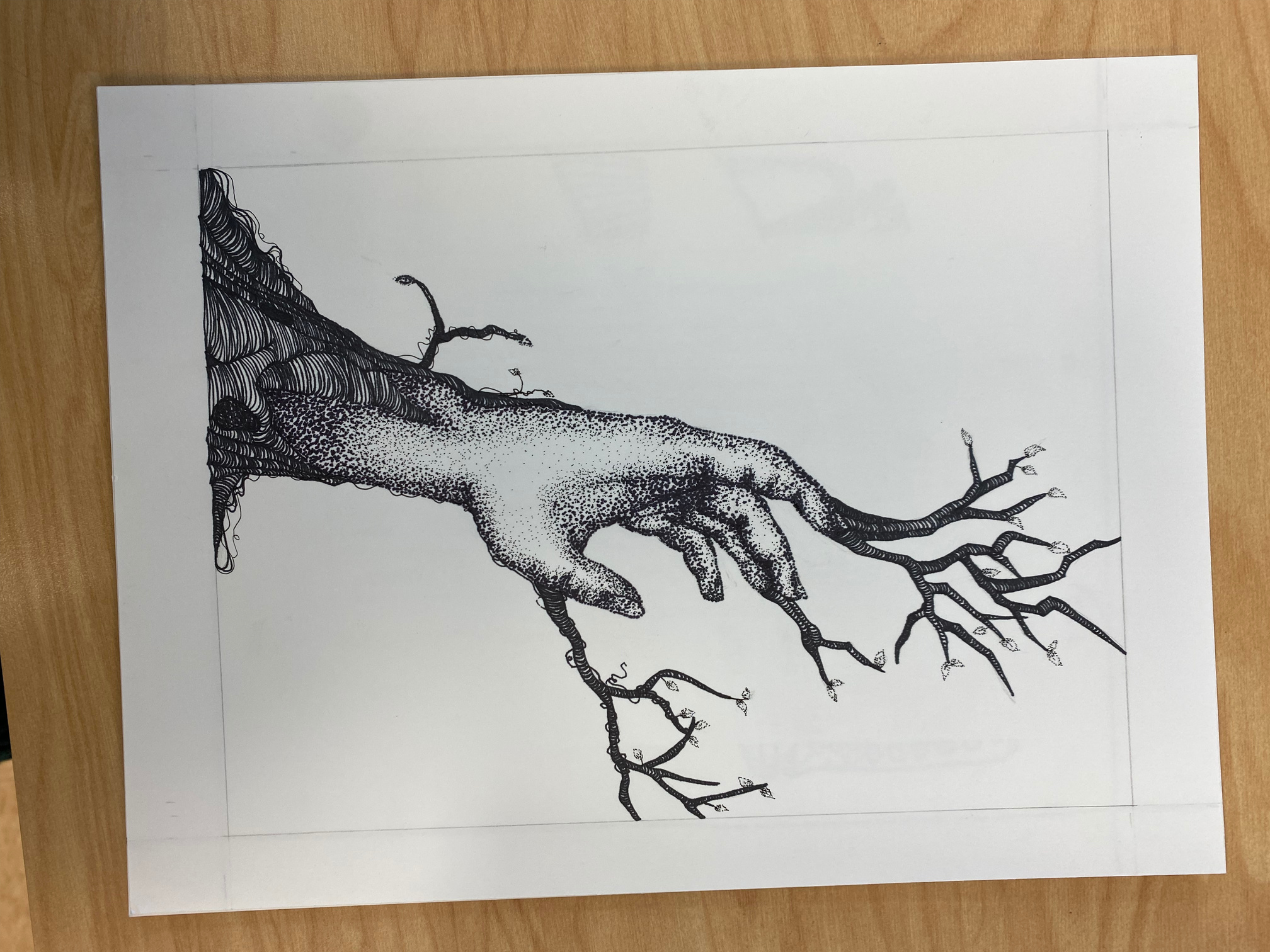
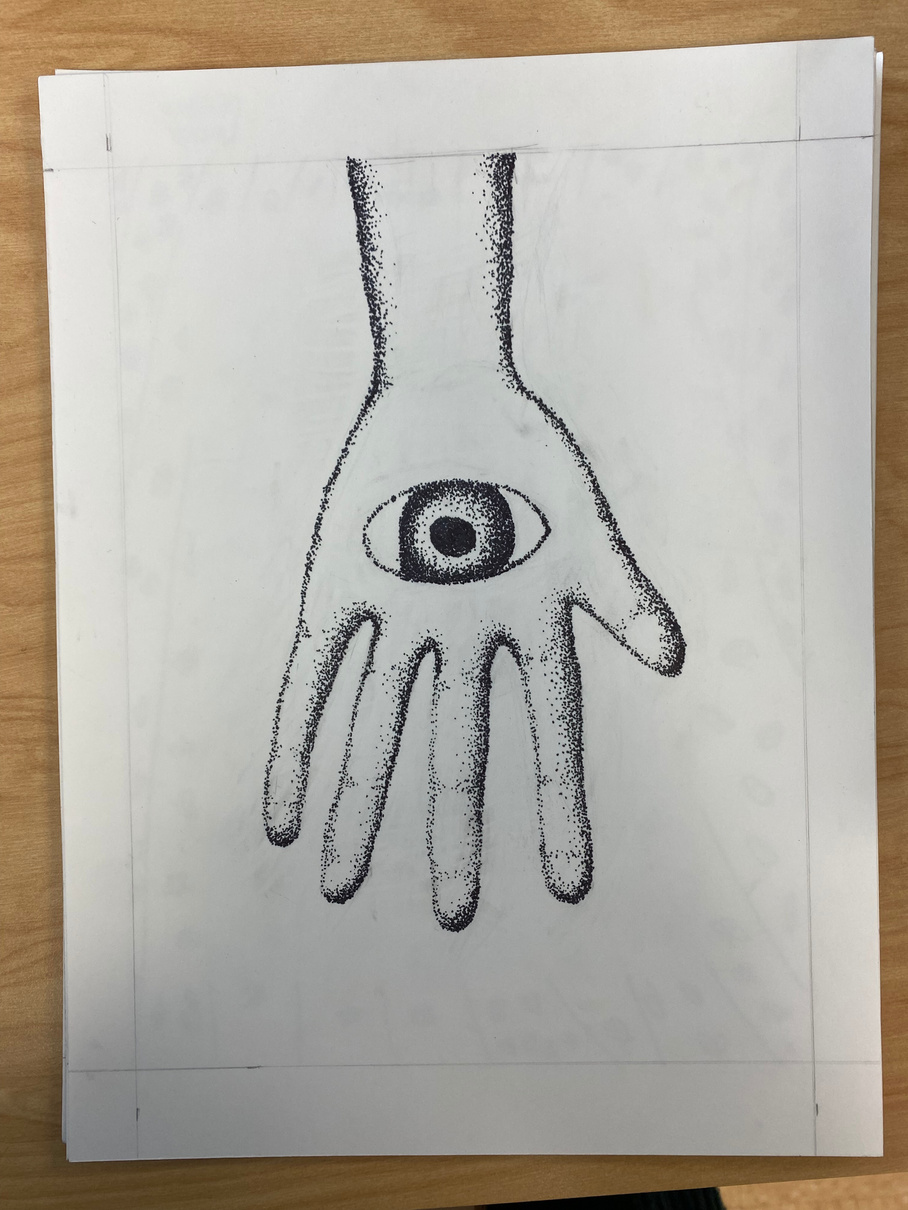
Students were asked to invent their own cereal and create a package design using Adobe Illustrator. Students then constructed their design using cardboard
Cereal Boxes - Advertising


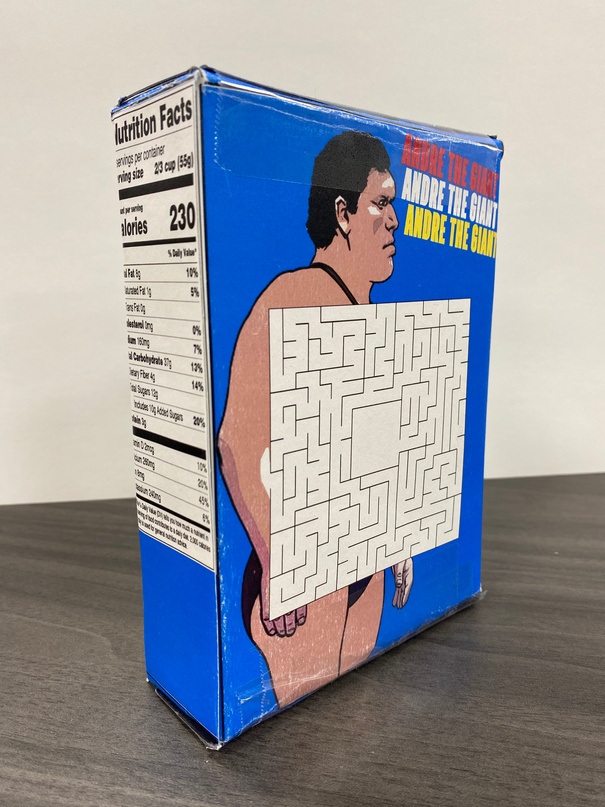
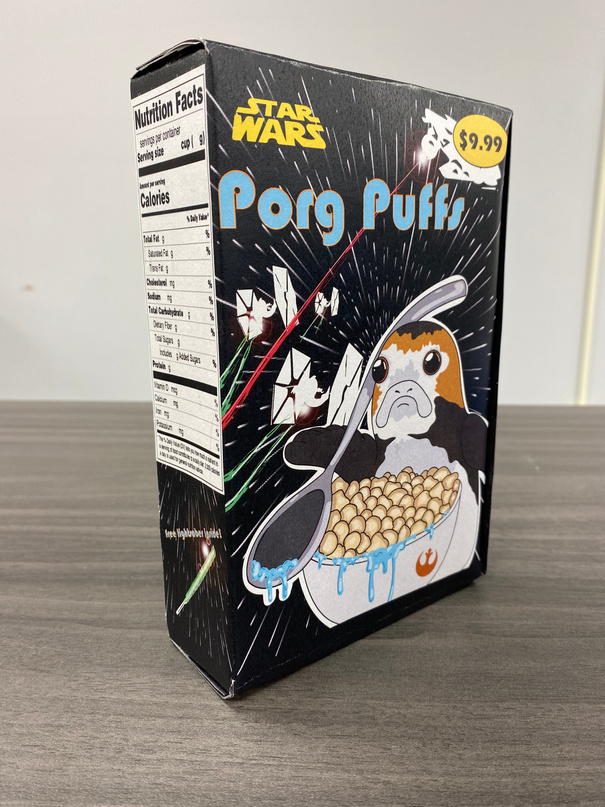
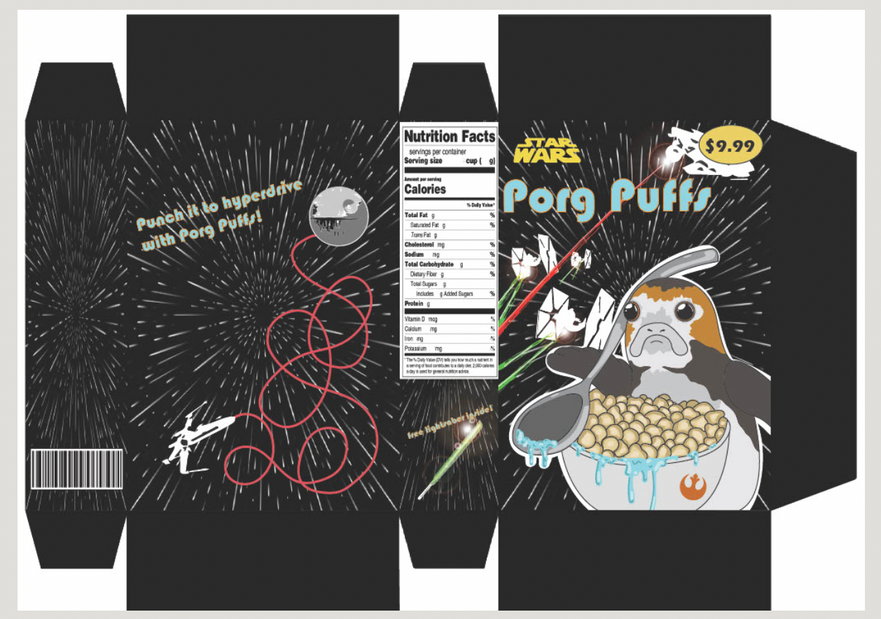
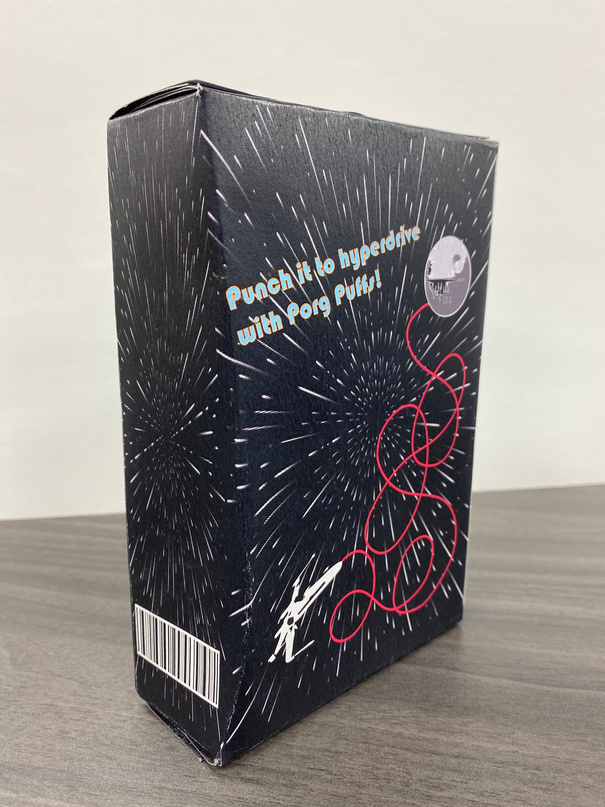
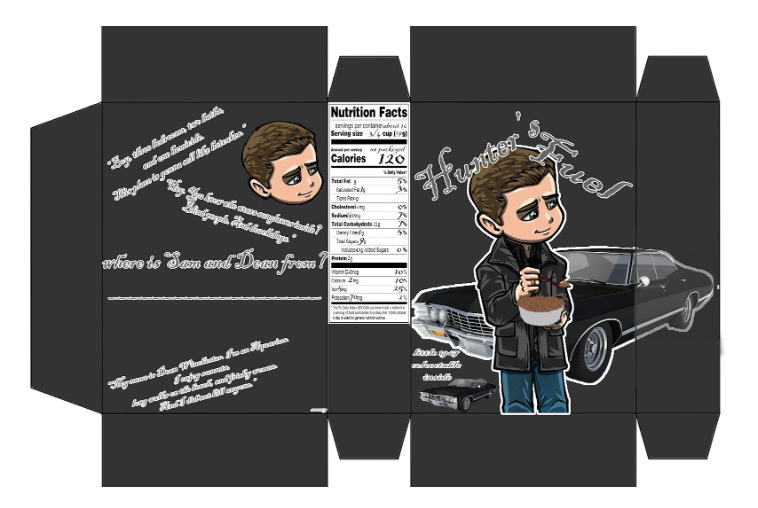
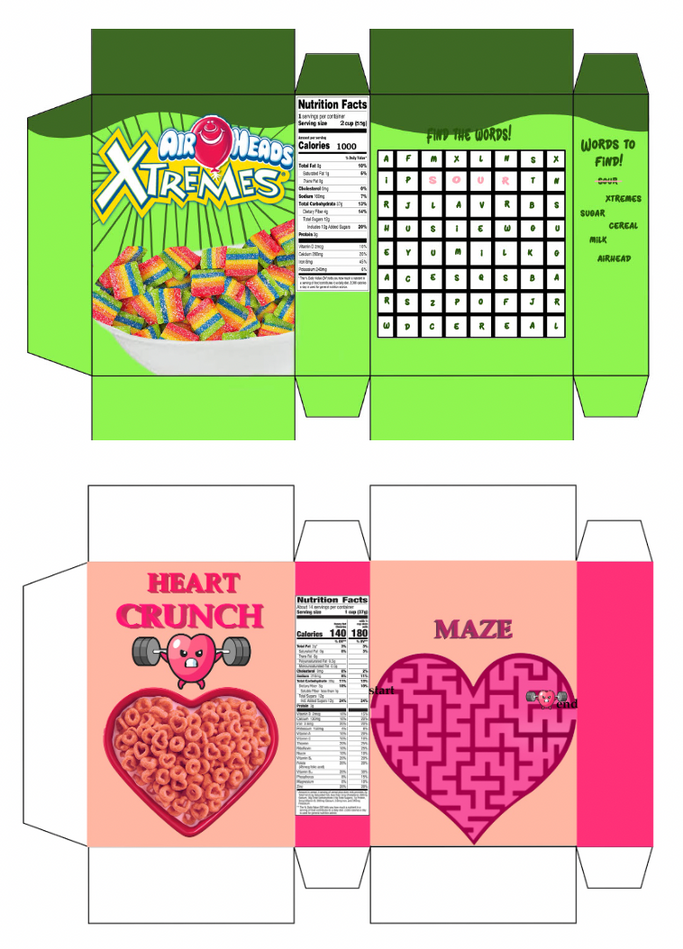
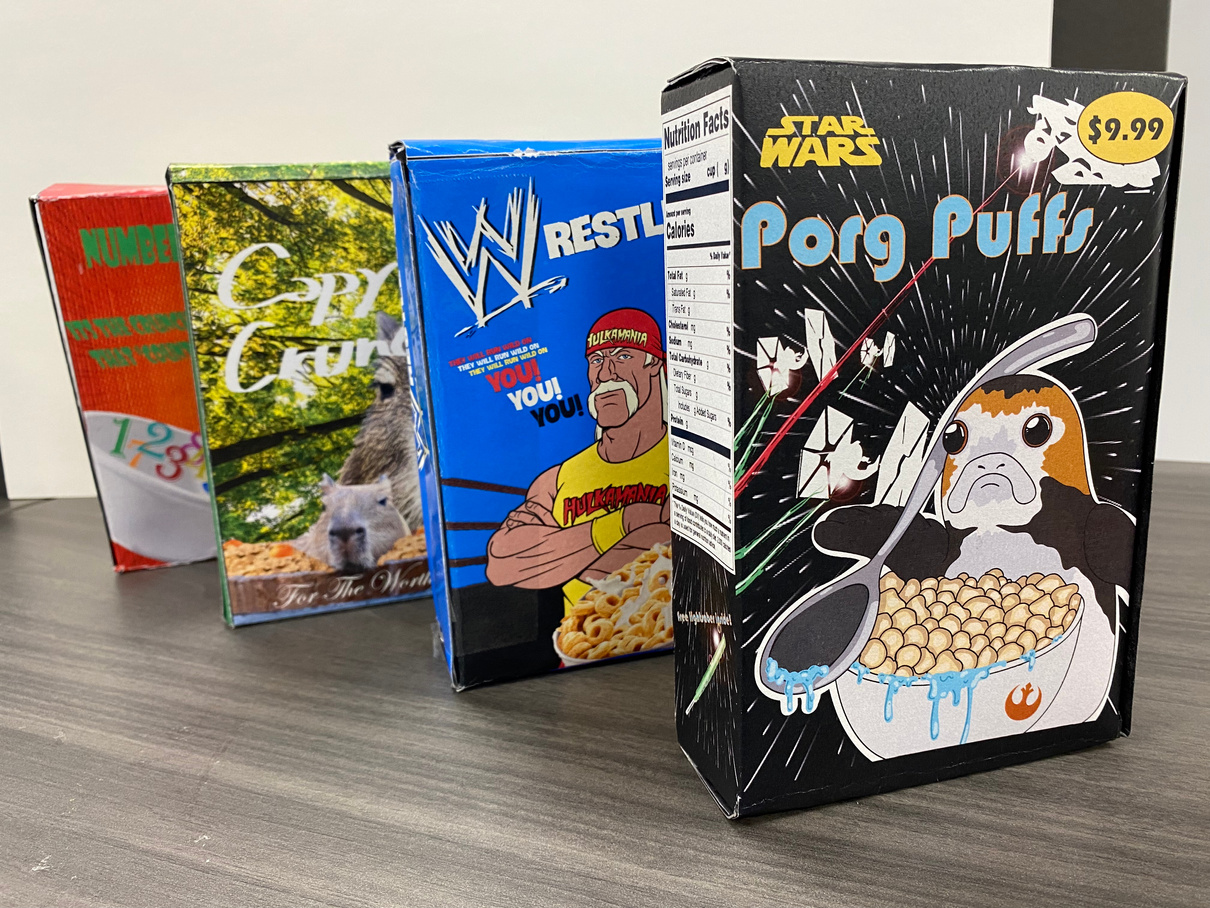

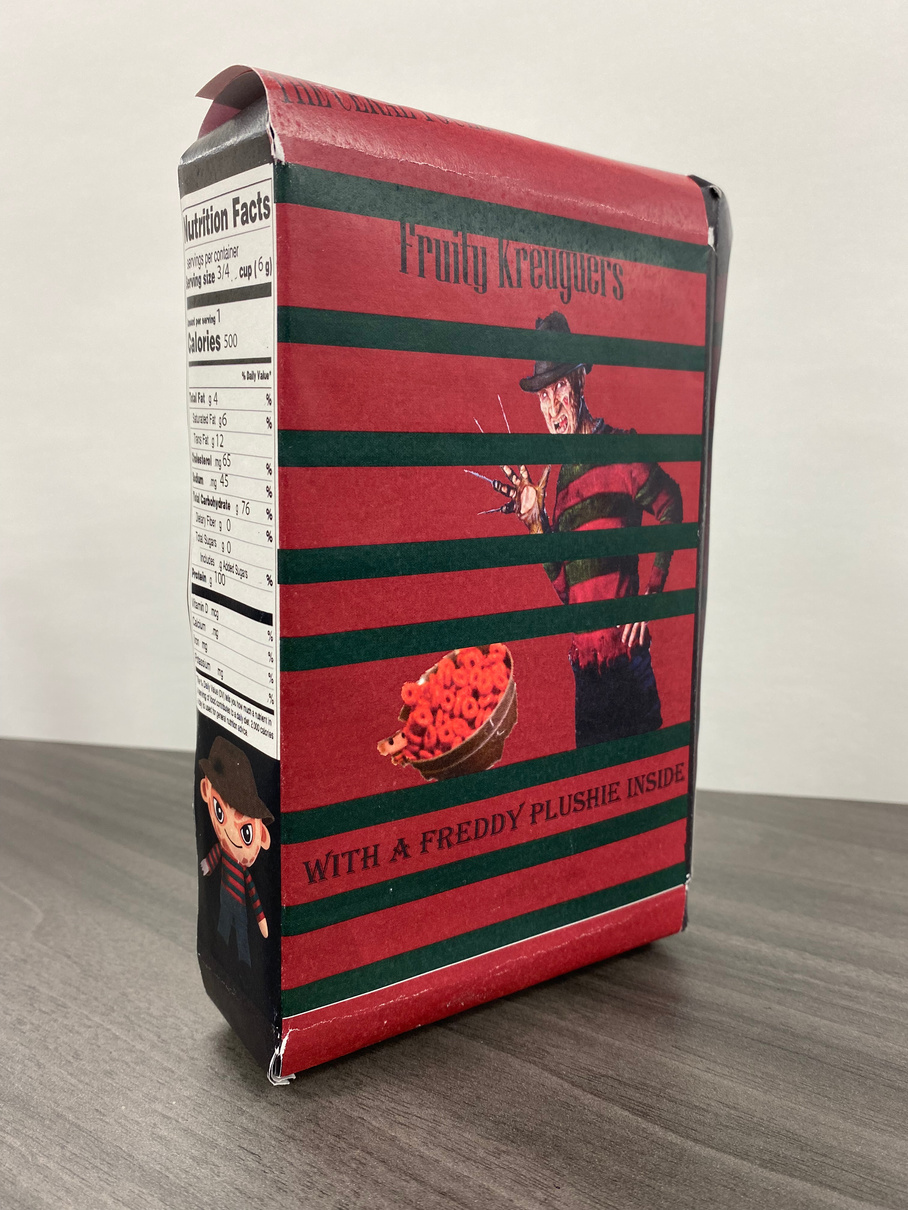
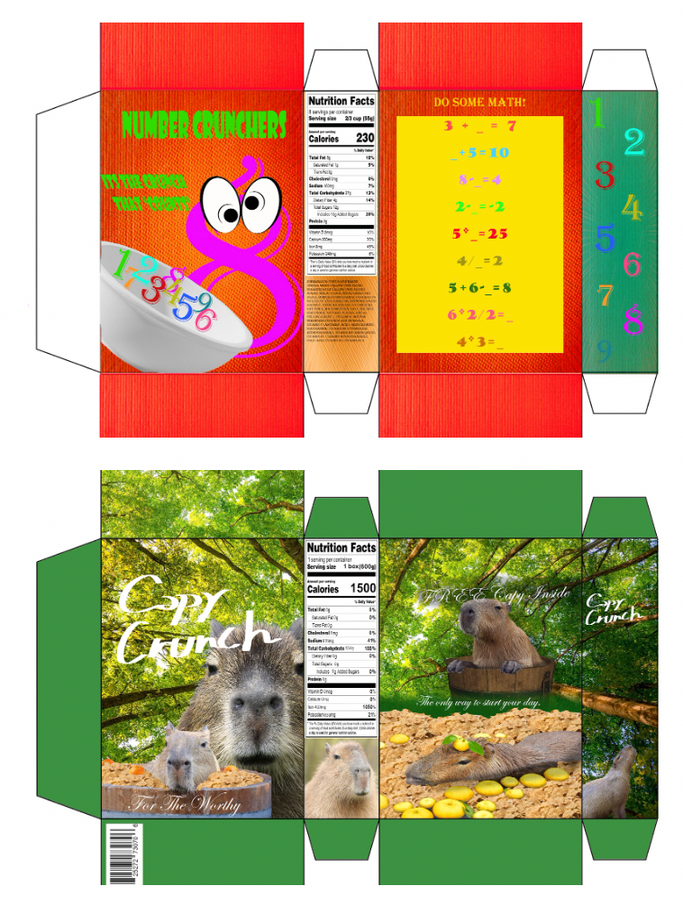
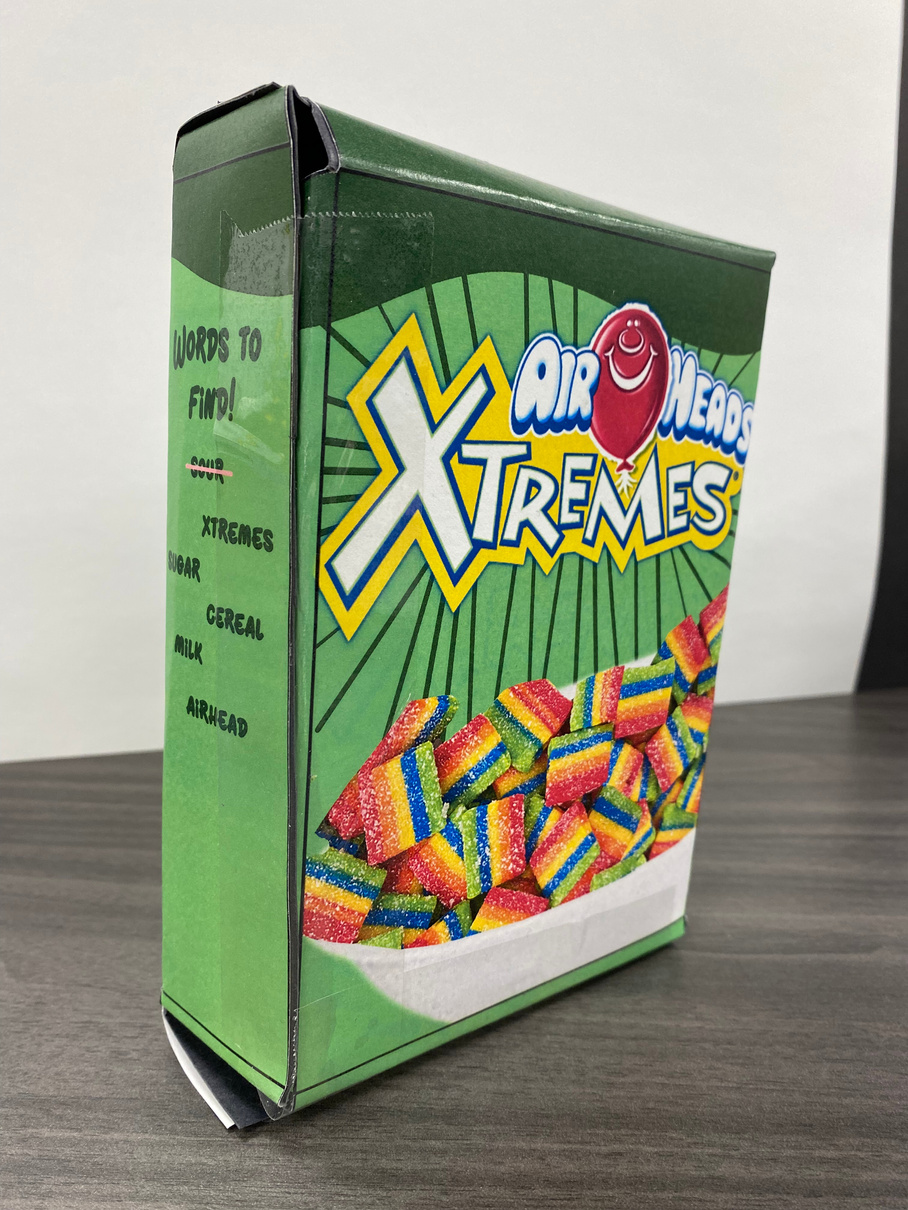
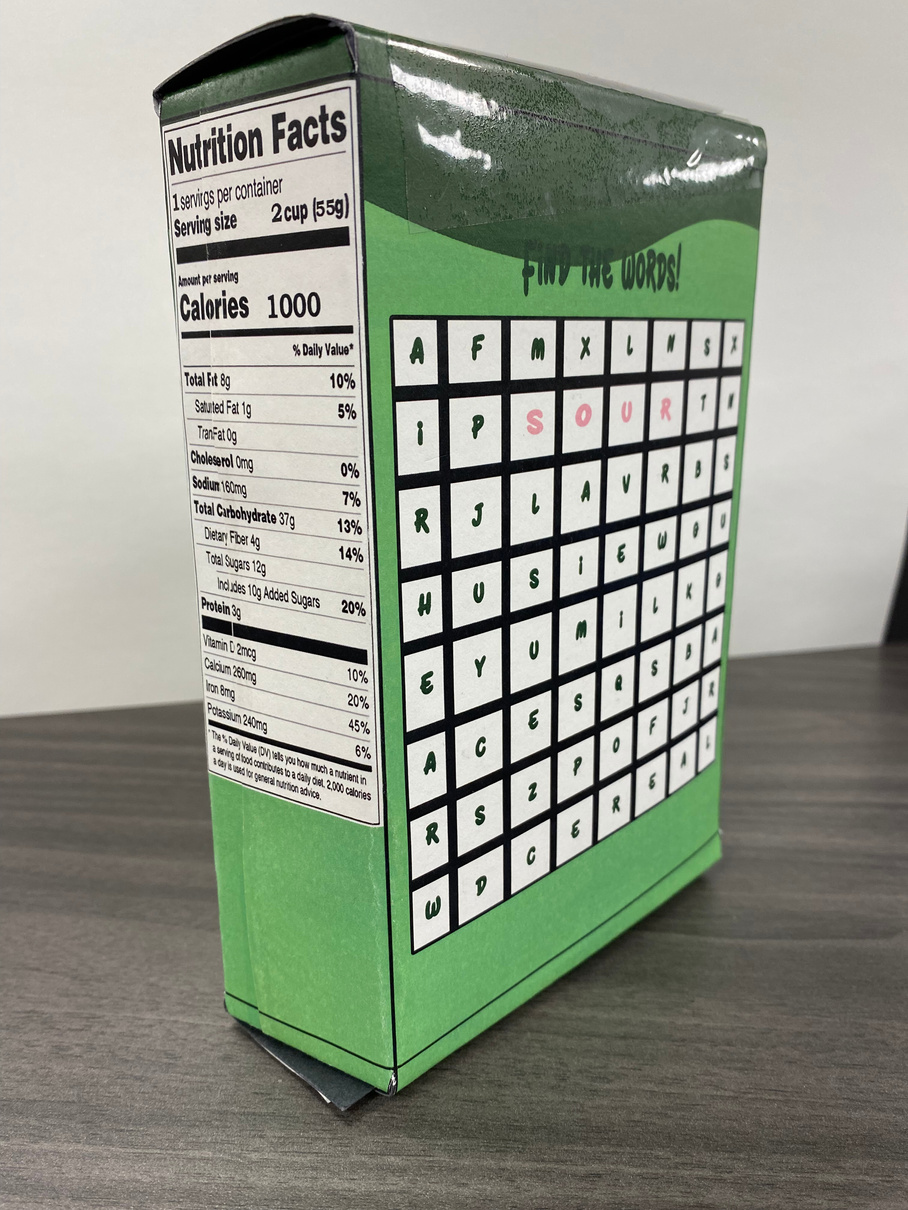
Students were asked to choose 2-3 songs from one musical artist and create 2-3 looping, short animations that are inspired by those songs that would attract a listener and enhance the music listening experience.
Spotify Canvases - Advertising

Summer Arts & Crafts
